- ~ Home
- ~ Camino Primitivo (The Original Way)
- Day Two, Escamplero to Doriga
Jump to Camino Primitivo Stages
Day Two on the Camino Primitivo, Escamplero to La Dóriga, 20.8 Kilometers (12.92 Miles)
Disclosure: the PilgrimageTraveler.com is an associate of Booking.com, Roamless, and Amazon. As associates of these merchants, we earn from qualifying purchases from our links.
On day two of our camino primitivo the challenge was about the juxtaposition of beauty and pain.
"The experience of communitas sustains pilgrims as they traverse through the physical discomfort as well as the psychological and spiritual pain so often a part of liminal experiences." ~ Pilgrimage - The Sacred Art: Journey to the Center of the Heart, Dr. Sheryl A. Kujawa-Holbrook
Despite our perception of fitness, coming from the mountains of Colorado, nothing prepared us for day two on the camino primitivo and what the pavement pounding would do to our bodies.
🙋♀️ Why Trust Us at the Pilgrimage Traveler?
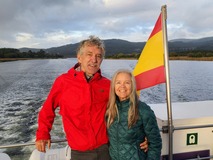
We’re not a travel agency ~ we’re fellow pilgrims! (See About Us)
We've trekked Pilgrimage Routes Across Europe since 2014!
💬 We’ve:
- Gotten lost so you don’t have to. 😉
- Followed waymarks in the glowing sunlight, the pouring rain and by moonlight. ☀️🌧️🌙
- Slept in albergues, hostels & casa rurals. Ate and drank in cafés along the way. 🛌 😴
- Created comprehensive and downloadable GPS maps and eBook Guides, full of must-have information based on real pilgrimage travels. 🧭 🗺️
- Shared our complete journeys, step by step to help YOU plan your ultimate pilgrimage and walk with your own Heart and Soul. 💙✨
Every detail is from our own experiences. Just fellow pilgrims sharing the Way. We have added a touch of spirituality, heartfelt insights and practical guidance from the road ~ offering a genuine connection to the spirit of pilgrimage. Tap into the wisdom of seasoned pilgrims!
Ultreia and Safe Pilgrimage Travels, Caminante! 💫 💚 🤍
While I was worried about our aging knees, it seemed that our wearing of elastic knee supports did nothing for the foot pain and shin splints that we both felt immediately upon embarking on our second days journey! This pain was to plague us all day.
Day Two Camino Primitivo Maps and Stats
The Primitive Way on day two was beautiful and our original goal was to get to the albergue in Cornellana. But as Caminos go, we were redirected and stayed in La Dóriga instead.
This turned out to be fortuitous for two reasons: because of our developing physical pain on day two of the Camino Primitivo and because as you can see below, the climb towards the albergue in San Juan de Villapañada is quite strenuous, especially if you are doing it at the end of a very long first day!
On our interactive map, created from our GPS tracks, note the first optional route to the historic site, the Termas Romanas, in orange, described in the text below. Also note the second optional route in orange to the municipal albergue in Villapañada. Please also note that the nearest open bar is in Paladín, 6.9 kilometers into the day.
Here is our elevation profile for the day. There is significant elevation change initially of about 200 meters (650 feet), first down, then climbing back up, with a 60 meter (200 feet) bump in the middle to Premoño, just after Escamplero.
We completed the day in La Dóriga, about 4.3 kilometers onward from the turnoff to the albergue in San Juan Villapañada, 1.5 kilometers before Fresno. This section included a 320 meter (1050 feet) climb from Grado to the Alto del Fresno, before descending 230 meters (750 feet) into La Dóriga.
We could have easily descended 3.5 more kilometers to Cornellana and the parochial albergue on this day, but we do not regret our choice of the wonderful little albergue, the Acogida CáPacita in La Dóriga. See father below for photos and description of it.
👣 Camino Primitivo EBook: Offline Guide with Bonus Routes
Walk smarter with our ad-free, beautifully formatted Camino Primitivo eBook Guide, perfect for offline use. Includes daily stage details, stunning photos, and bonus routes to the one-of-a-kind Santa Eulalia de Bóveda temple, Montouto’s ancient neolithic stones, and a weather-safe alternative to the Hospitales Route via the Río Nisón detour. Our eBook Guide is unique because it's our personal journey, told with heart.
📲 Instant download. 💸 Money-back guarantee. 🔄 Free updates for 1 year.
👉 Click here for more info OR BUY NOW to begin your adventure today!
Jump to Camino Primitivo Stages
The Journey
As we left the municipal albergue in Escamplero, we timed our departure perfectly, for viewing the sunrise. The air was fresh this August mountain morning, and the sky was aglow with the dawn-light (around 7:30 a.m).
After the magnificent sunrise and moment-capturing through the lens of our camera, we began the long descent toward Premoño. We soon discovered that the long downhills, while easy on the lungs, killed our lower legs.
While we knew this from hiking many, many mountains in Colorado, doing it on pavement, was indeed another story! Our bodies were just not prepared for the pounding on the pavement of the AS-372. Thank God the scenery was beautiful, the morning was fresh and the sunrise fantastic!
I breathed deeply and focused my intention on gratefulness that I could feel this pain! It could be much worse - I could be handicapped and unable to have this experience! I felt alive and well!
After approximately 1/2 kilometer, the Camino leaves the AS-372 for this quiet lane, below, with enchanting walls on each side.
As we descended downhill on the pavement, I focused on using my poles as much as I could to take my weight off my lower legs.
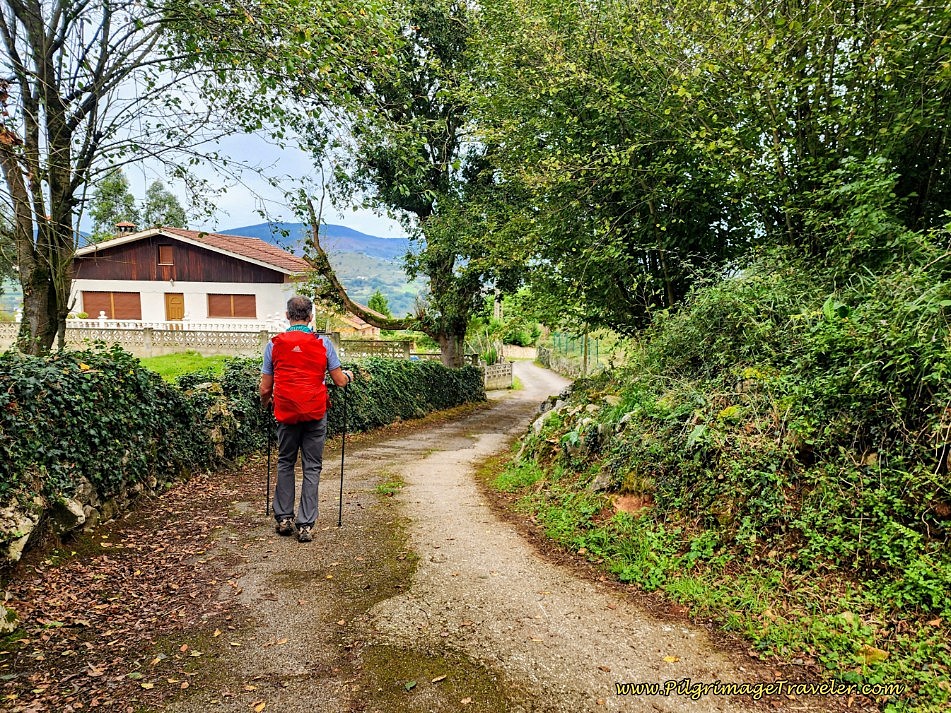 The Descent Towards Premoño
The Descent Towards PremoñoI noticed that the balls of my feet, just below my toe pads really started to hurt on this stretch as well. My right foot hurt worse than my left. Somehow I must have been striking harder on the pavement with my right foot. I tried to intentionally lighten my right foot strike.
When the pavement suddenly ends, follow the dirt lane to the left, below.
400 short meters total on the lane, and you will come to a T-intersection with the AS-372 once again. Turn left.
After about one kilometer beyond the albergue in Escamplero, along the AS-372 and after entering the small village of Valsera, we came upon a small pilgrim chapel, the 15th Century Capilla de Fátima, pictured below. We stopped for a short while to look at the chapel. Unfortunately, it was locked.
I had set an intention, that every little chapel that I would come across on my Camino, that I would stop, and at a minimum, say a little prayer of gratitude, for my journey and all that was available to me.
Down the hill from the chapel, look for a turn to the left off the AS-372 onto a paved side road and an almost immediate left again, picking up a quiet lane with a high wall on the right, below.
Continue on a strong descent on this quiet, paved lane as you meander through the countryside for the next 900 meters.
Next, after about two kilometers total for the day, you are directed to turn to the left, onto this dirt, tractor lane, below.
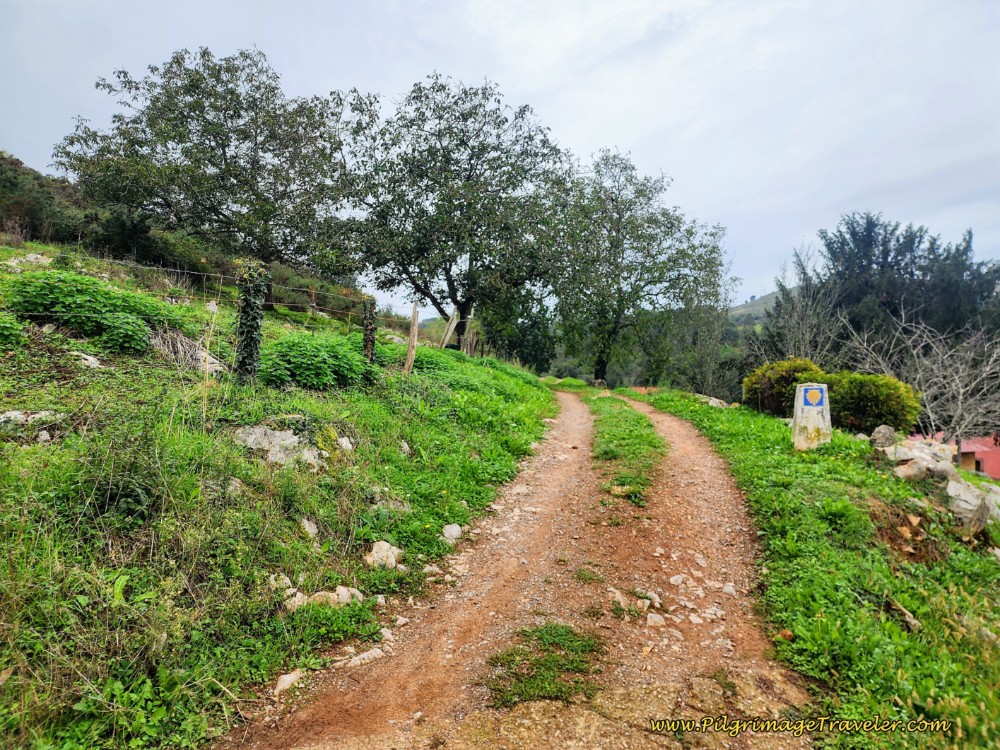 Pick Up Dirt Tractor Lane at Farm
Pick Up Dirt Tractor Lane at FarmThis off-pavement lane was a sweet relief for my aching feet and shins! After not quite 300 meters, you will take a left turn up the hill, shown below.
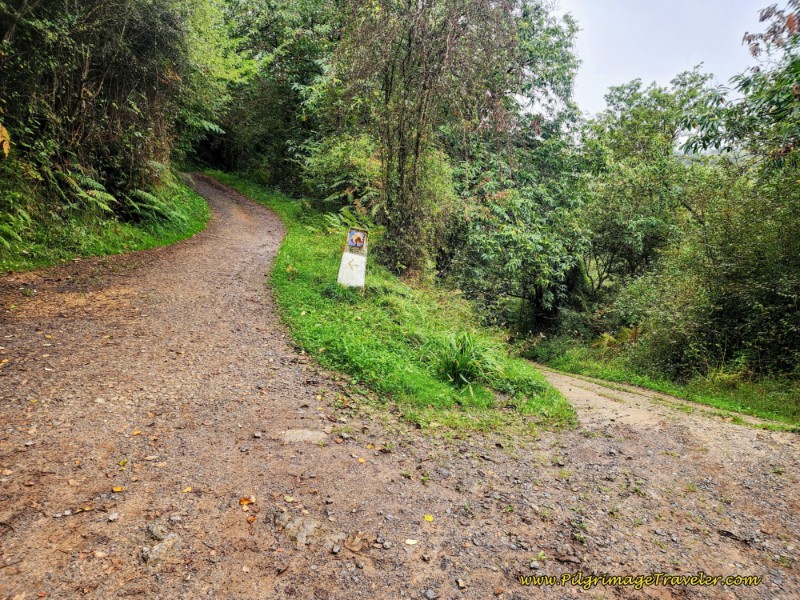 Left Turn Uphill on Another Lane
Left Turn Uphill on Another LaneThe glorious blackberries were everywhere, lining the path, also a welcome relief to our aching stomachs that had not yet had any breakfast. Rich harvested our berry breakfast!
Then, deeper into the countryside we went. After the turn above, drop into a lovely, cool forest, below.
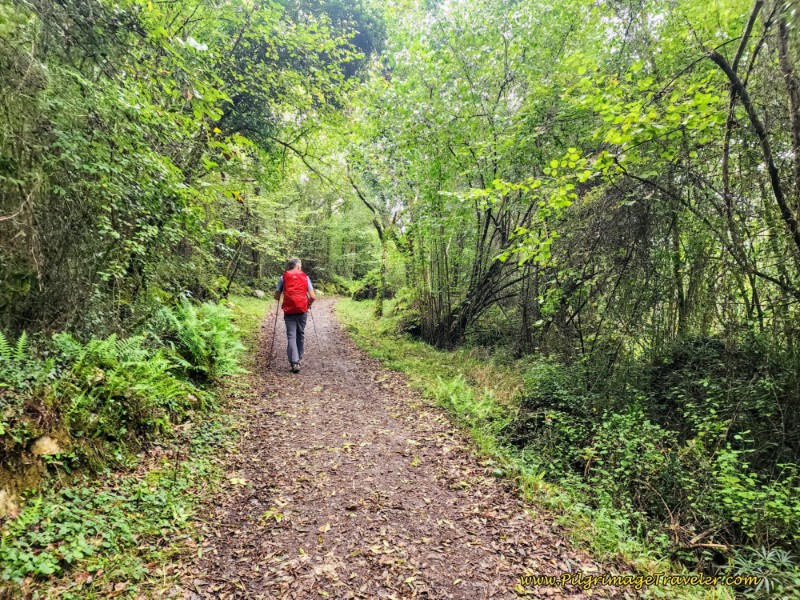 Enter Lovely and Cool Forest
Enter Lovely and Cool ForestFarther along the forest opens, as you continue on this 1.2 kilometer long dirt lane.
A distance later, you will cross a creek on a nice bridge, which marks the end of the long descent.
After about 3.5 kilometers total for the day, the country lane ends at a T-intersection with a paved road, and begins a small climb into the next town of Premoño, below. You can see the casual pilgrim’s path to the left side of the road.
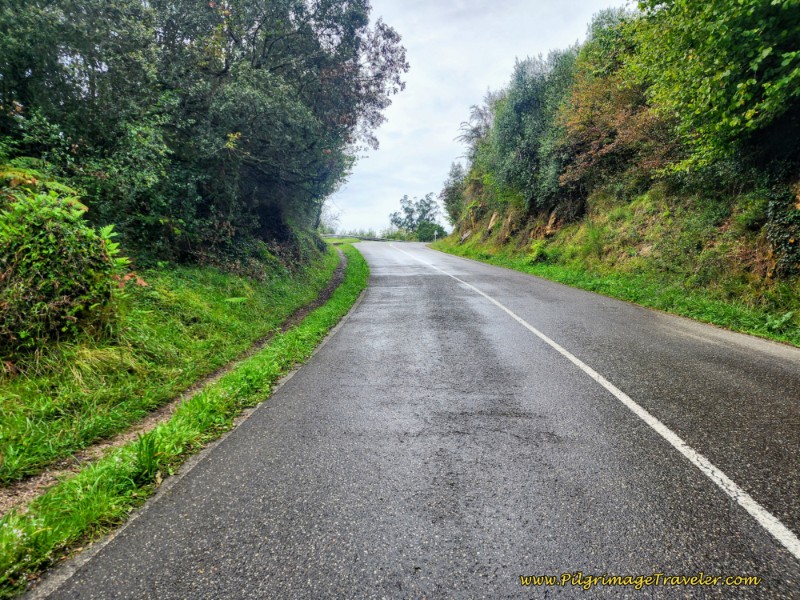 Pavement Towards Premoño
Pavement Towards PremoñoThis uphill portion gave our sore shins, a needed break from the downhill pounding. The uphill was most definitely easier on the shins!
After 4.2 kilometers into the day, in the heart of the hamlet, the Capilla of Santa Ana de Premoño greeted us, below. We filled our hearts with gratitude.
Jump to Camino Primitivo Stages
Unfortunately, there are no services in town.
Just after the Capilla de Santa Ana, you crest the top of the small hill climb and begin another descent as you walk through town. About 350 meters after the chapel in Premoño, the Primitive Way again turns onto a path to the right at a raised hórreo, below.
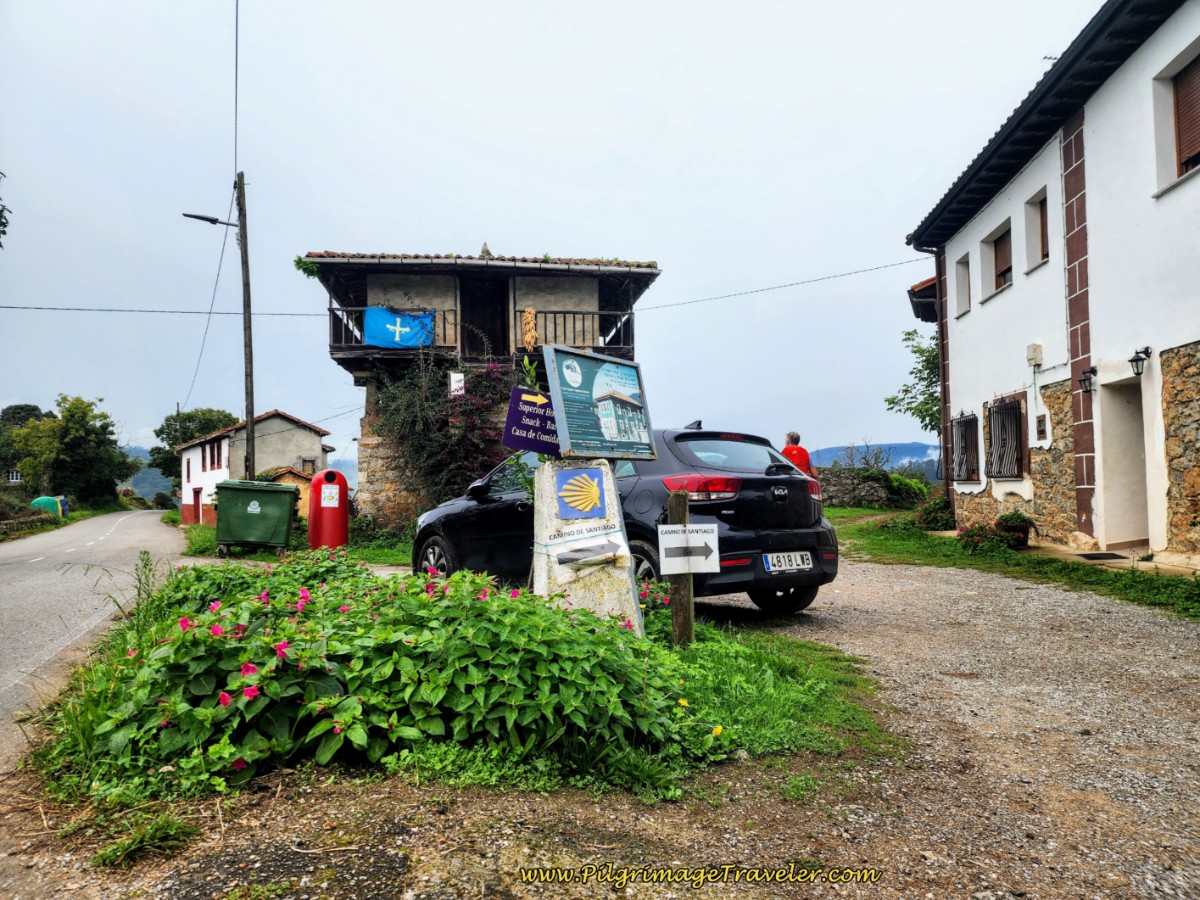 Right Turn at Raised Hórreo
Right Turn at Raised HórreoContinue to descend on the path as it soon widens and appears to be yet another ancient road that you are walking upon, see below.
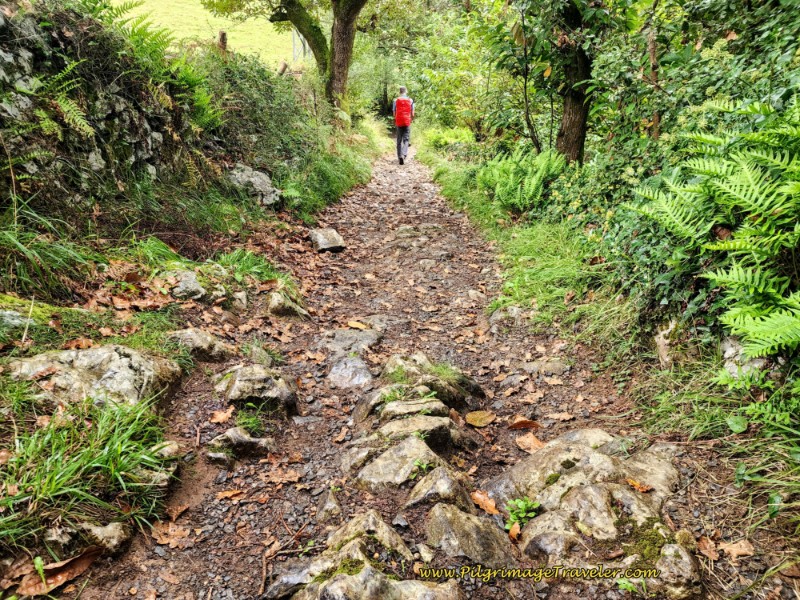 Ancient Road on the Way to Valduno
Ancient Road on the Way to ValdunoAnd next, this incredible, moss-covered old hollow tree caught my eye!
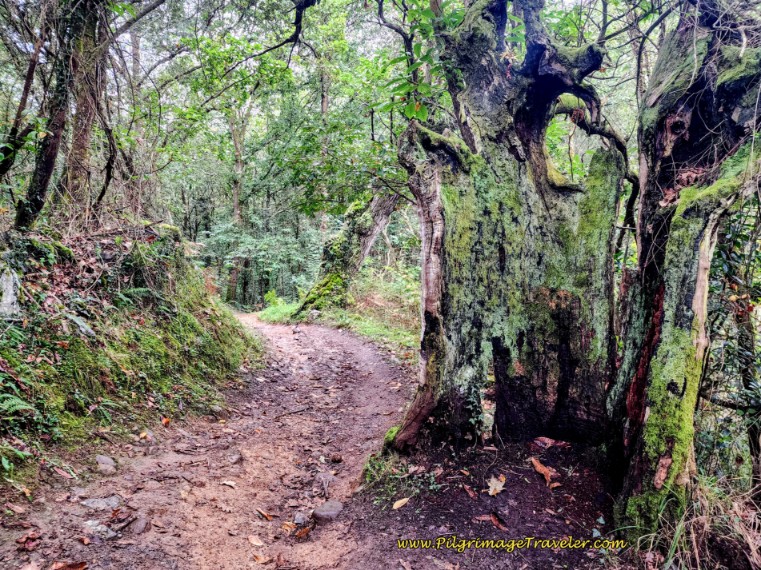 Incredible Old Hollow Tree
Incredible Old Hollow TreeCome next to a crossroads with another dirt lane and stay straight onward onto the path ahead. This path becomes an improved cobbled and uneven path for a short distance, that is a bit hard on the feet!
By about 5.35 kilometers into the day, and after approximately 3/4 kilometer on this path, reach the bottom of the descent from Premoño, at this sign, below, where you now have a choice to make. A left turn will take you to a historical attraction, the Termas Romanas, or Roman baths, only about 400 meters total, off-Camino.
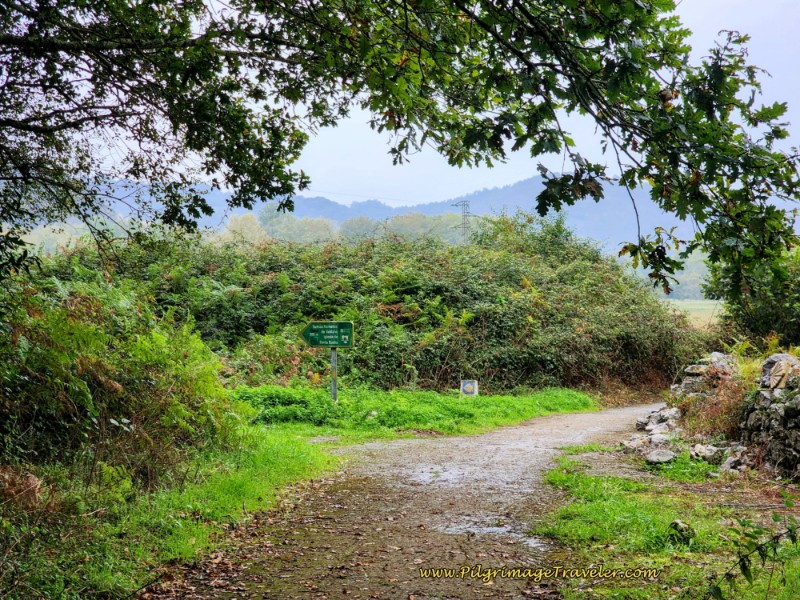 Decision Point - Turn for the Termas Romanas
Decision Point - Turn for the Termas RomanasThe Camino goes to the right at this decision point, but you can go left toward the town of Valduno to see the historical site. We took the side trip but it wasn't really worth it, as a church had been built over the ruins of the bath and all that is left is the foundation walls.
There is a nice paved shortcut back to the Camino from Valduno, shown on the map in orange, so visiting the site will not require you to back-track, and no real additional distance is necessary. There is no bar in Valduno so that is not a reason to go either.
If you stay on the Camino, instead of the optional detour to the ruin site, after about 300 meters, pass a nice bench where you can rest and have a snack. Less than 200 meters after the rest stop, come to a T-intersection with a dirt road, and turn left and walk for not quite 1/2 kilometer, when you come to another T-intersection. Go left at the T-intersection and in only a few meters more, come to yet another T-intersection, this time turning right onto the pavement. This is where the shortcut from the ruin site joins the Camino.
You will immediately notice the Nalón River on your left, as the road follows its path.
It was on day two on the Camino Primitivo that I really began to notice a sore throat that I thought was merely a passing nuisance from insufficient hydration during our long-flight the day prior. Until now, I hadn't paid much attention to the thickness and dryness that was developing in my throat.
I kept walking, and soon we were in Paladín after 600 meters from where the shortcut joins the Camino. There is a private albergue with private rooms here, the Villa Palatina, mere steps off Camino in town, that gets rave reviews. It also has a fantastic bar and restaurant, as stated above, at 6.9 kilometers into the day’s journey.
Just beyond Paladín, come to a T-intersection, and turn left, continuing to follow the river. The Primitive Way continues for about 800 meters along the secondary paved road, passing through a hamlet by the name of Puerma, then turns left at this intersection below.
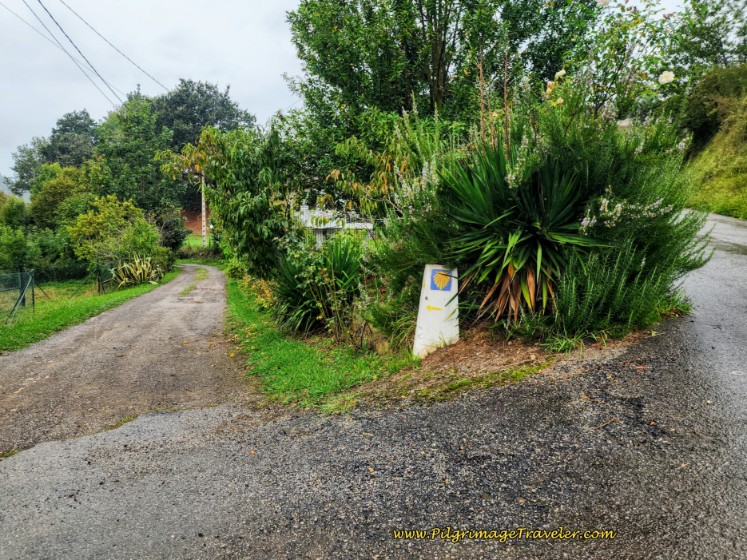 Pick Up Dirt Lane to the Left
Pick Up Dirt Lane to the LeftFollow this dirt lane for another 150 meters, when it takes a strong bend to the right. Continue off pavement for another 800 meters, now closer to the river. The lane peters out to a single track path.
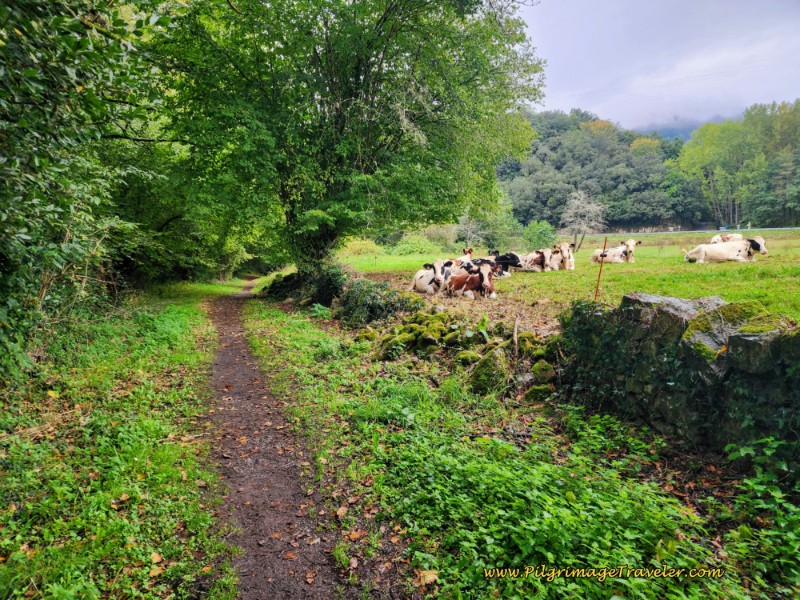 Path Parallels the Nalón River
Path Parallels the Nalón RiverA few meters later, the path crosses a nice footbridge, called the Pasarela de las Xanas, below. You can see the road on your right, as you take this nice off-road diversion.
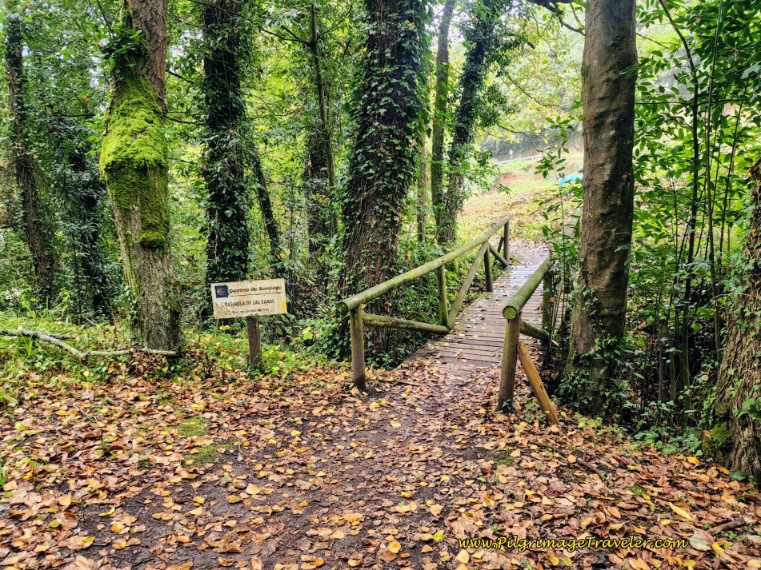 Camino Footbridge
Camino FootbridgeThe path meets the AS-372 again, shortly after the footbridge, and turns left onto it as it continues to follow the path of the river. First pass through a cluster of houses in a hamlet called L’Aracha, then immediately after, you will walk into Peñaflor, after not quite 1.0 kilometer on the road and a total of 9.6 kilometers for the day. There is no shoulder along this highway, until Peñaflor where you will find a sidewalk, so exercise caution as you walk along.
The Bar Casa Aurina in Peñaflor makes for a lovely stop along the river. It is usually a bustling place over lunchtime and we enjoyed our break here very much.
Just after the bar, the Camino leaves the AS-372 to turn left and cross the River Nalón on the historic, 12th century medieval bridge, the Puente Medieval de Peñaflor. When you reach this bridge, you have completed not quite 10 kilometers for the day. Apparently this bridge was a site of several Peninsular War battles. Looking back on the bridge, below, shows how dramatic this place is with the rock wall and the river gorge.
After crossing the medieval bridge, we turned right onto the busy N-634. After about 280 meters, look for this intersection, pictured below, on your right, where you will turn right and head into town on a side road.
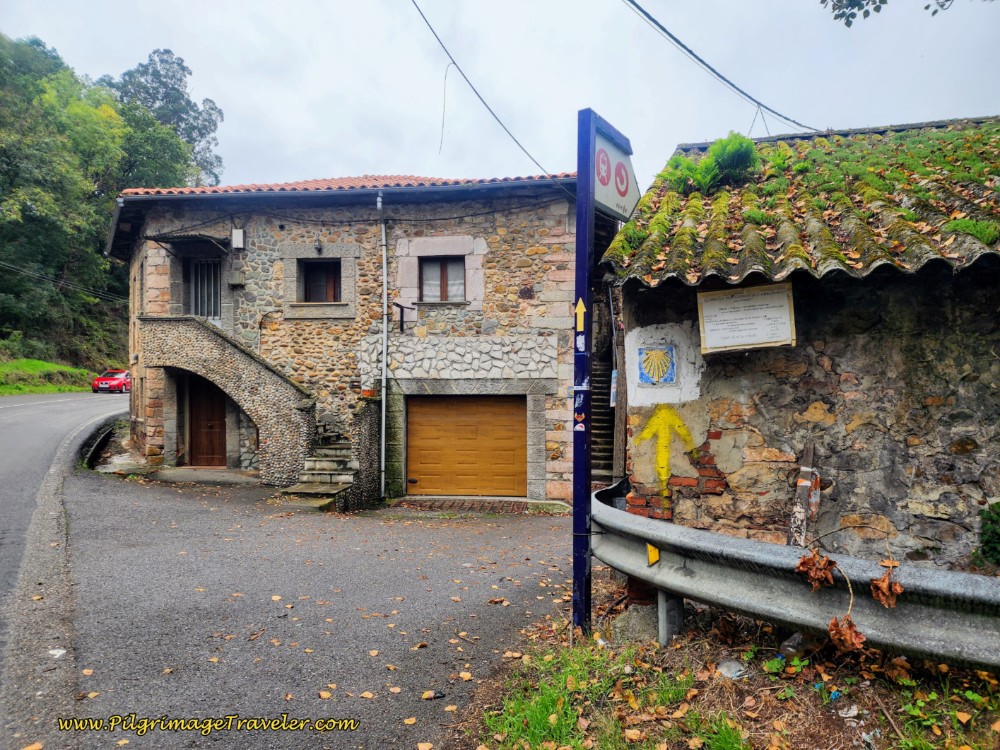 Turn Right into the Historic Town of Peñaflor
Turn Right into the Historic Town of PeñaflorBut don’t forget to also look to the left here, across the N-634 for the historic 13th century Iglesia de San Juan de Peñaflor, below. Because of its positioning it is easy to miss.
Immediately after the right turn from the highway, stay left at the Y-intersection, shown below. The town proper, of Peñaflor, is a lovely little town, so historic and quaint as are many Asturian towns. Continue along this narrow street until you reach the west end.
On the west side of Peñaflor, turn right and walk under a railroad bridge to a long, flat, paved path that leads the pilgrim onward to the next town of Grado. It is Grado that you see in the distance in the photo, below. This scenic and open paved path lasts about 1.6 kilometers until it meets town. It is a track frequented by the locals, out having a morning walk.
On the way to Grado, we passed a field of sunflowers. How delightful they were as they greeted us with their sunny faces!
The paved path turns to dirt as it gets closer to town and after about 11.9 kilometers into day two on the Camino Primitivo, comes to a crossroads, where you will turn to the right onto another dirt road called the Molinos de Agosto. You are now approaching the more industrial section of Grado. Pass through several industrial buildings, staying straight at the next crossroads, and continuing along as the road takes a strong bend to the left.
After about 200 meters on this road, come to a T-intersection and turn right onto the now paved road. You can see the larger buildings and the railroad tracks of Grado ahead. Follow the paved road as it bends and crosses the railroad tracks, below.
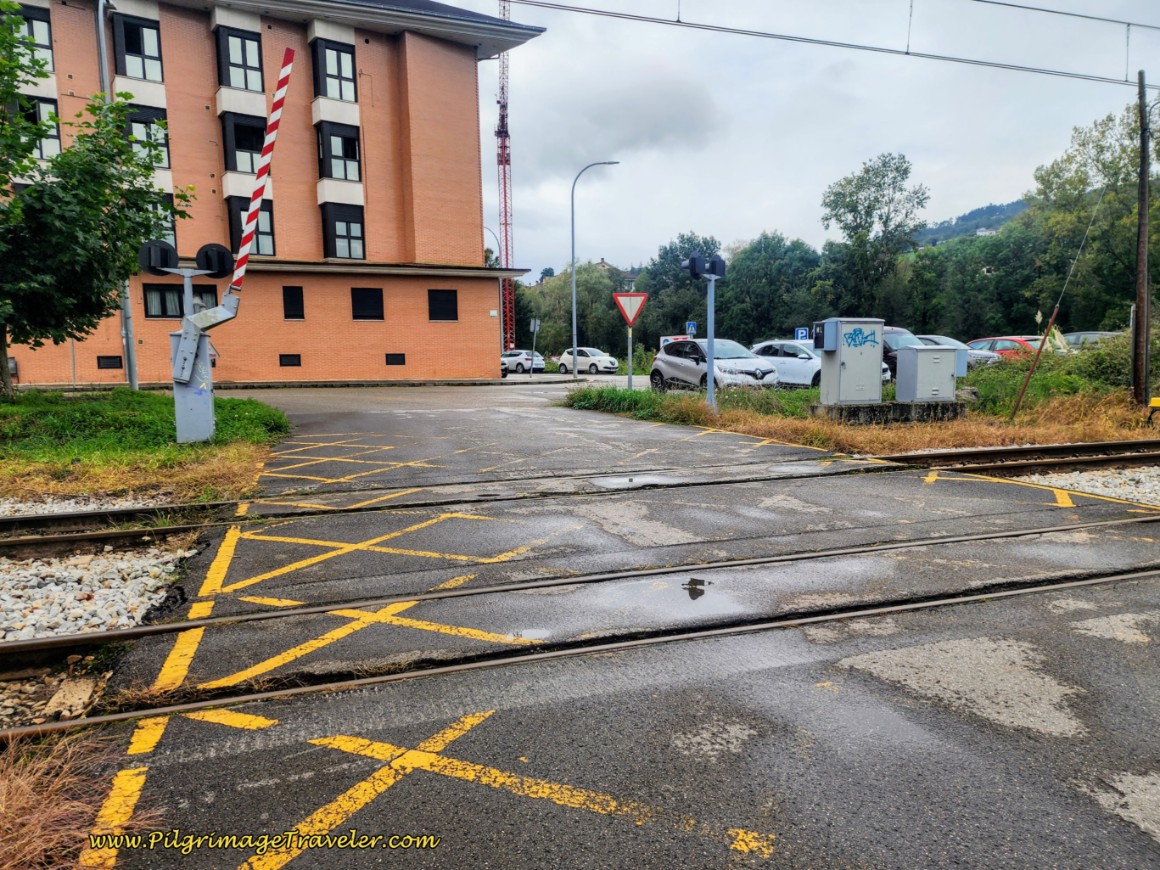 Cross Railroad Tracks
Cross Railroad TracksYou may be able to see the yellow arrow on the yield sign above, directing you to stay to the right at the next intersection and go around the apartment building on a paved road on its west side.
At the end of the building, one block later, at a T-intersection, we couldn’t find any waymarks, but did turn to the right where the street ends at a circle. Then a left turn onto the paved path on the west side of this building, below and yellow arrows appear. You can now see a set of stairs ahead. Walk up these stairs and come to the main street level of the N-634 once again.
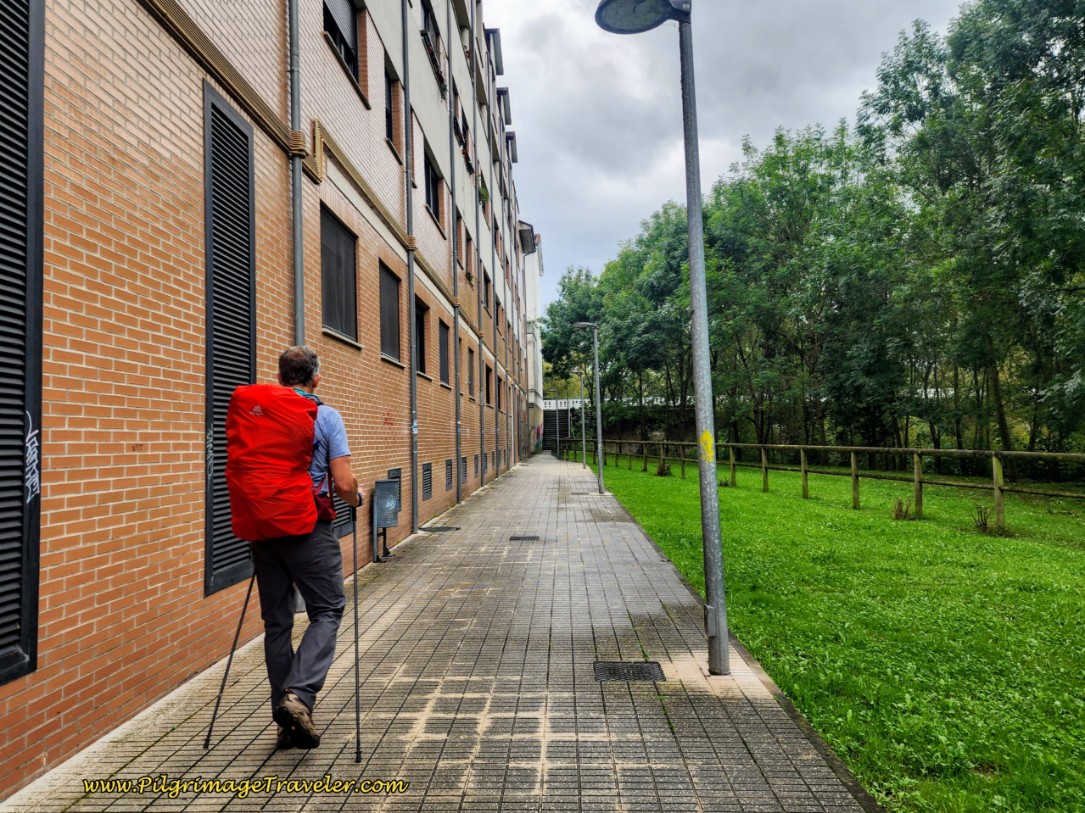 Paved Walkway to Stairway Ahead
Paved Walkway to Stairway AheadTurn right onto the N-634 and pass the town sign as you cross the bridge over the Cubia River, after 12.5 kilometers into the day, below. On the other side of the river which marks the low point of the day, you will now begin the long, 320 meter (1050 feet) climb over the next 5.5 kilometers.
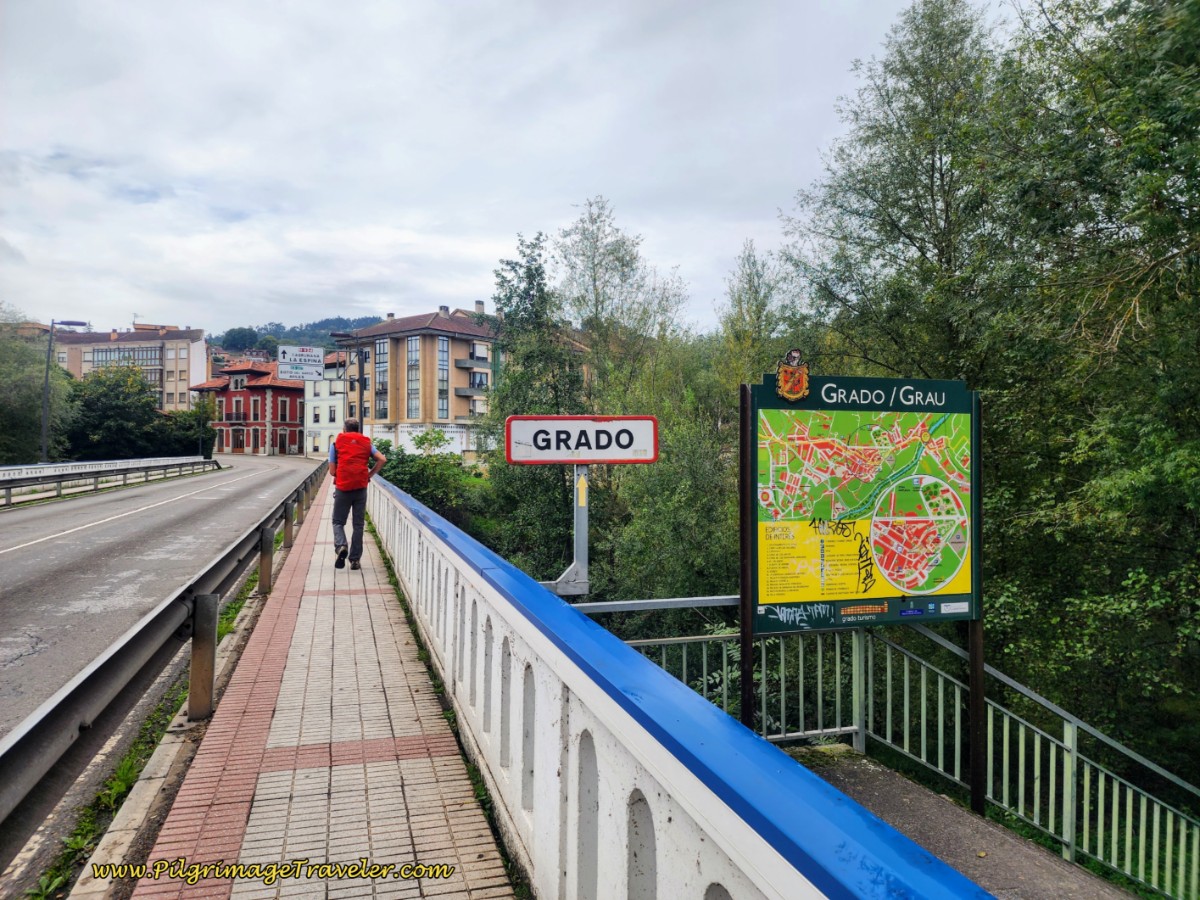 Entering Grado
Entering GradoAs you begin your climb through the streets of Grado, pass through two large roundabouts following signs to the albergue. After about 1/2 kilometer from the bridge and after passing a large city park on your right, you will see the turnoff to the right, for the Albergue de Peregrinos de Grado, (+34 985 752 766), after about 13 kilometers total for the day. It is another 150 meters up the hill to the 2-story, stone building that houses the albergue, below. This is a 16-bed donativo with communal meals included.
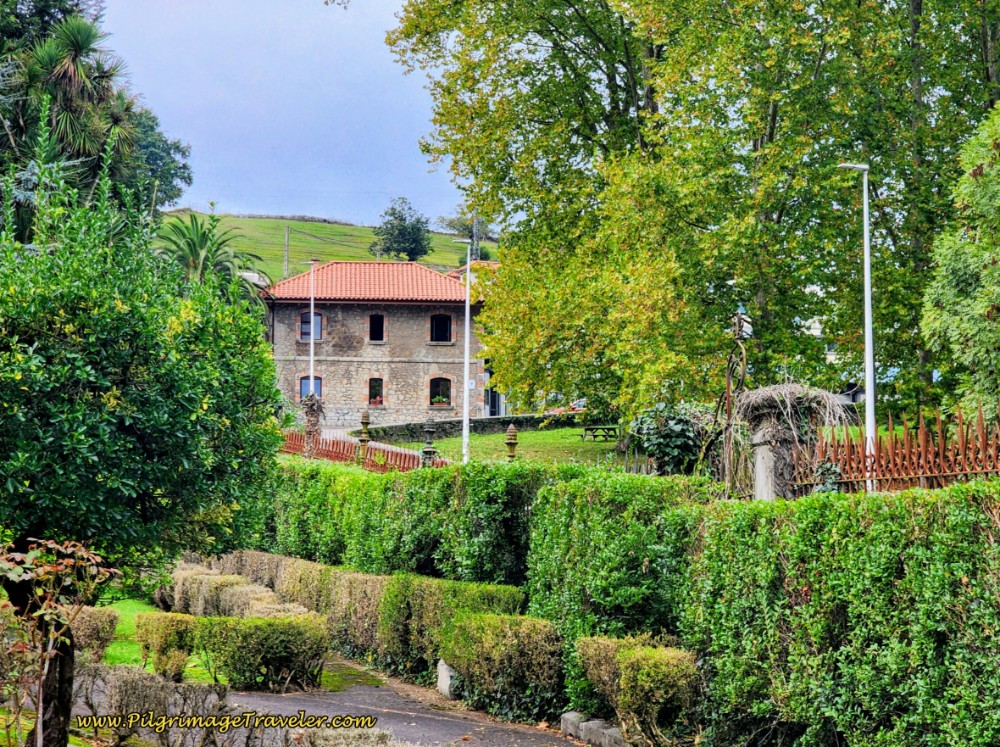 Albergue de Peregrinos de Grado
Albergue de Peregrinos de GradoAfter about another 300 meters, pass by a private albergue on your right, the Albergue La Quintana, in a restored mansion. It is both an albergue and hotel. We have stayed here in a private room which was absolutely fantastic, with a giant bathroom. The proprietors are extremely friendly and helpful. They also supply meals for an added charge. There is no kitchen to cook, but the immense buffet breakfast with meat and cheese is worth it!
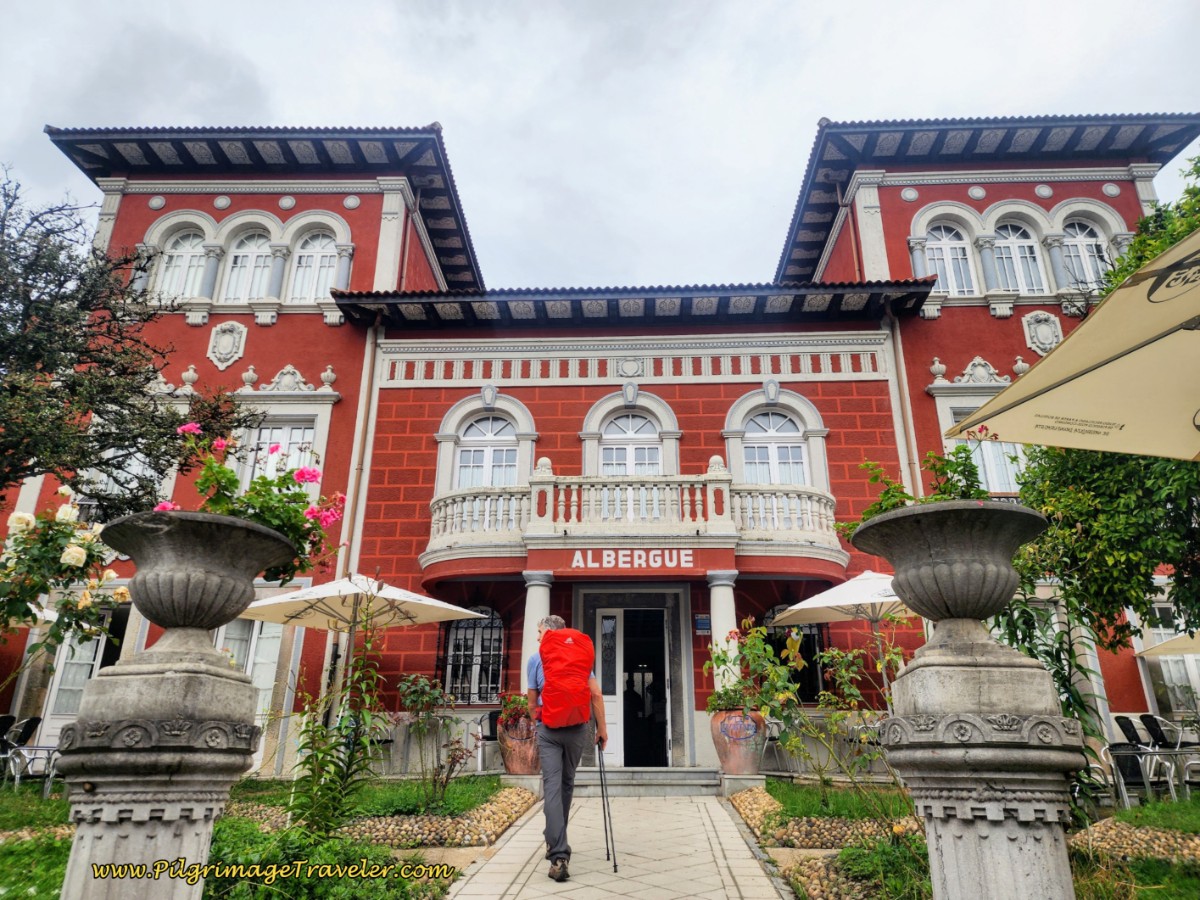 Albergue La Quintana
Albergue La QuintanaThere is also the Hotel Areces in this area, just one block south of the N-634.
On our original trip through town, we decided to stop for another café con leche and a bite to eat. We found a place called the Auto Bar on the far side of town, yet another 400 meters. It is also a family run hotel, so if you wish to conclude your day here, this hotel is right along the Camino at the far western side of town.
In the bar, we met a pilgrim in flowing black robes, doing the Primitive Way backwards towards Oviedo! After a long and interesting conversation with him and lots of advice, we determined that the best option for the night was in a friendly place he recommended in La Dóriga, just before Cornellana. He preferred the small boutique cabin that this albergue offered in La Dóriga over the large convent in Cornellana.
Back on the road, a few blocks past the Auto Bar is the Supermercado Covirán, below, where you may wish to stock up on supplies, especially if you are planning to stay at the municipal Albergue de San Juan de Villapañada, ahead after about 2.6 kilometers. We should have also stopped here to obtain our breakfast for La Dóriga, as you will see from reading on! (I have intentionally kept our story from many years ago when we were rather inexperienced pilgrims, as I feel there is much to learn from our mistakes!)
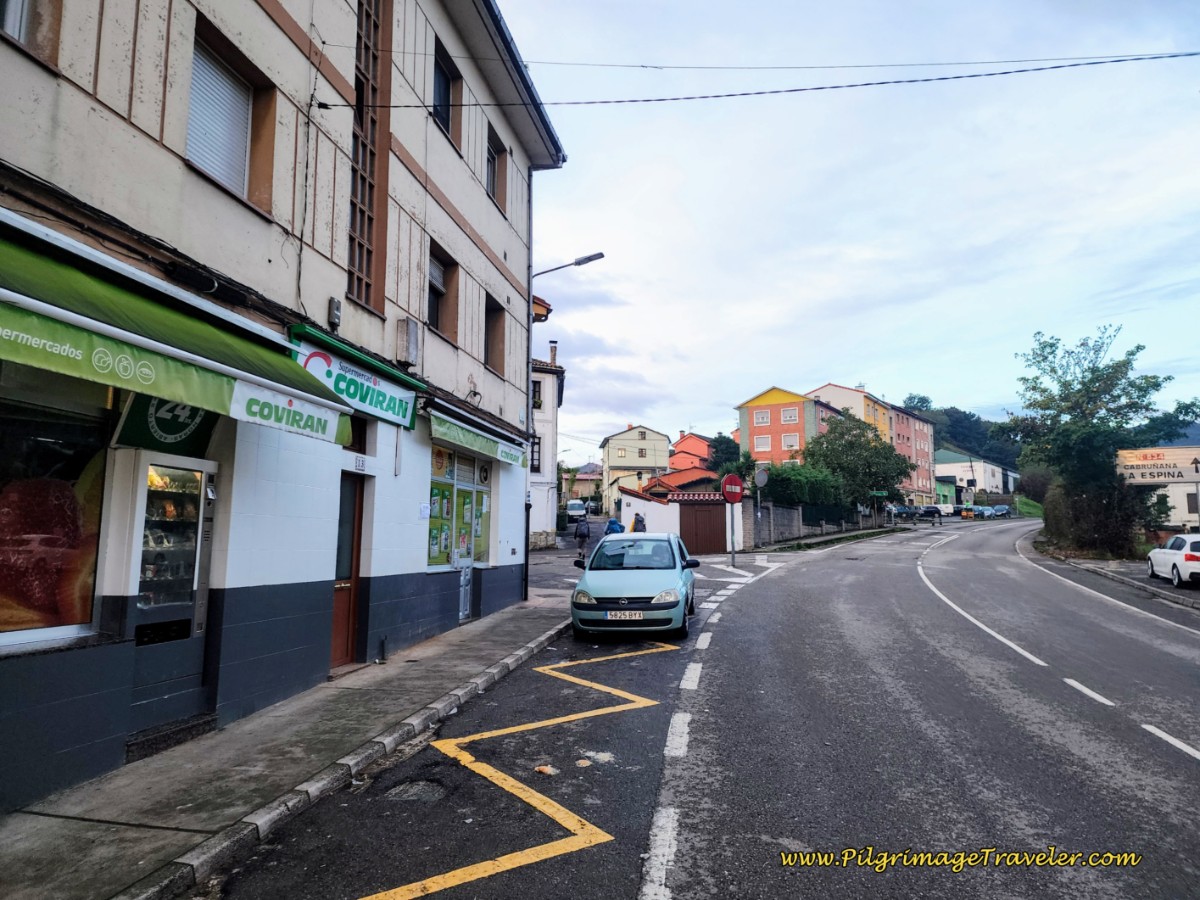 Leave the highway at the Coviran Supermercado
Leave the highway at the Coviran SupermercadoJust beyond the supermercado, the Way turns off the main road to the left and onto a small alleyway. You may be able to see three pilgrims in the photo above, heading towards the diagonal alleyway.
One block later, cross a street and in a few steps take the next road to the right to join a paved lane called the Calle la Podada de Arriba, as it immediately begins to climb steeply, up and out of town. Since the Spanish word “arriba” means “up,” this is no joke! Get ready for the climb!
Once you ascend a bit, away from the buildings, you may want to turn around and look at the view behind you. Below is the breathtaking view we saw in the early morning, just after sunrise.
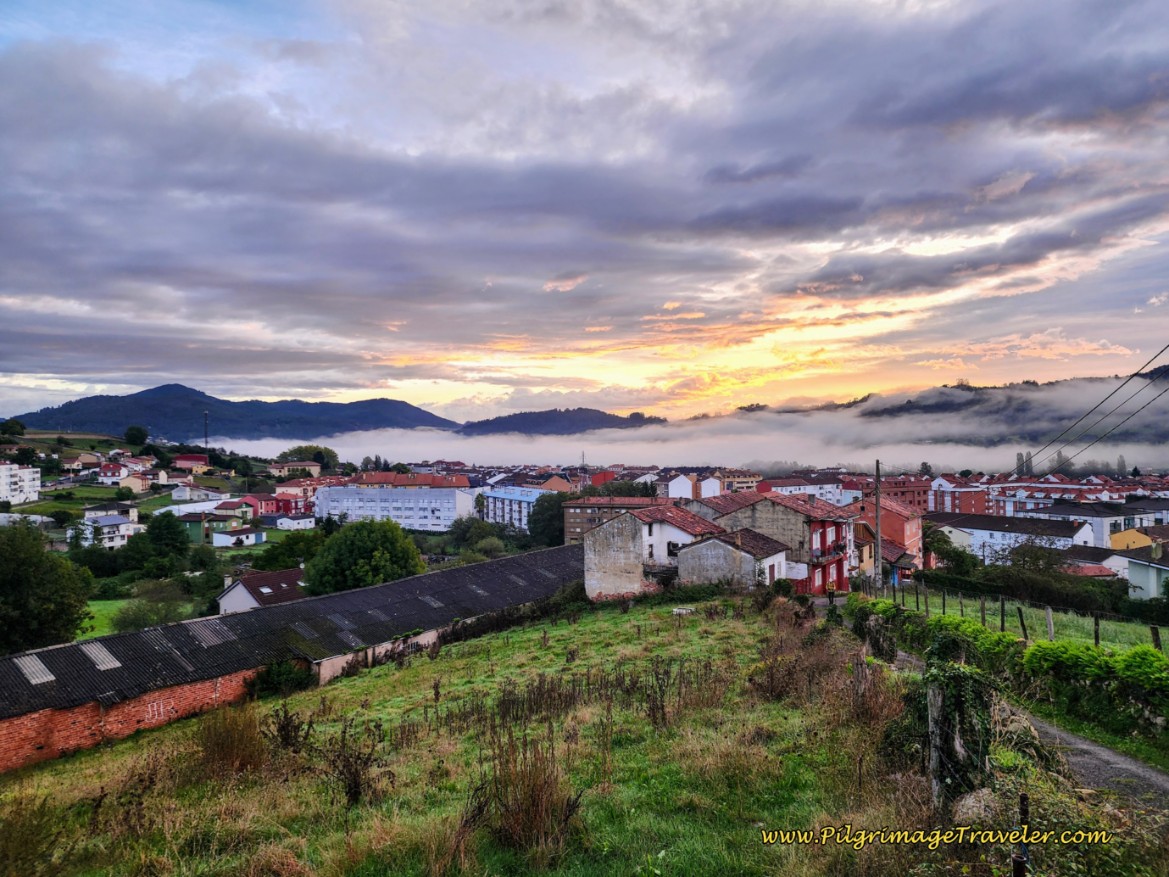 Breathtaking View Over Grado at Sunrise
Breathtaking View Over Grado at SunriseAs you walk onward, the now-dirt lane, later alternating with gravel and some pavement, was lined with monster hydrangeas. What a glory!
This lovely high lane, below, levels out after about 700 meters and walks the pilgrimage traveler through the Asturian countryside for not quite one kilometer, ending at a T-intersection.
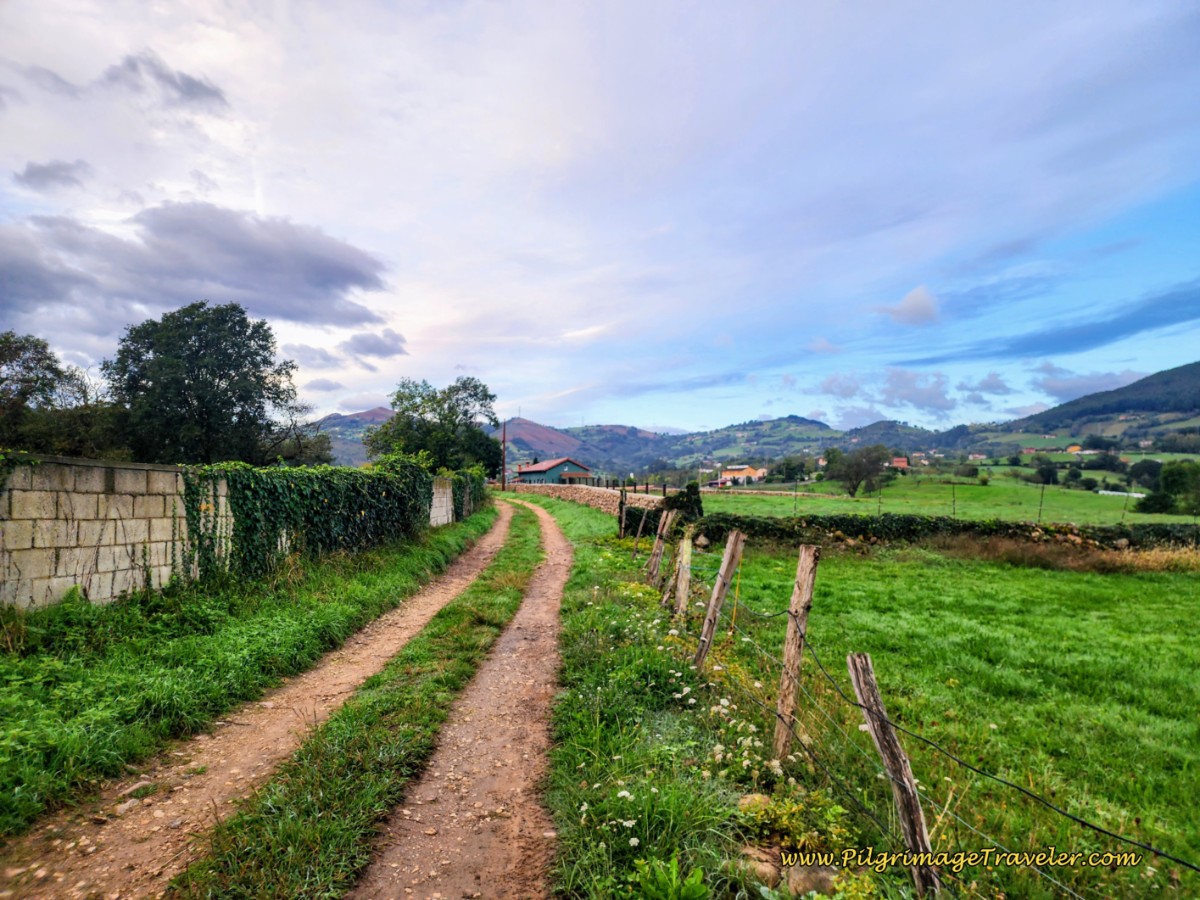 Asturian Countryside in Day Two, Camino Primitivo
Asturian Countryside in Day Two, Camino PrimitivoAt the T-intersection, the Camino takes a right turn and joins another quiet paved road, crossing over the A-63, and continuing the climb along a quiet paved road for about another kilometer, below. The countryside as you can see is gorgeous, and still a lush green in autumn. While the Primitive Way follows the A-63 highway, on its north side after crossing it, one only catches a glimpse of it here and there.
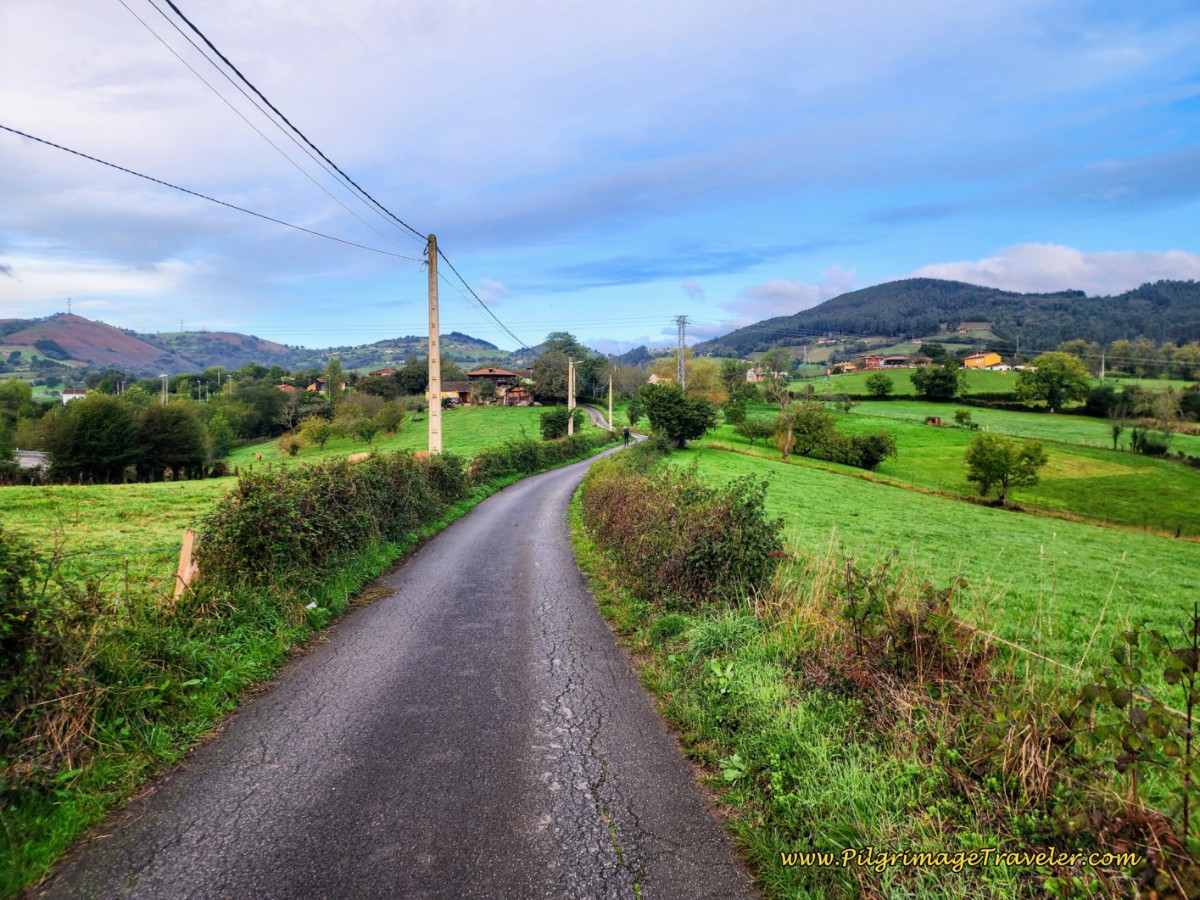 Quiet Pavement Through More Countryside
Quiet Pavement Through More CountrysideAlong this road you will first pass the town sign for Barrera, then El Cascayal. These are both tiny hamlets with only a few houses. After walking through El Cascayal, and after about 15.7 kilometers total, come to another T-intersection and turn left.
At this T-intersection, you are still about 800 meters from the turnoff for the municipal Albergue de Peregrinos de San Juan de Villapañada, (+34 985 750 068, Town Hall, +34 670 596 854 on Sundays). Next walk through the hamlet of El Valle.
After approximately 16.5 kilometers into the day, arrive at the turn-off for the albergue. The albergue is off-Camino about 850 meters to the north. This turn is clearly marked, see the photo below. The plaque under the top shell says “Camino” and the plaque under the bottom shell says, “Albergue.” This is where you turn right. This would be a long climb at the end of your day if you chose to come all the way from Oviedo, about 30 kilometers total from the cathedral to the albergue.
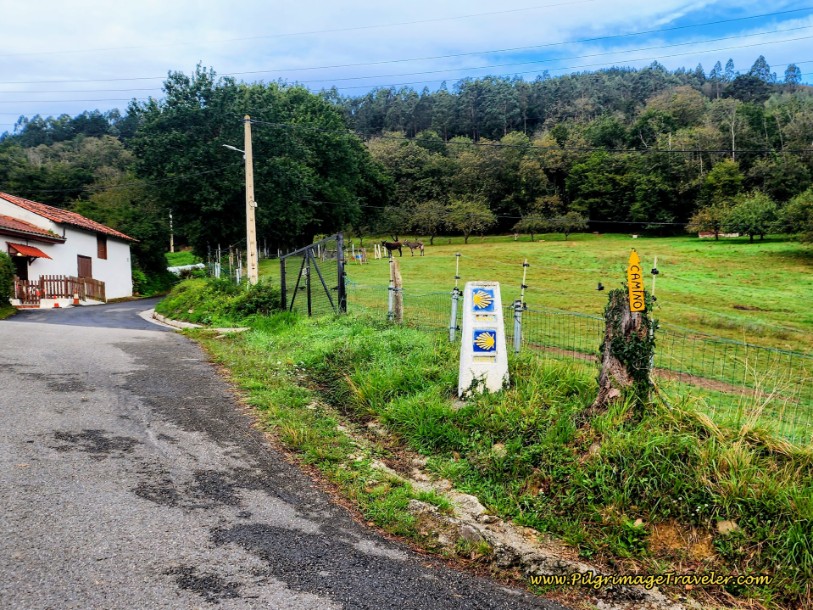 Waymark at Turn for the Municipal Albergue, Day Two on the Camino Primitivo
Waymark at Turn for the Municipal Albergue, Day Two on the Camino PrimitivoWhile somewhat strenuous to this point, the views all around are to die for. You carry straight-on after the turn-off, and do even more climbing toward the crest of this next hill, below.
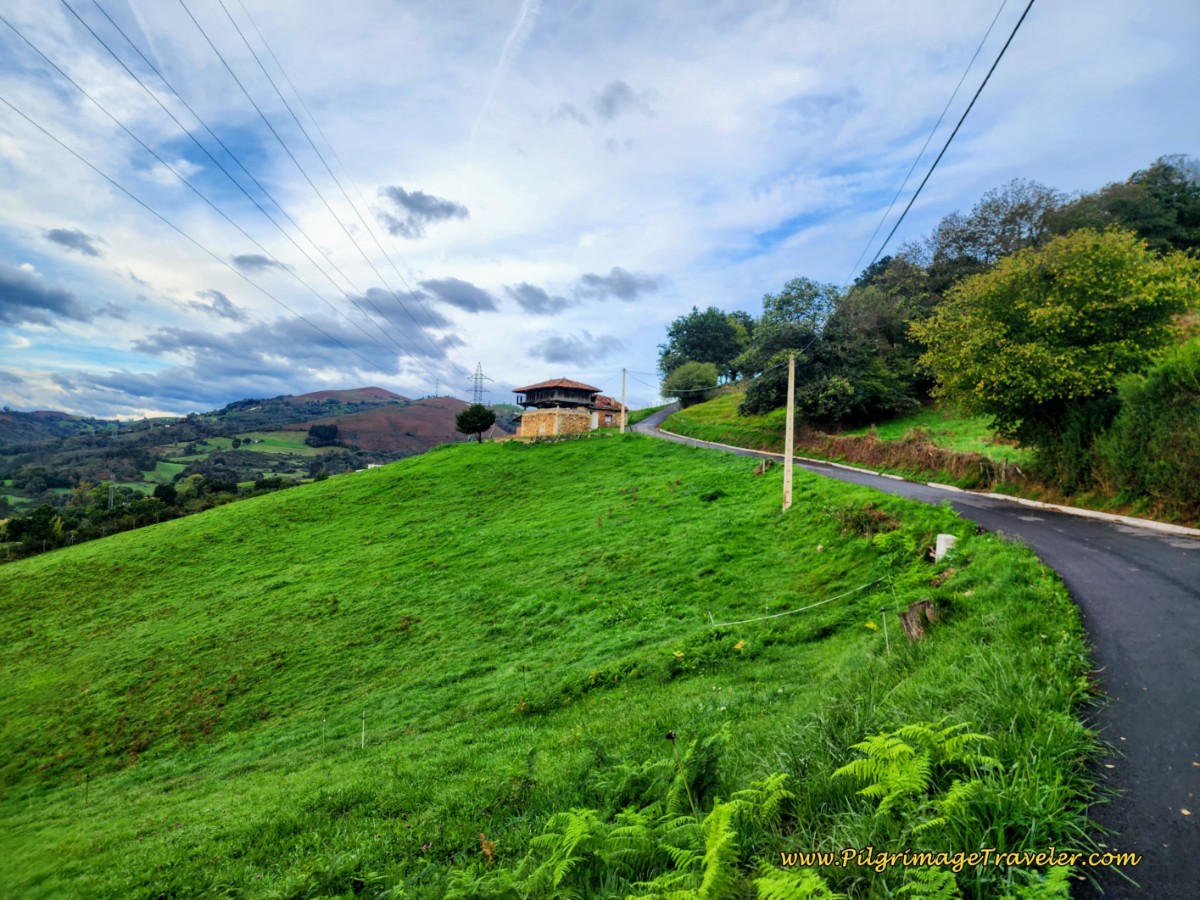 The Climb Continues
The Climb ContinuesThen it is 1.5 kilometers more of steep climbing to the Alto del Fresno, the final top of the climb for the day, after 18 kilometers total. You will know you have arrived when you see the town sign of "El Freisnu," you are under a lot of power lines and a small Ermita del Fresno can be seen on the hill just farther on to your right. In fact, if you know what to look for, the small Ermita can be seen ahead, from quite a distance, long before the top, below.
You can take the casual use-path to the 17th century Ermita if you so desire, a short side trip of another 100 meters to the tippy top of the hill. The view from here at the cross in the courtyard was worth the extra steps, below, even though the Ermita itself was closed. We took the time to pause here, reflecting on gratitude for our journey, and sending a prayer for Peace to the world.
Jump to Camino Primitivo Stages
From the top of the climb, in El Freisnu, the Camino goes straight ahead, onto a long gravel road, below. Pictured here is the intersection with the information boards. The Ermita is up the hill to your right.
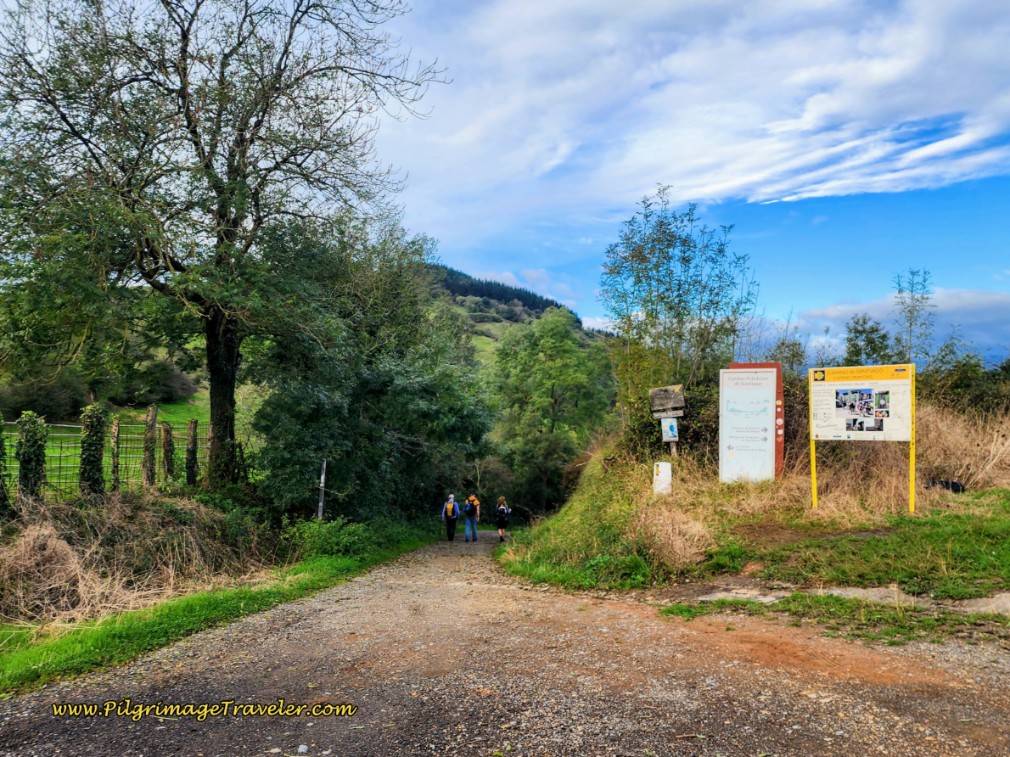 Straight Ahead at the Alto del Fresno
Straight Ahead at the Alto del FresnoHowever, if you wish to go to the municipal Albergue de Peregrinos de Cabruñana, (+34 985 750 068 - Town Hall, +34 985 750 075, local police), at the top of the climb you can take the road to the right, or north, called the Calle Real, toward the church, in the direction of Cabruñana. Walk 1.45 kilometers along the Calle Real until it joins the N-634, by turning left, then another 250 meters to find the albergue. The keys are in the Bar Restaurante Ana, next door, just before the albergue. This is a full 1.7 kilometers off -Camino.
The next day you can return to the Primitivo via El Freisnu, or continue onward on the N-634 until it joins the Camino de Santiago in Cornellana. This would entail a long walk of 4.75 kilometers on the N-634, however it would be a full 2.0 kilometers shorter than returning to El Freisnu.
The gravel road ahead, shown below, follows an ugly power line as it drops dramatically toward the next town of San Marcelo, 1.2 kilometers away. However, the views ahead are really nice!
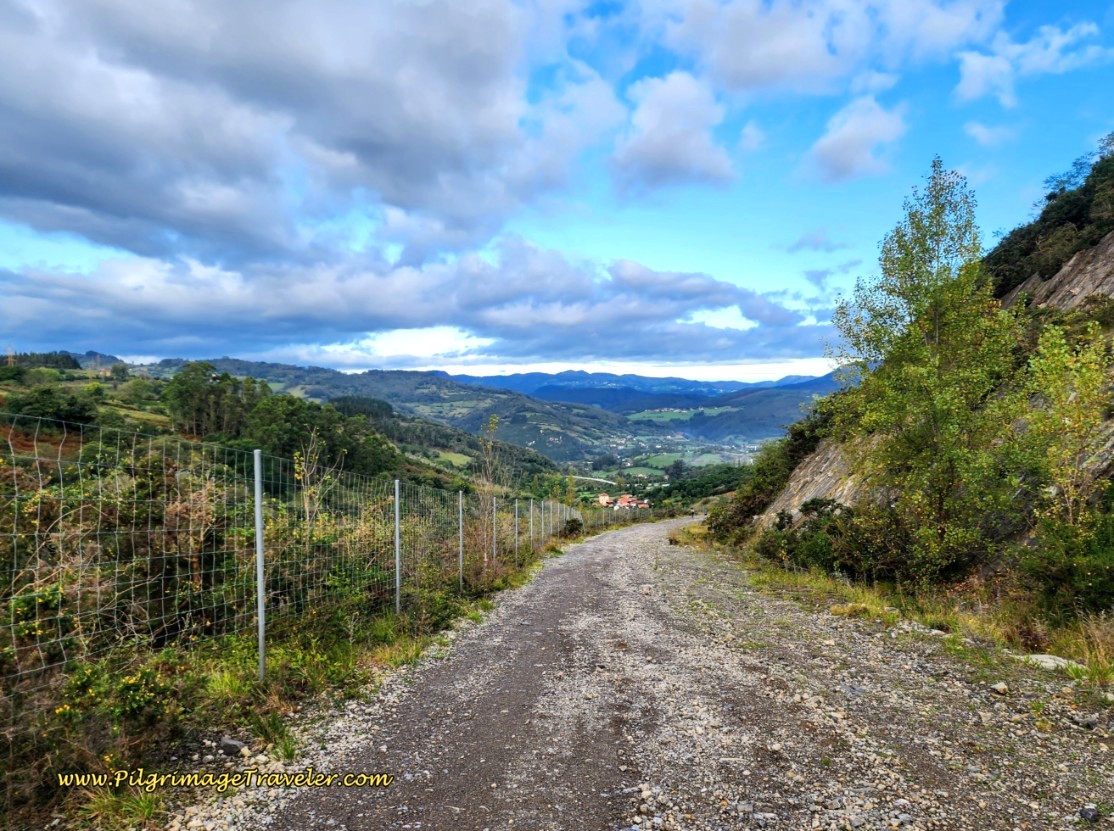 Long Gravel Road Descent into San Marcelo
Long Gravel Road Descent into San Marcelo600 meters later, when the road makes a strong bend to the left, we came upon this 17th century fountain (fuente), below, at the Puente de la Meredal. I have kept our original photo of it, because our last time through you could not even see the fountain, for the overgrowth of the weeds. Hopefully, someone will restore it again soon. I don’t even know if it is still operational.
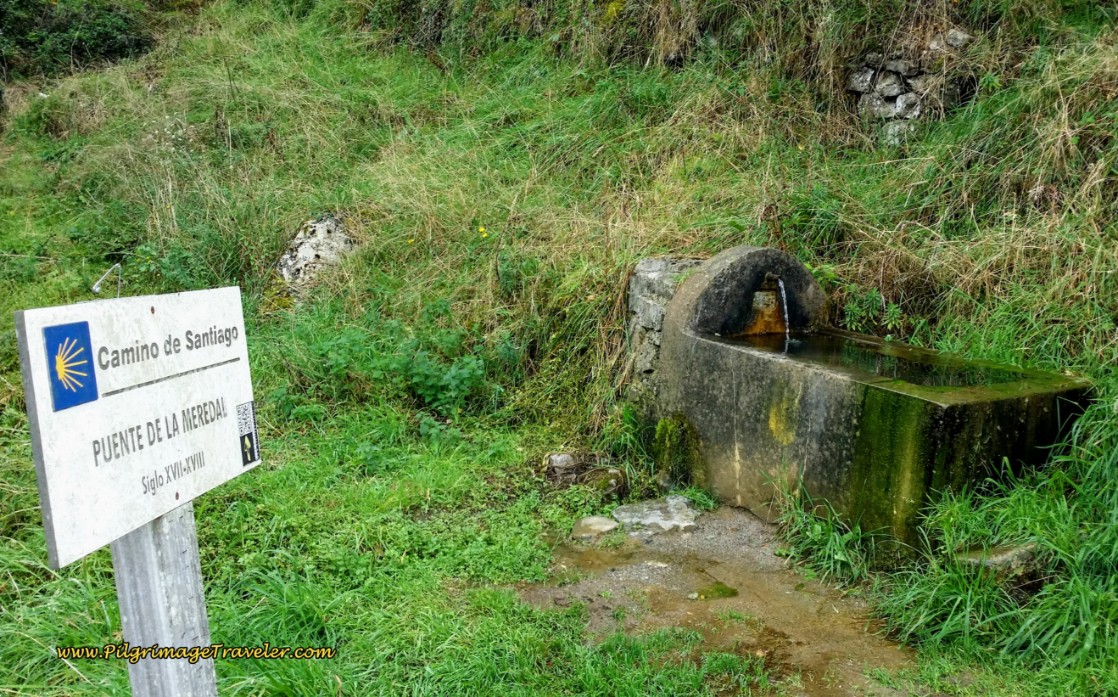 Puente de la Meredal
Puente de la MeredalAbout 100 meters after the fountain, come to a wide bridge, and cross over the A-63 once again. The wonderful views continue after the bridge.
After about 1/3 kilometer, as you approach San Marcelo, the road becomes paved and in the middle of town, after about 19.2 kilometers total, you will pass the lovely Casita Mandala, (Alicia, +34 644 78 11 14 (WhatsApp), +34 985 59 34 19), below.
The Casita Mandala is a donativo with 10 beds and community vegetarian meals. The albergue was opened by a French couple, who describe it as such: “We are a small ecological and Permaculture project. We want to share our small place with pilgrims and invite them to discover a simple, ecological friendly way of life. We restored an old stone house using natural materials (clay, straw, lime etc...). Part of the food is from our organic garden.”
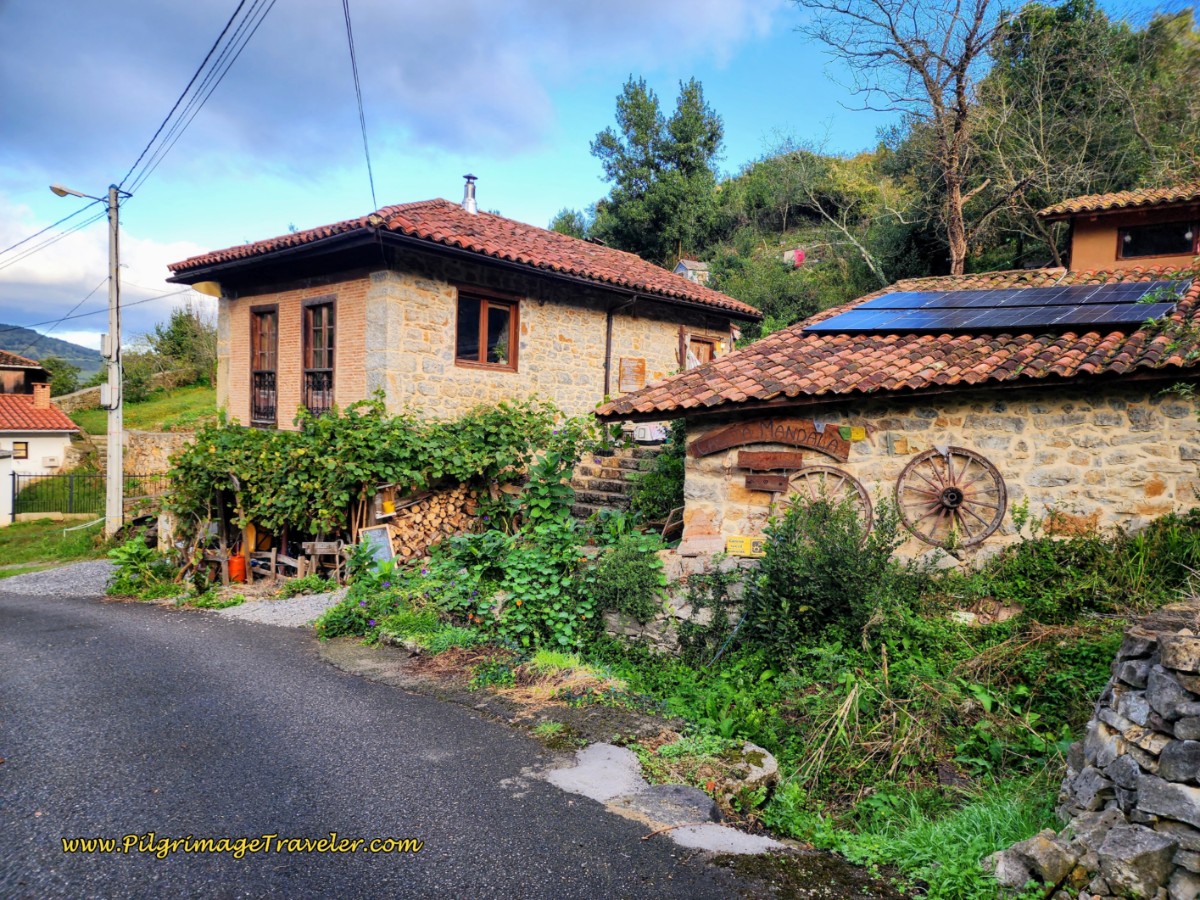 The Donativo, Casita Mandala
The Donativo, Casita MandalaThe town of San Marcelo, is a charming one and a delightful old gentleman greeted us with a hand-full of lemons from his tree, to share.
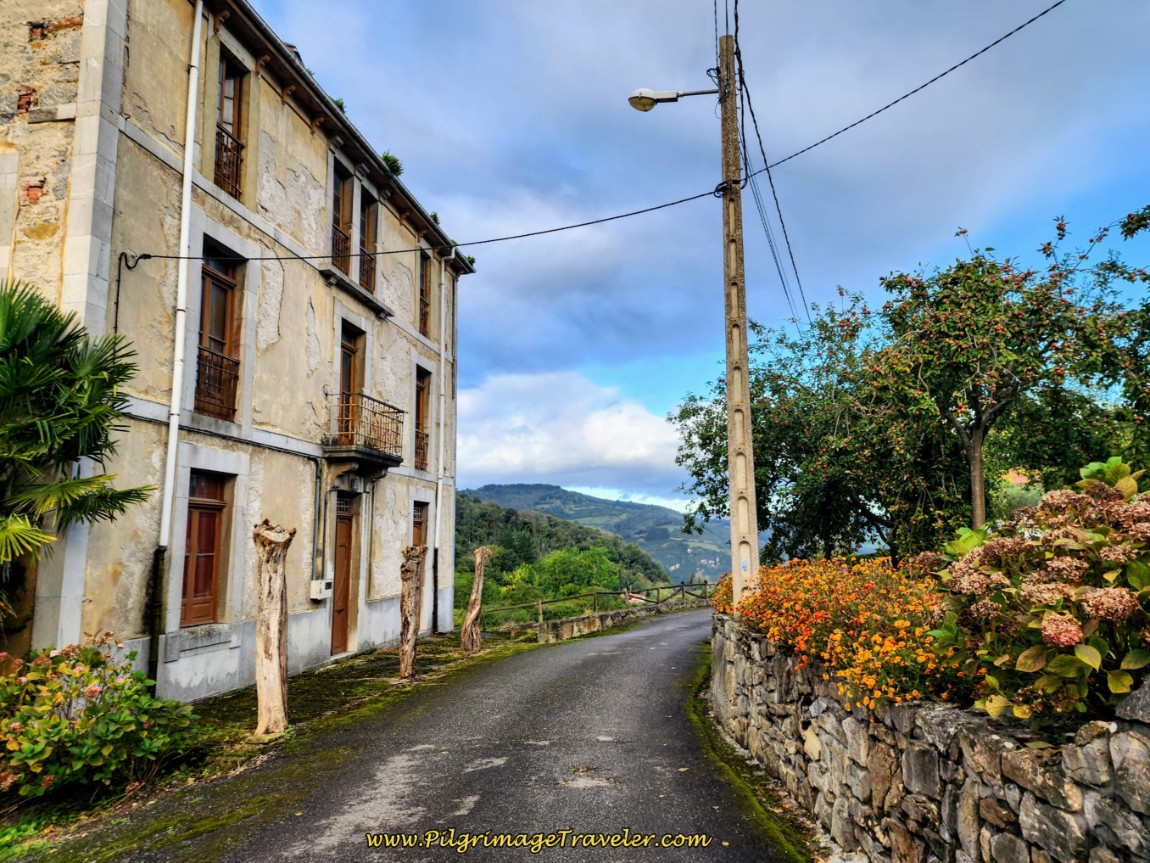 Leaving San Marcelo
Leaving San MarceloAfter San Marcelo, the Way comes to a T-intersection with the SL-9. Turn left at the San Marcelo exit sign at this intersection and walk for 200 meters, where you see a large roundabout ahead. Just before the roundabout, take the very first left onto a lovely path towards La Doriga, below.
There is only about one kilometer remaining to La Doriga at the juncture with this path.
After about 200 meters on the path, cross a Camino footbridge, over the Arroyo del Fresno. After not quite 200 meters more, come to an old grist mill, below. It was quite interesting to look inside and poke around a bit.
Sections of the path here, again, look like remnants of the original ancient road. If the path is muddy, it will be slick! The path comes out of the woods, and becomes a paved lane, by a cluster of buildings and walks by yet another water fountain, the Fuente la Reaz.
A few meters later, walk through a tunnel under the SL-9. On the other side of the tunnel, the lane continues for about 200 meters, officially entering the town of Santa Eulalia de la Doriga, when it ends at a T-intersection. Turn right at the intersection and walk past the Romanesque Iglesia Santa Eulalia, built in the 12th century, below. Unfortunately, it is rarely open for a visit.
The Camino goes right around this church, to the front and into the center of town. The stone pillar to the right of the church, in the photo above, identifies the church. The tree that you also see in the photo is centuries old.
Right across from the Santa Eulalia church is the Acogida CáPacita, (+34 684 613 861), the restaurant and albergue, our final stop on our day two, below.
The little cabin guest house behind the restaurant (in blue) that sleeps six was very quaint and cozy, see photo, below. It was a good call from the robed pilgrim. We ended up enjoying the place all by ourselves that night! Apparently all the other pilgrims we met the night before had gone on to Cornellana.
The disadvantage is that the showers and bathrooms are in the building attached to the main restaurant building, so you have to walk outside from one building to another to use them. However, the proprietor is so welcoming and friendly and treats pilgrims so well that it makes up for this disadvantage!
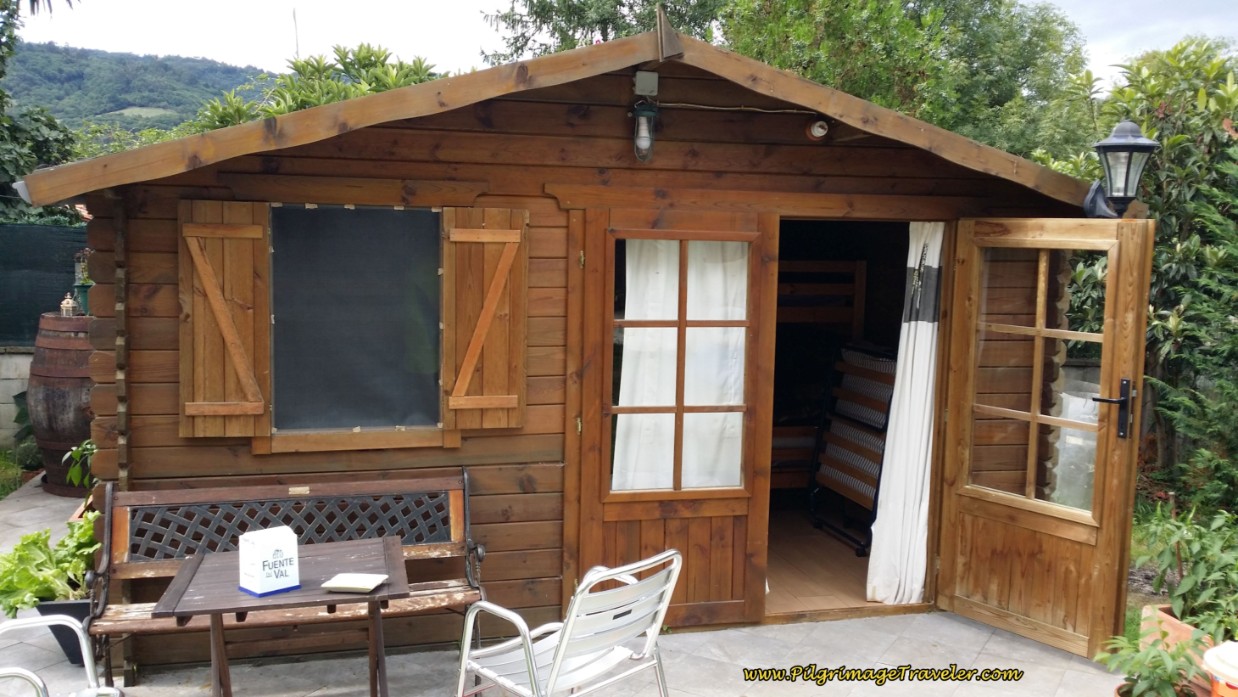 Acogida CáPacita Sleeping Cabin
Acogida CáPacita Sleeping CabinTired and famished, we arrived in time to partake in the Sunday "lunch" hour. The restaurant was packed with Spaniards in their best dress, celebrating some occasion, of which I was not sure.
Our meal consisted of a starter of Crema de Calabasín (Cream of Squash Soup), followed by a delicious dish of spicy, fried pork pieces called picadillos. It was a simple meal but absolutely delicious!
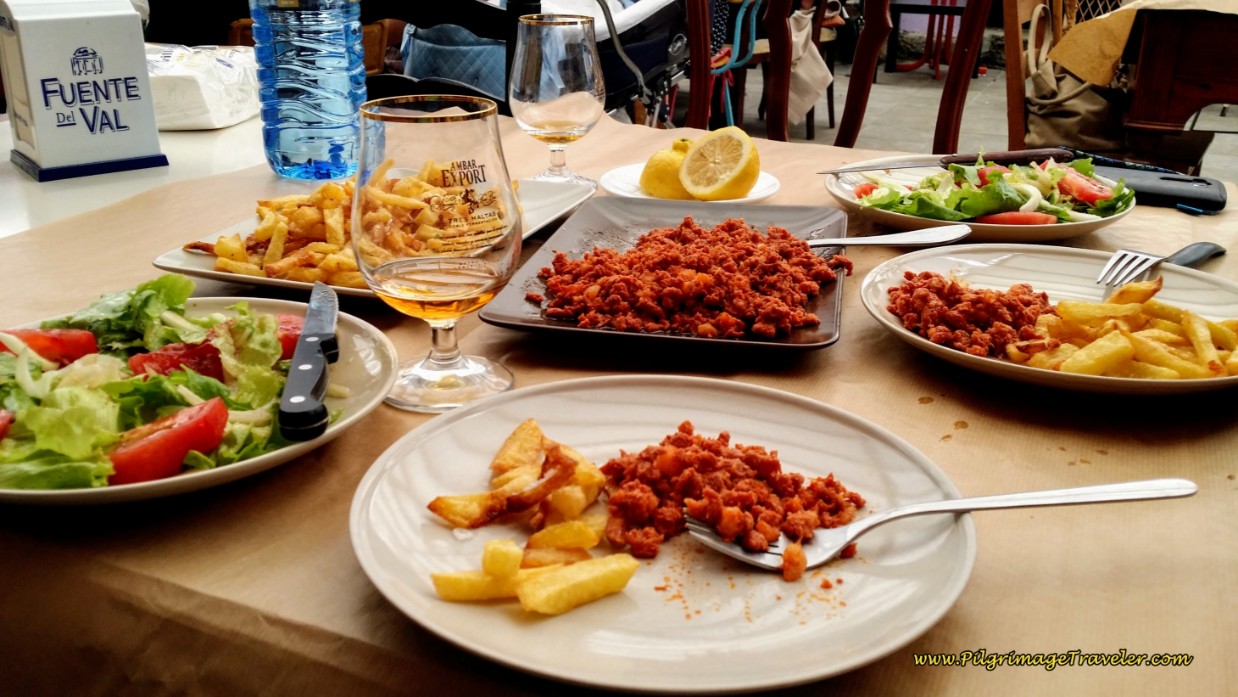 Picadillios - Spicy Pork Dish
Picadillios - Spicy Pork DishIf you spend any time in La Doriga, like we did, you may wish to walk a few meters off Camino to see the wonderful old Palacio de Doriga, the central medieval tower, constructed in the 14th century, and later additions from the 15th and 16th centuries. The 16th century palace gate is very well-preserved.
Reflections
That night while lying in my bed, I stretched the heck out of the entire front of my legs and hips to open and relieve my shin splints. Ouch, they hurt!
Since there were no other pilgrims to talk to at our albergue, it was my husband, also suffering from shin splints, with whom I commiserated! He was a good co-commiserator. I popped Ibuprofen for both my shin splints and my sore throat, which didn't seem to abate all that much as the day progressed.
All-in-all, I would say the joy of the journey superseded the pain I felt on this day two of my Camino Primitivo. Thus far, my predominant emotion was one of euphoria and gratitude. However, the journey was young...
Salutation
May you find the spirit of community on your own day two on the Camino Primitivo! May the experience take you to the in-between places, where normal and surreal collide!
The Camino Primitivo Stages
Please Consider Showing Your Support
Many readers contact me, Elle, to thank me for all the time and care that I have spent creating this informative website. If you have been truly blessed by my efforts, have not purchased an eBook, yet wish to contribute, I am exeedingly grateful. Thank you!
Search This Website:
🙋♀️ Why Trust Us at the Pilgrimage Traveler?

We’re not a travel agency ~ we’re fellow pilgrims! (See About Us)
We've trekked Pilgrimage Routes Across Europe since 2014!
💬 We’ve:
- Gotten lost so you don’t have to. 😉
- Followed waymarks in the glowing sunlight, the pouring rain and by moonlight. ☀️🌧️🌙
- Slept in albergues, hostels & casa rurals. Ate and drank in cafés along the way. 🛌 😴
- Created comprehensive and downloadable GPS maps and eBook Guides, full of must-have information based on real pilgrimage travels. 🧭 🗺️
- Shared our complete journeys, step by step to help YOU plan your ultimate pilgrimage and walk with your own Heart and Soul. 💙✨
Every detail is from our own experiences. Just fellow pilgrims sharing the Way. We have added a touch of spirituality, heartfelt insights and practical guidance from the road ~ offering a genuine connection to the spirit of pilgrimage. Tap into the wisdom of seasoned pilgrims!
Ultreia and Safe Pilgrimage Travels, Caminante! 💫 💚 🤍
Follow Me on Pinterest:
Find the Pilgrimage Traveler on Facebook:
Like / Share this page on Facebook:
***All Banners, Amazon, Roamless and Booking.com links on this website are affiliate links. As an Amazon associate and a Booking.com associate, the Pilgrimage Traveler website will earn from qualifying purchases when you click on these links, at no cost to you. We sincerely thank you as this is a pilgrim-supported website***
PS: Our eBook Guide books are of our own creation and we appreciate your purchase of those too!!
Shroud Yourself in Mystery, along the Via de Francesco!
Walk in the Footsteps of St. Francis, and Connect Deeply to the Saint and to Nature in the Marvelous Italian Countryside!
Need suggestions on what to pack for your next pilgrimage? Click Here or on the photo below!
Find the Best Hotel Deals Using This Tool!
Carbon Trekking Poles ~ My Favorites!
Carbon fiber construction (not aluminum) in a trekking pole makes them ultra lightweight. We like the Z-Pole style from Black Diamond so we can hide our poles in our pack from potential thieves before getting to our albergue! There are many to choose from! (See more of our gear recommendations! )
Gregory BackPack ~ My Favorite Brand
Do not forget your quick-dry microfiber towel!

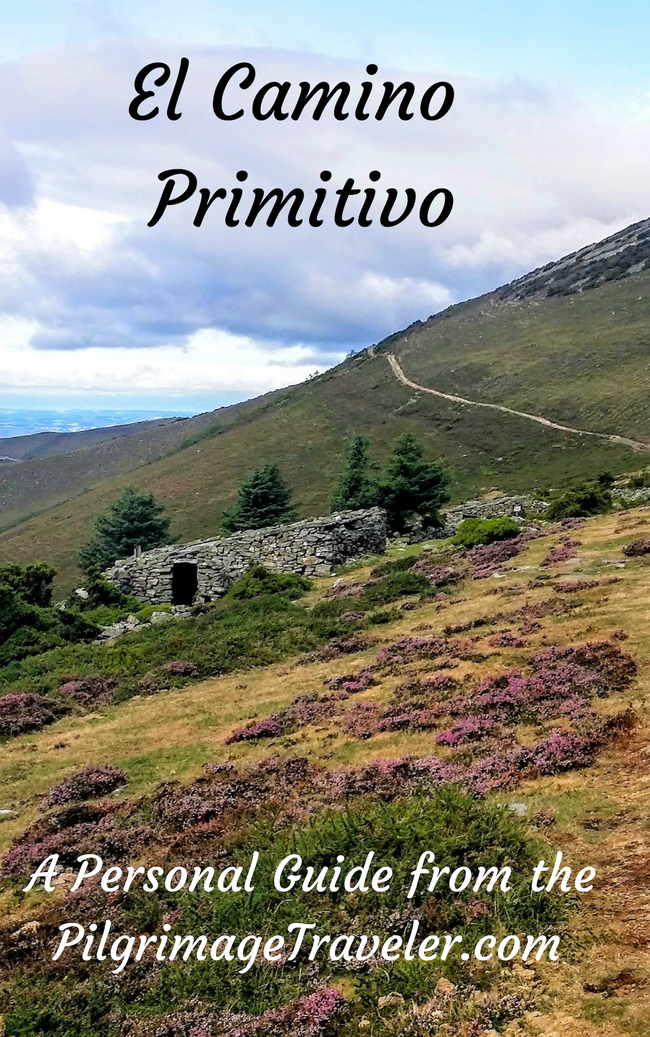
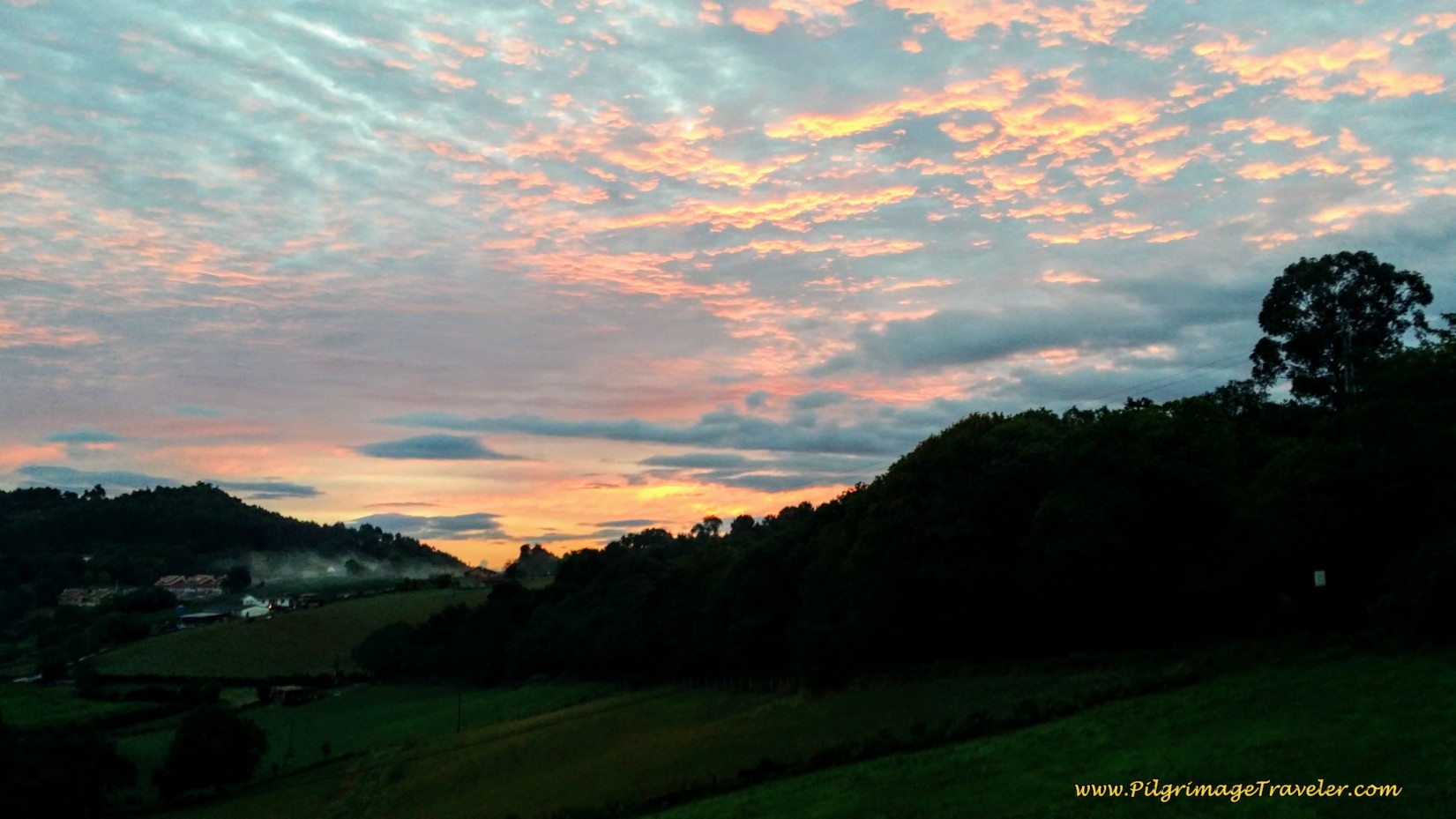
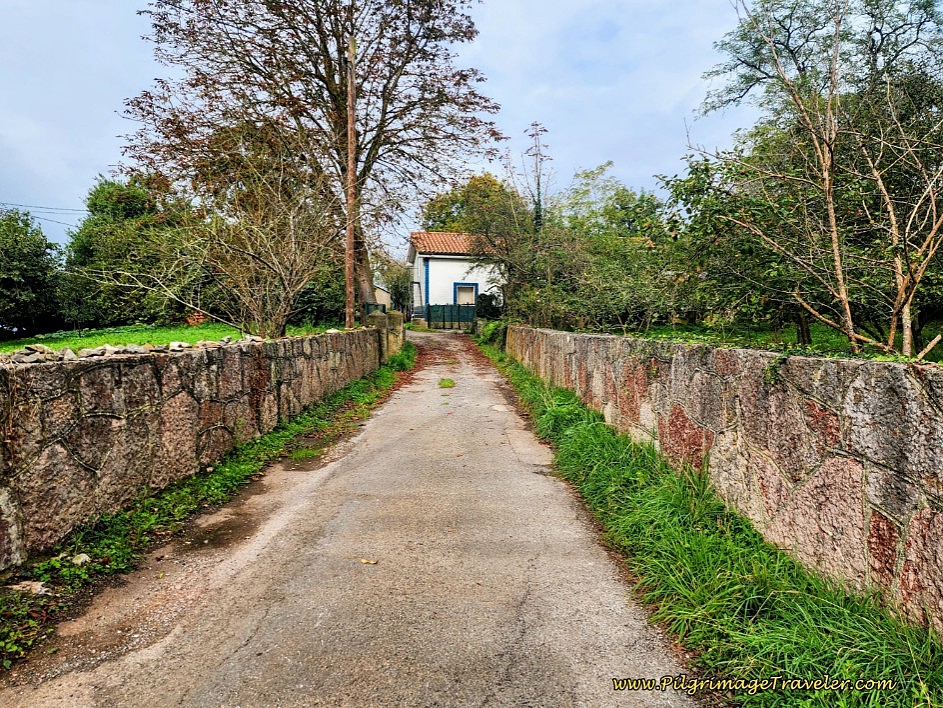
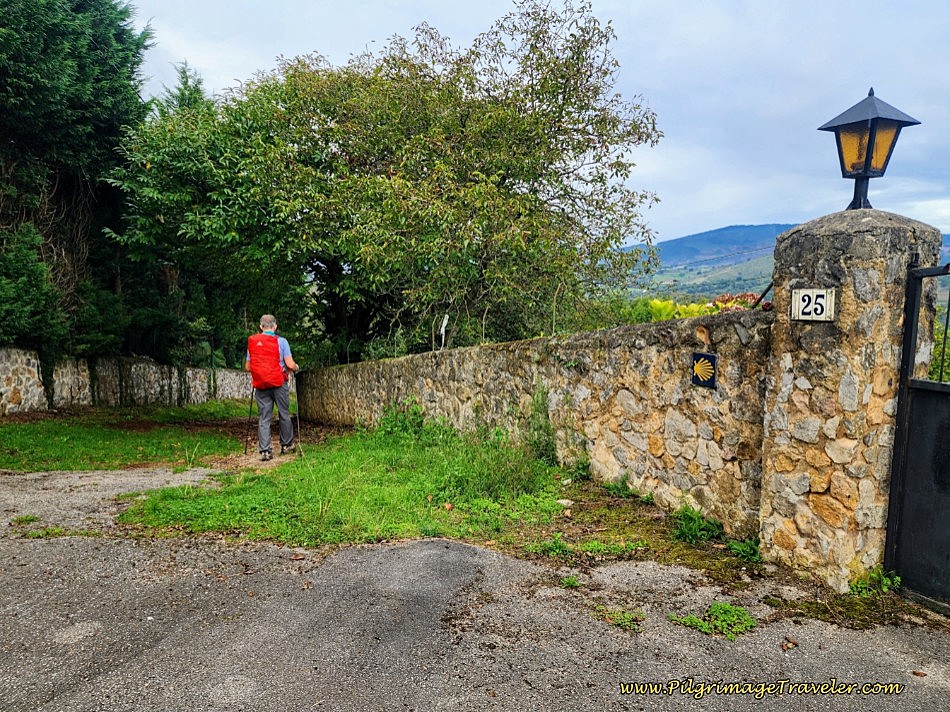
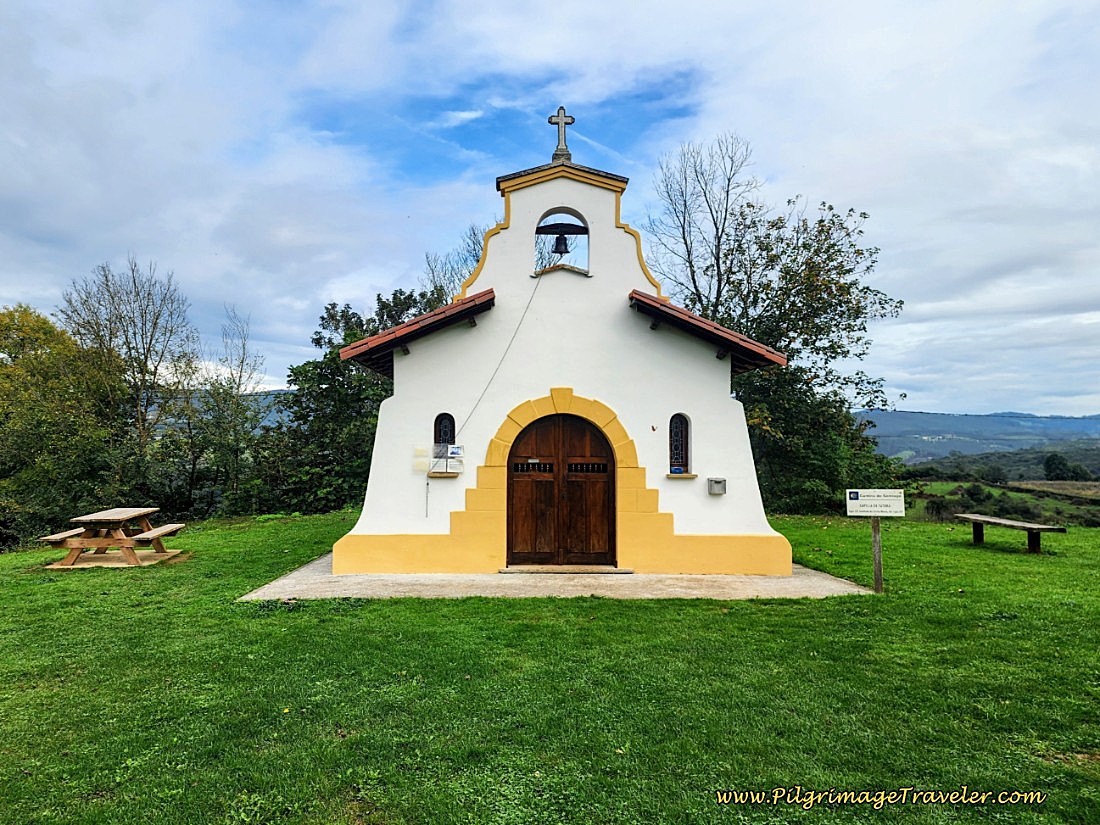
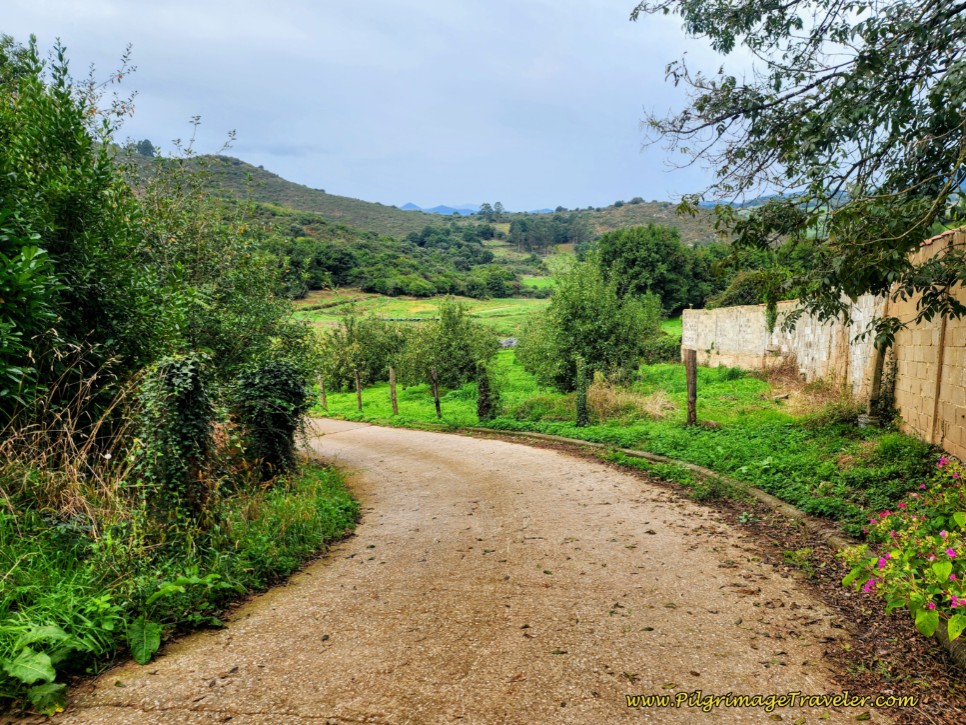
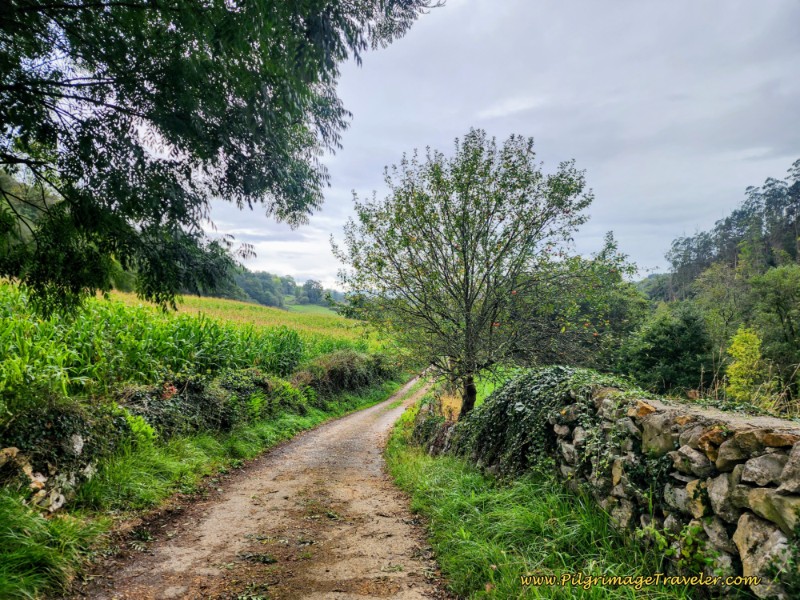
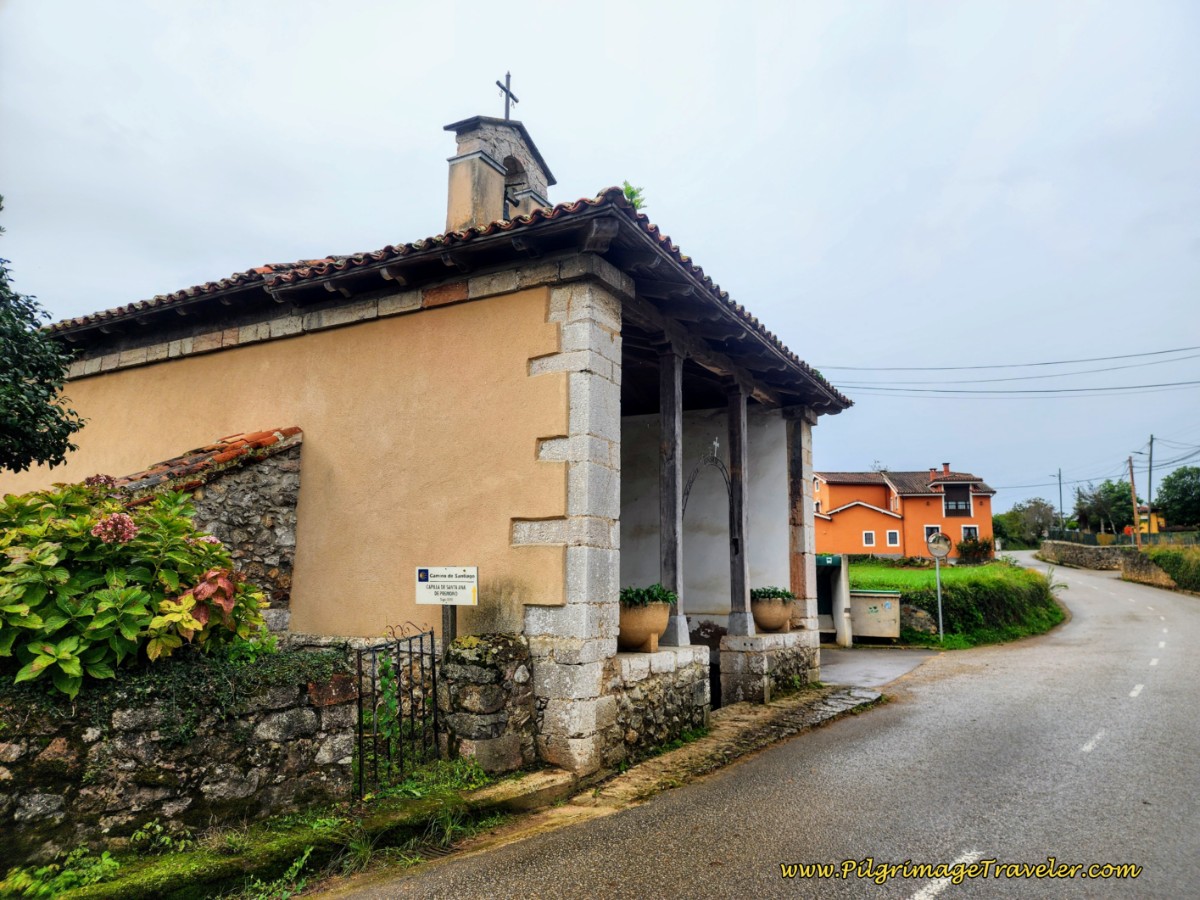
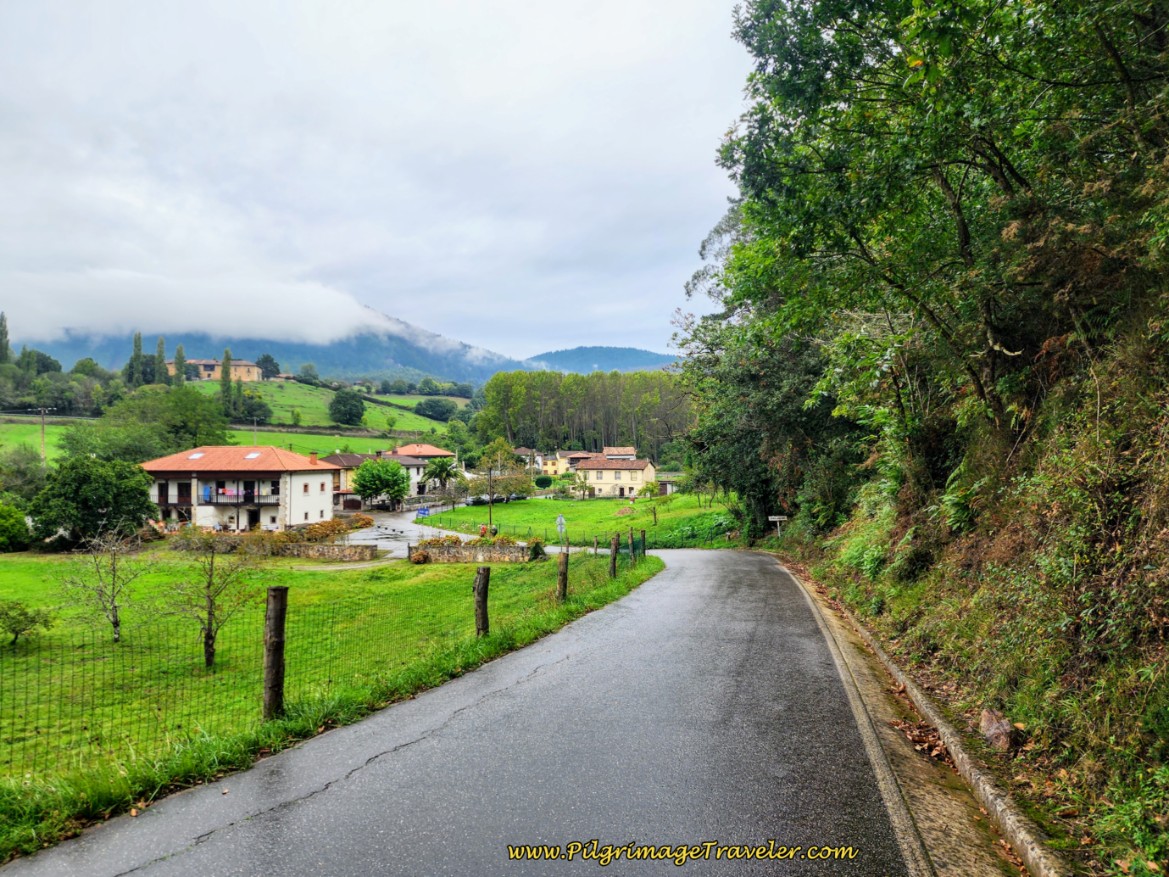
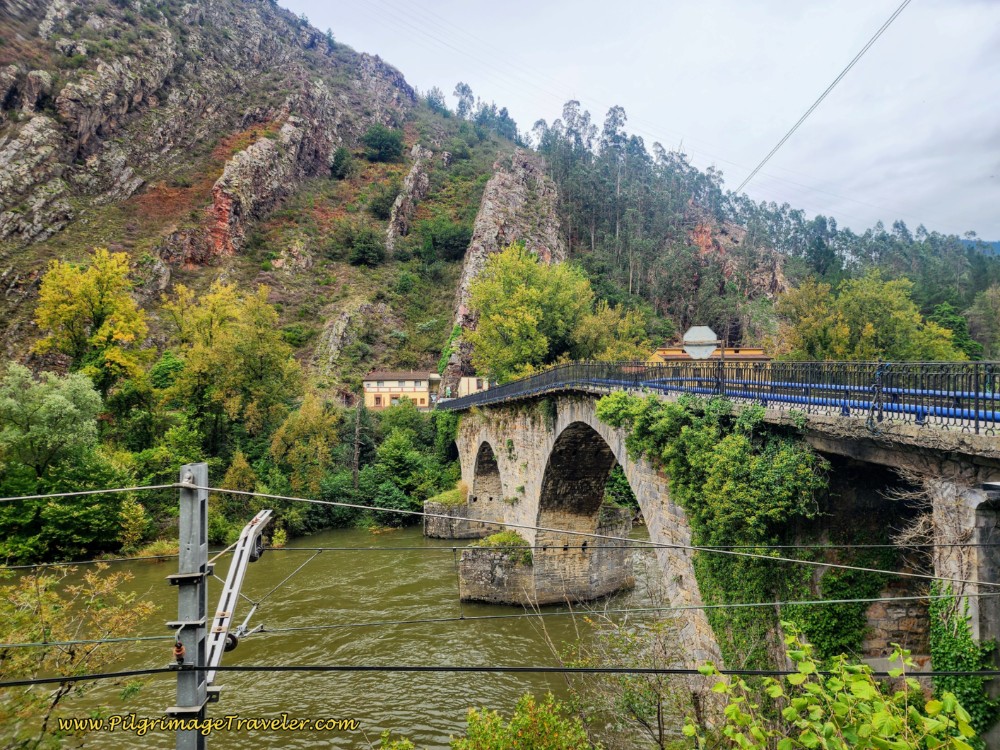
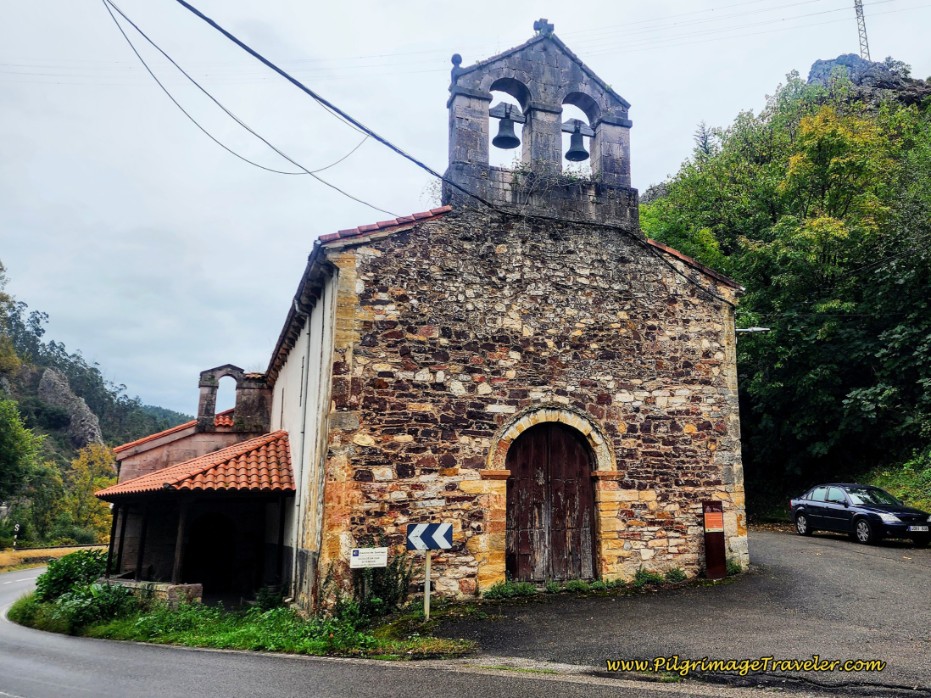
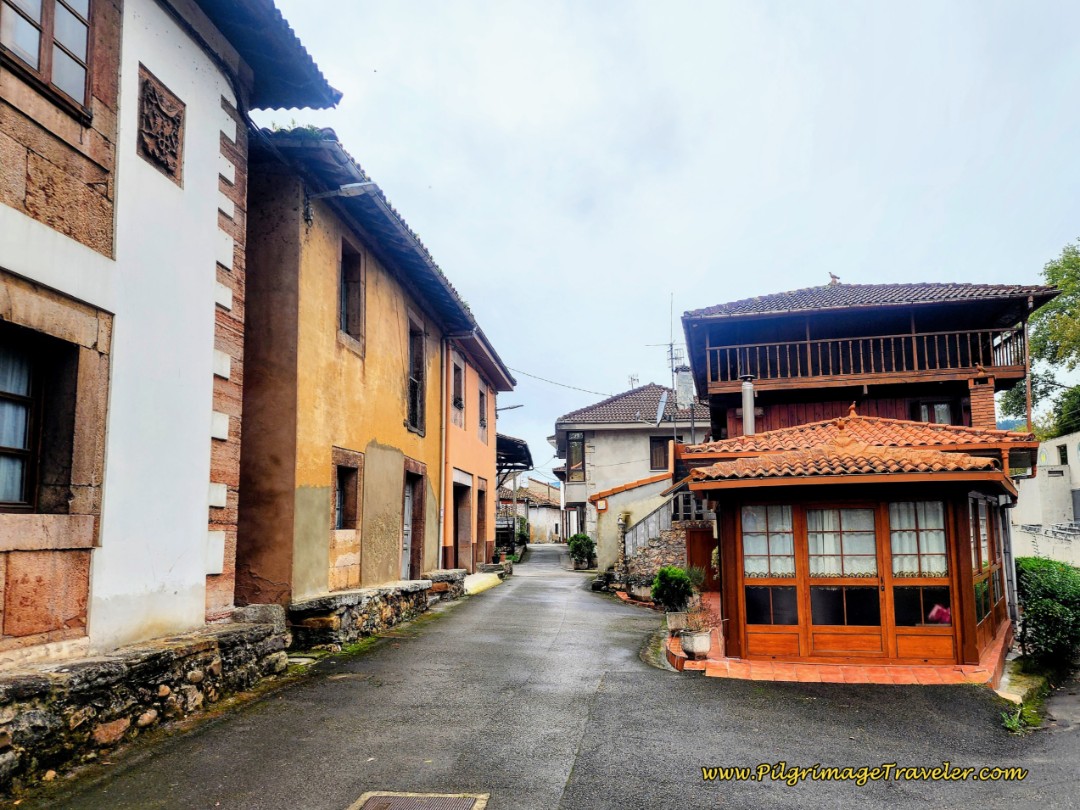
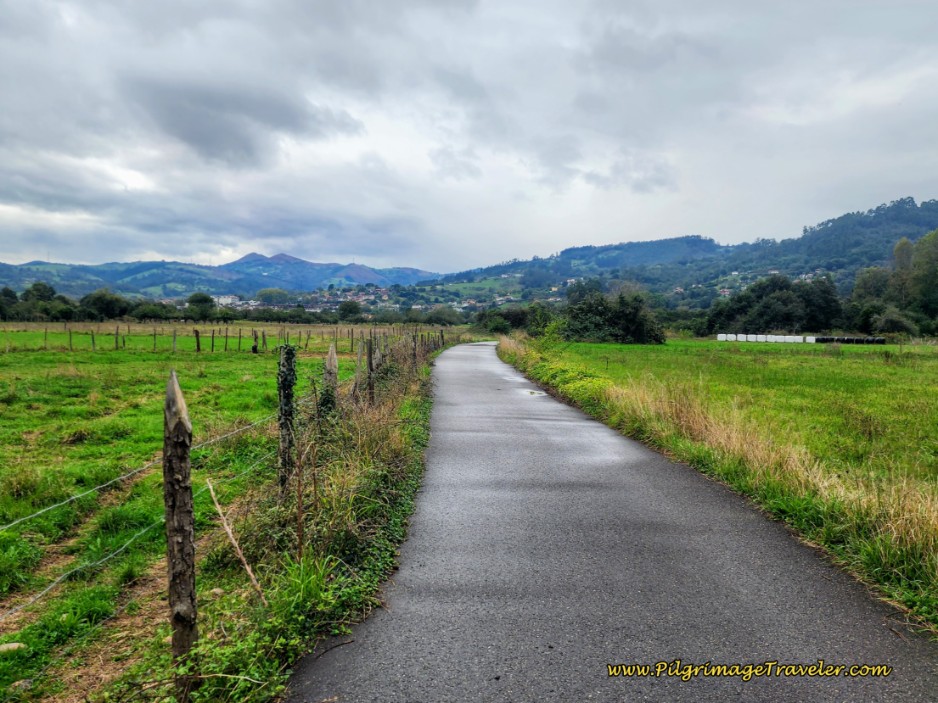
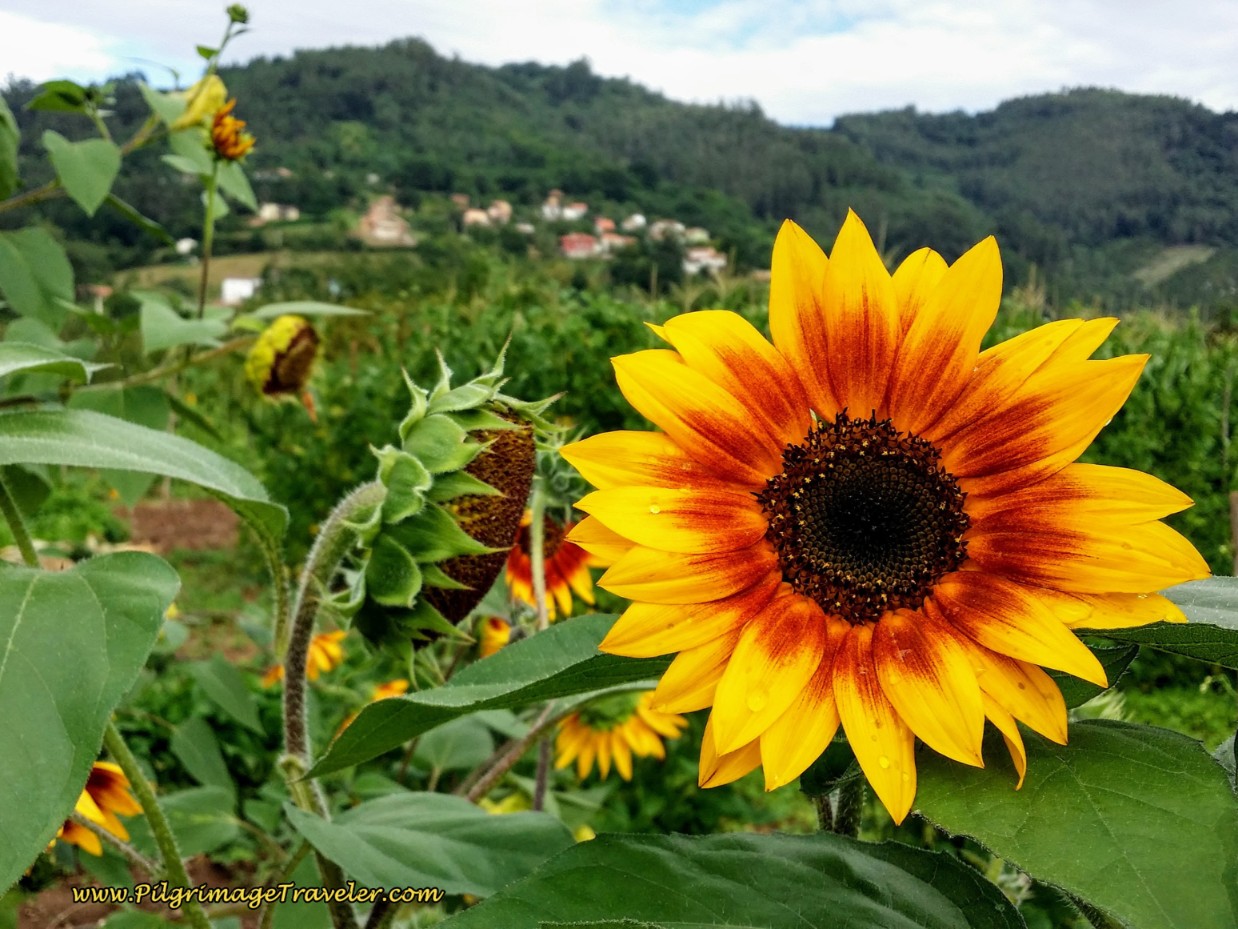
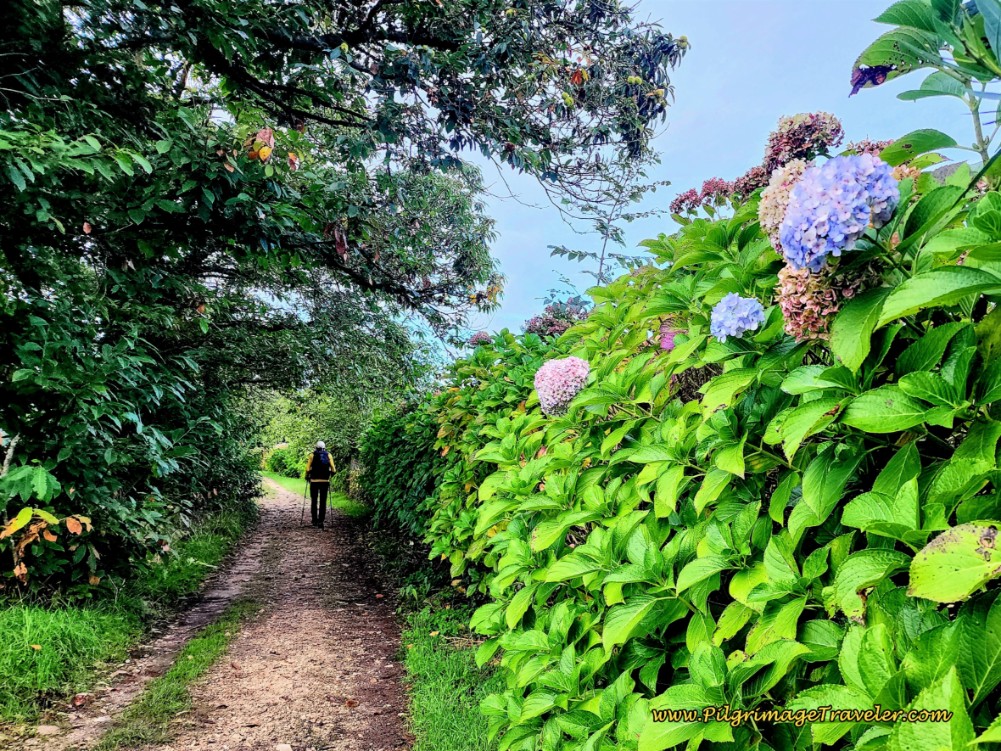

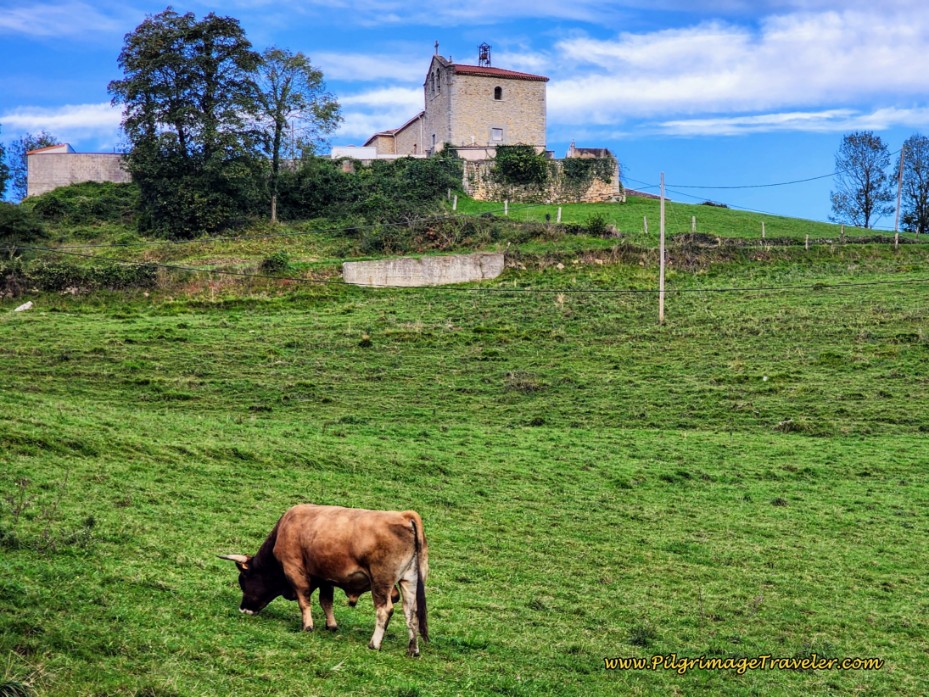
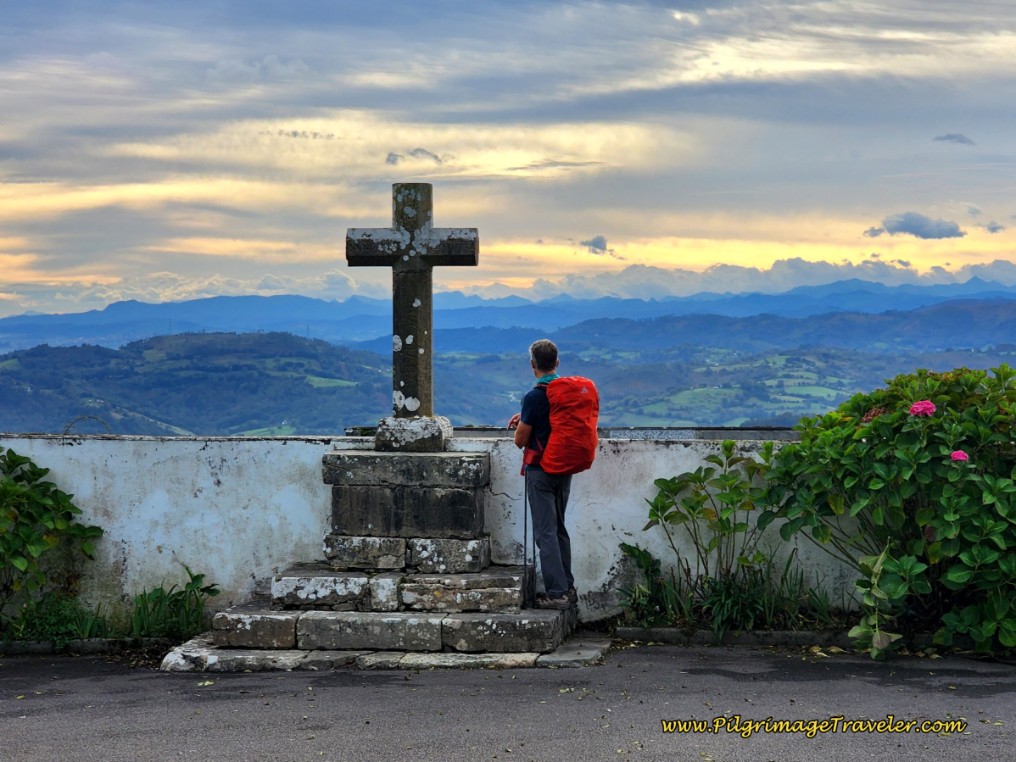
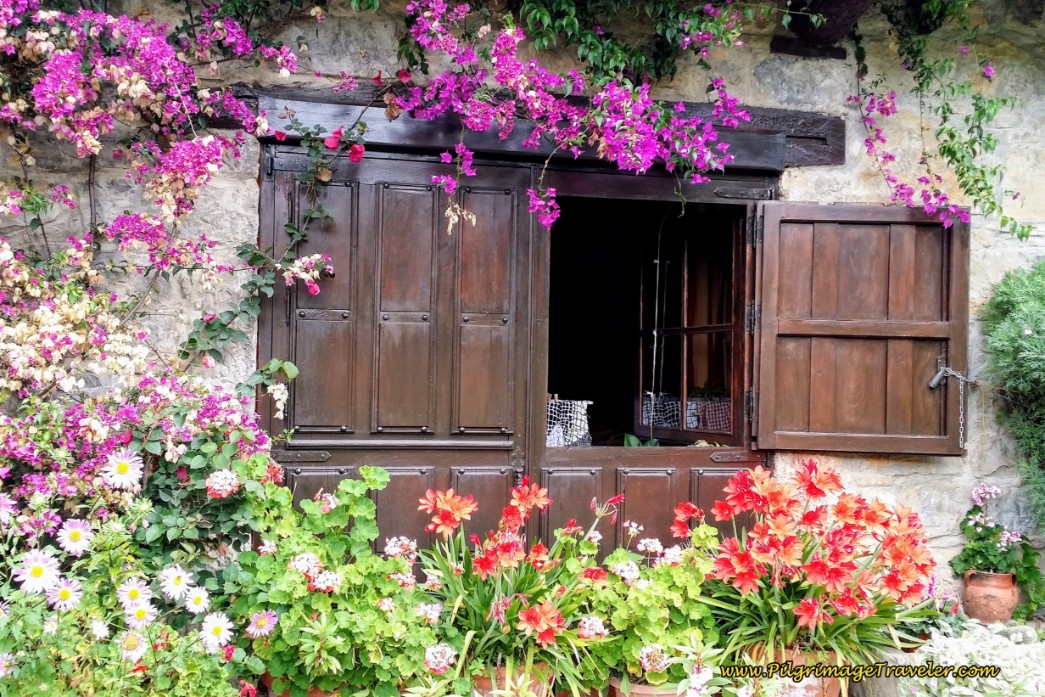
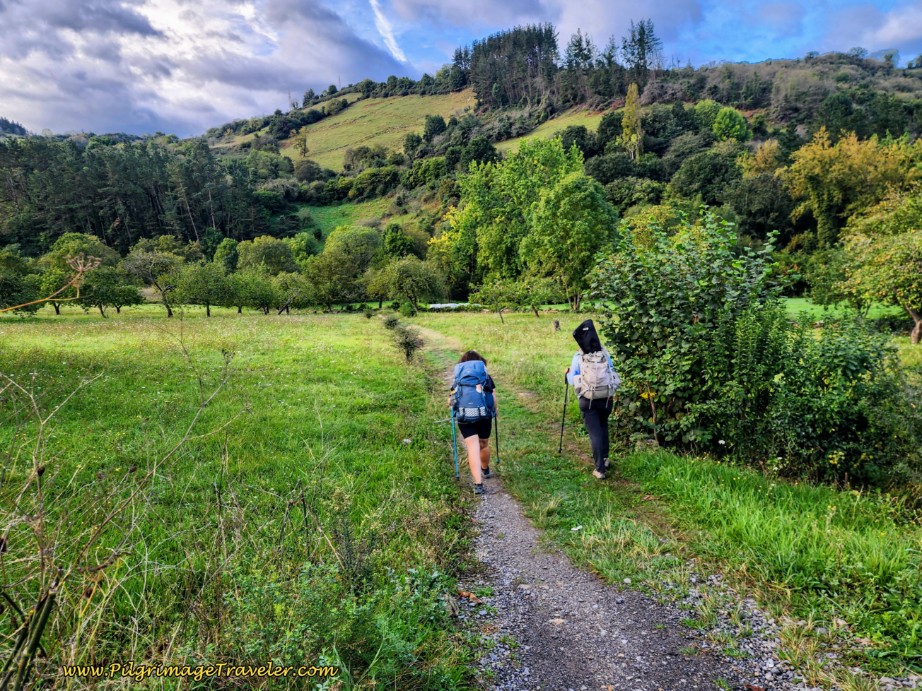
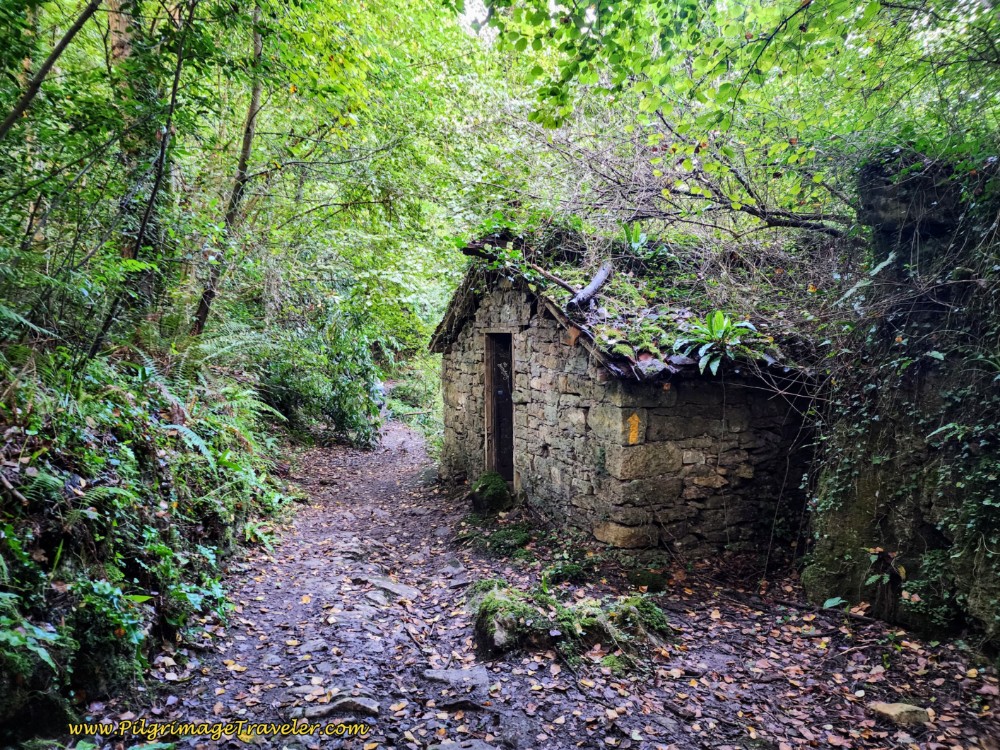
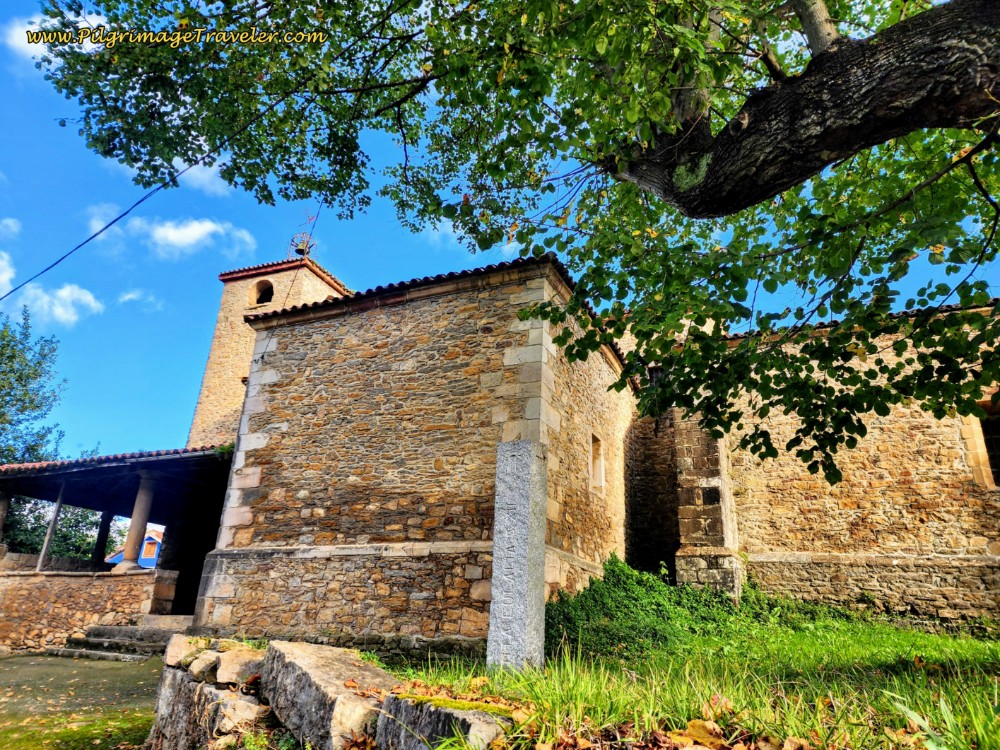
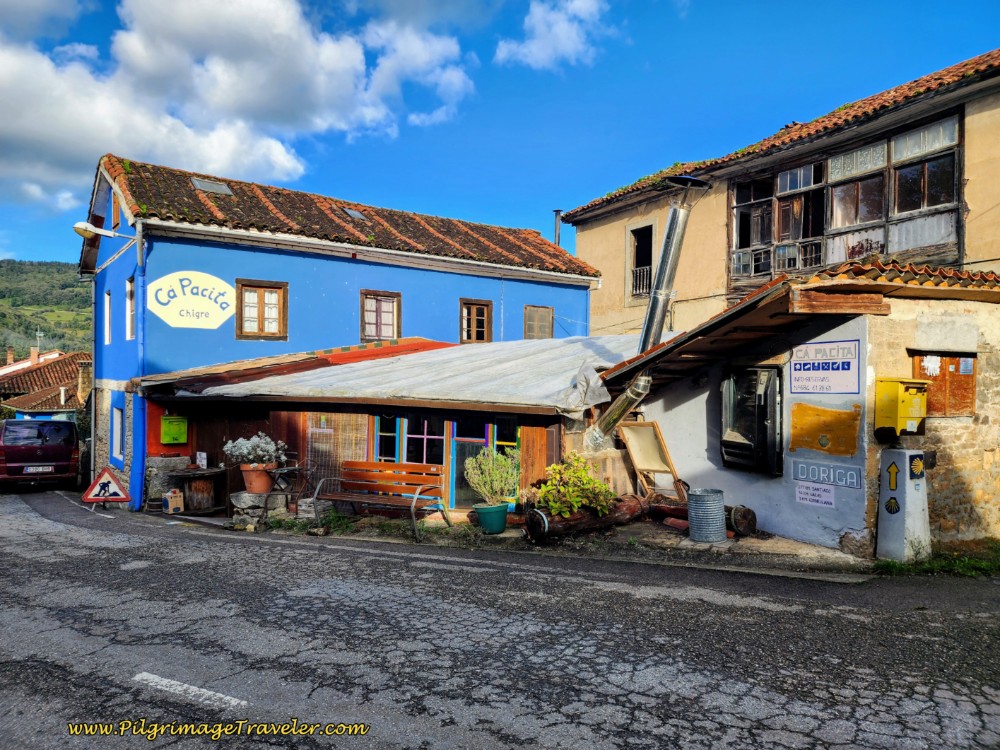
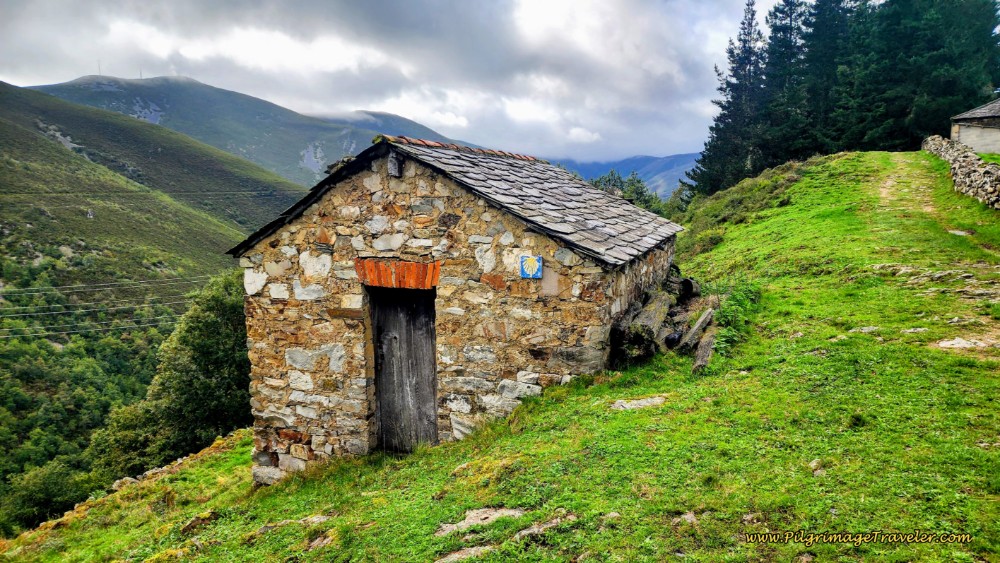
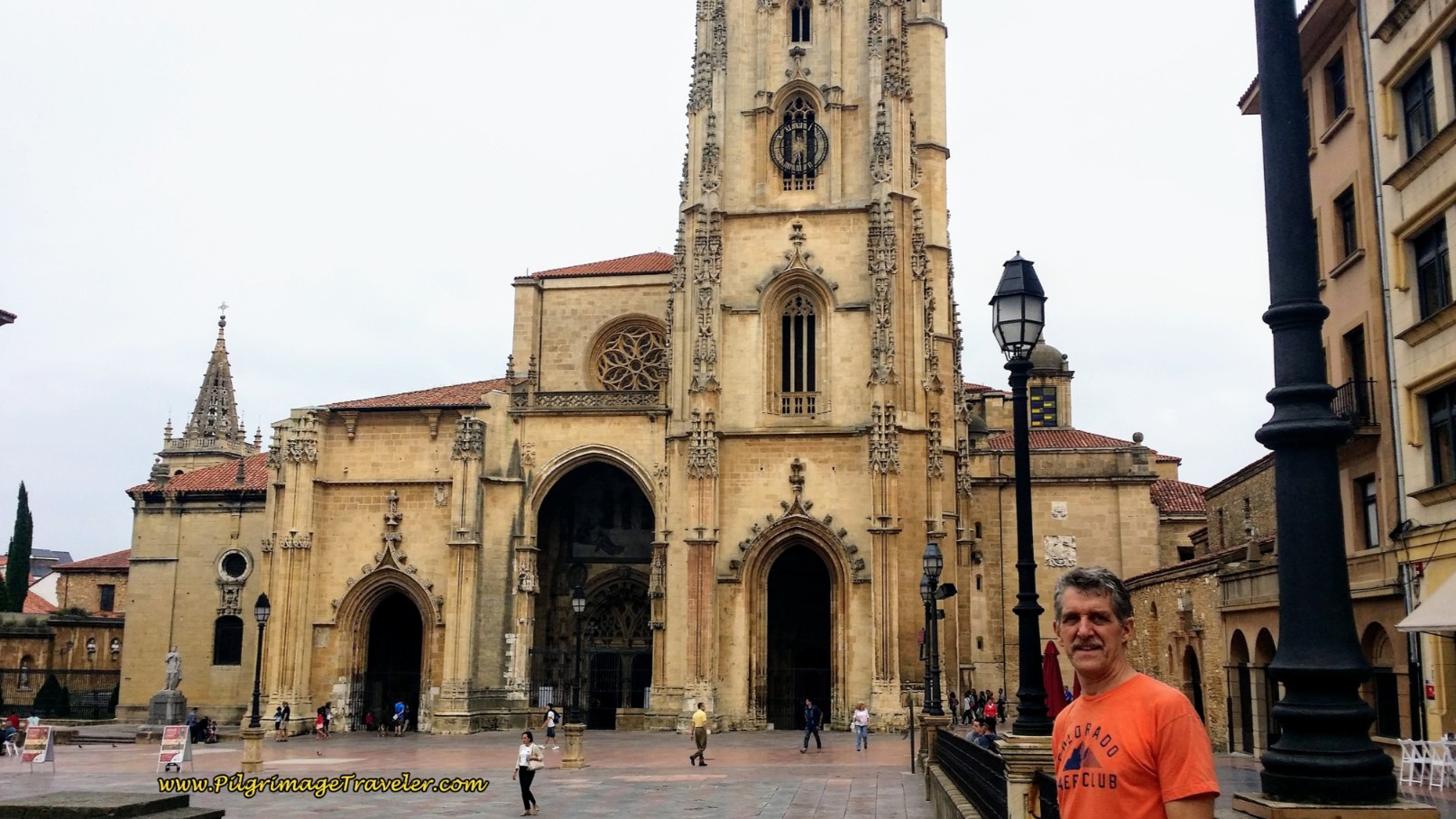
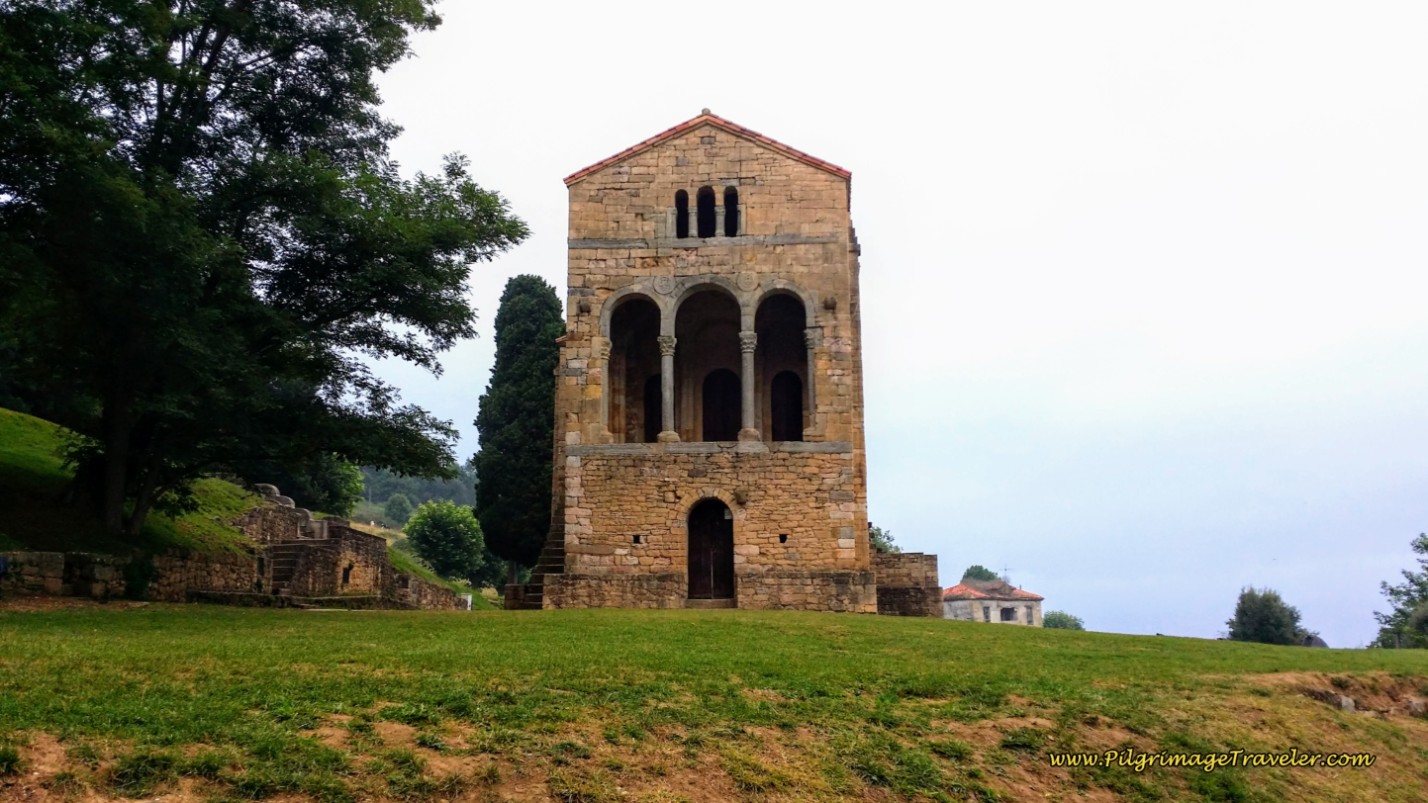
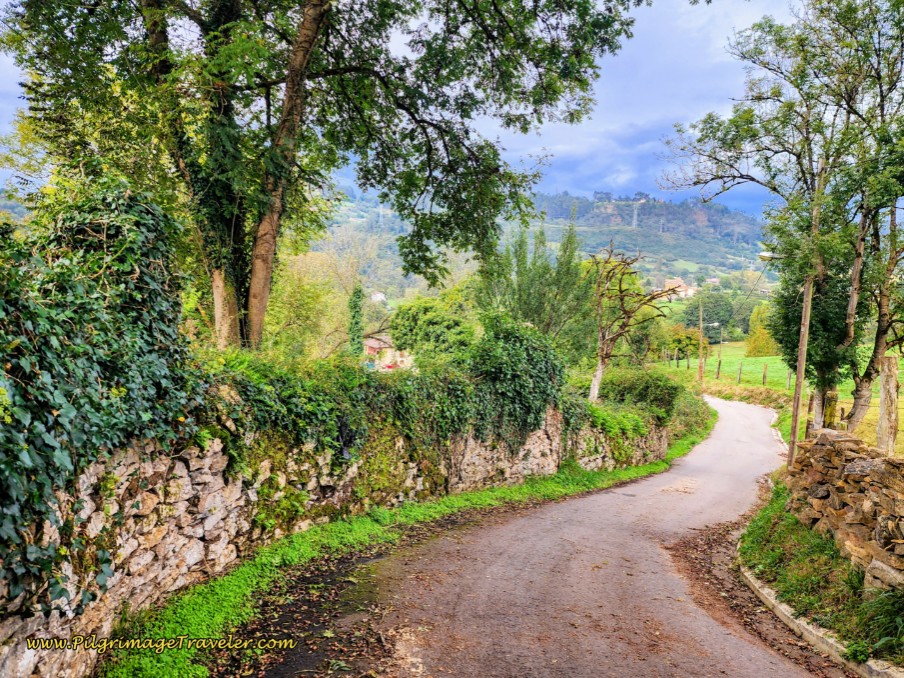
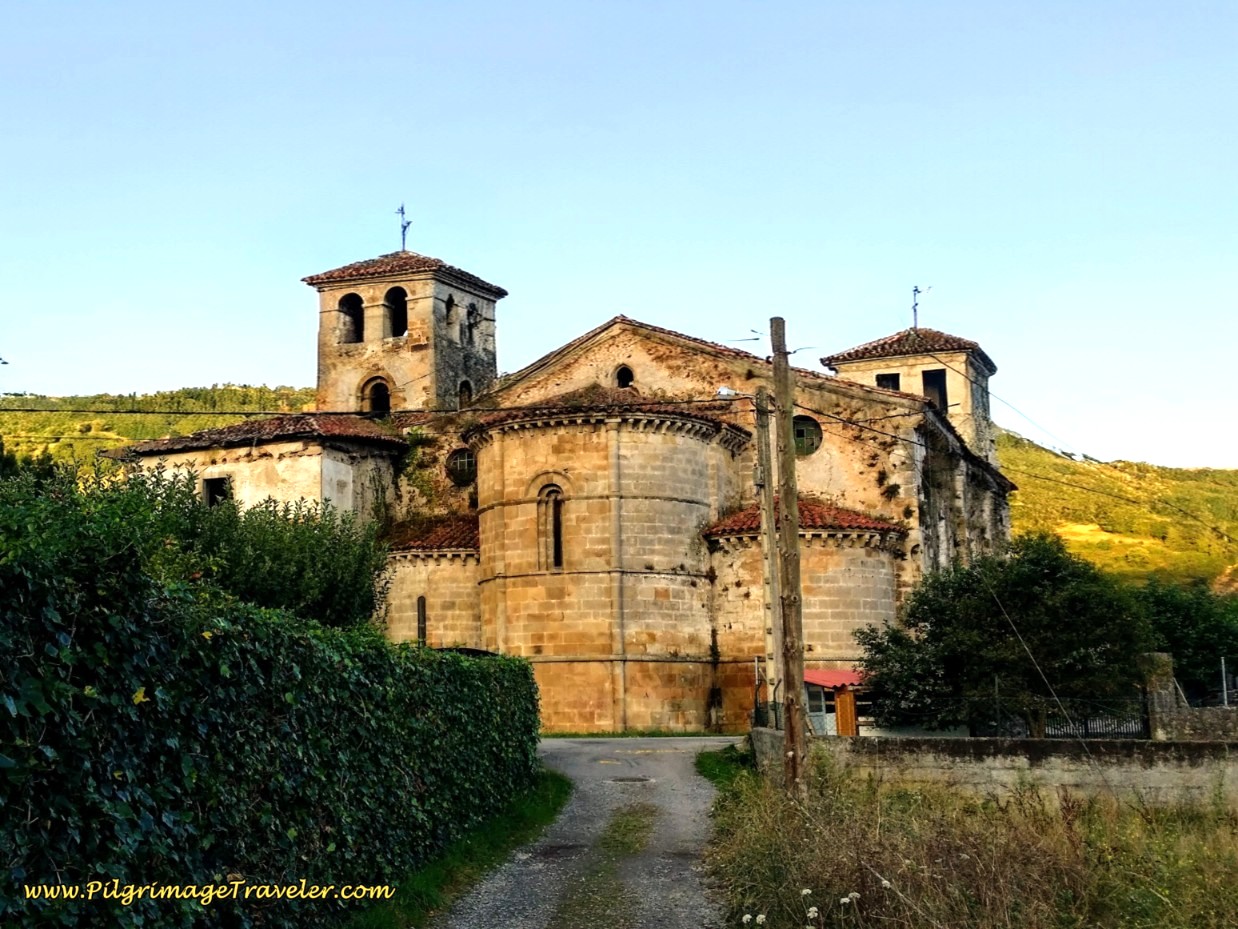
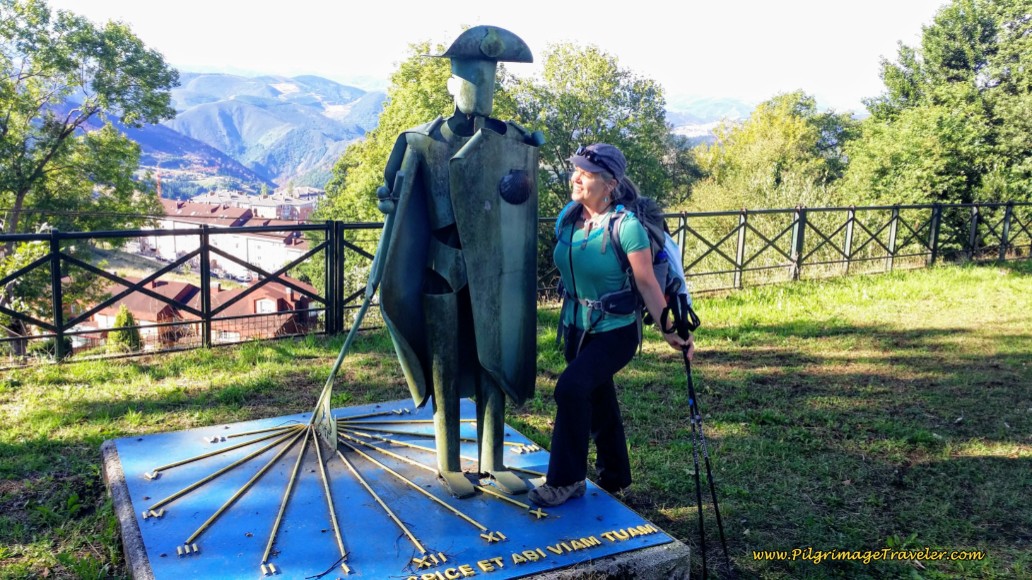
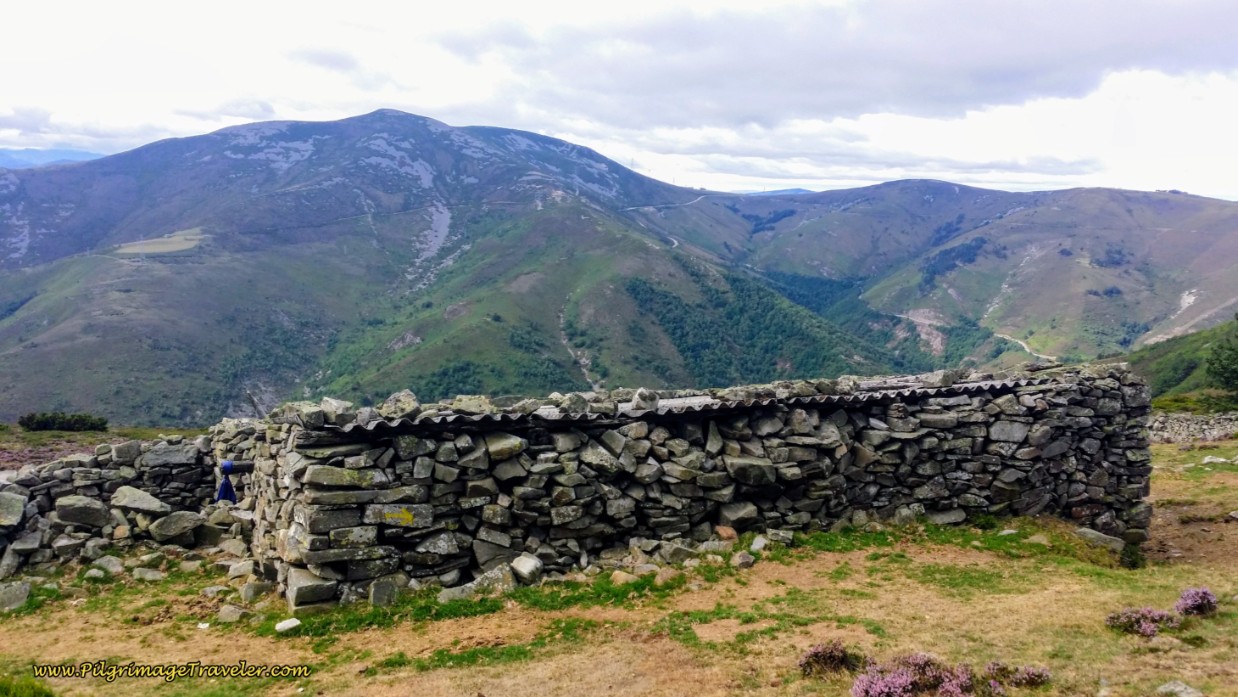
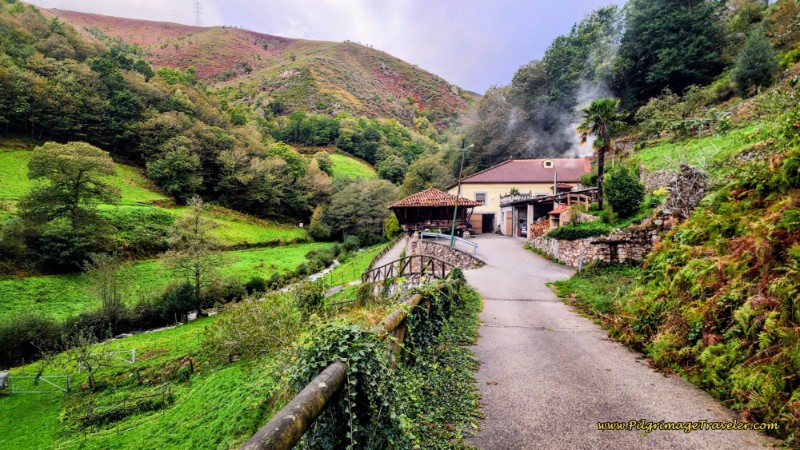
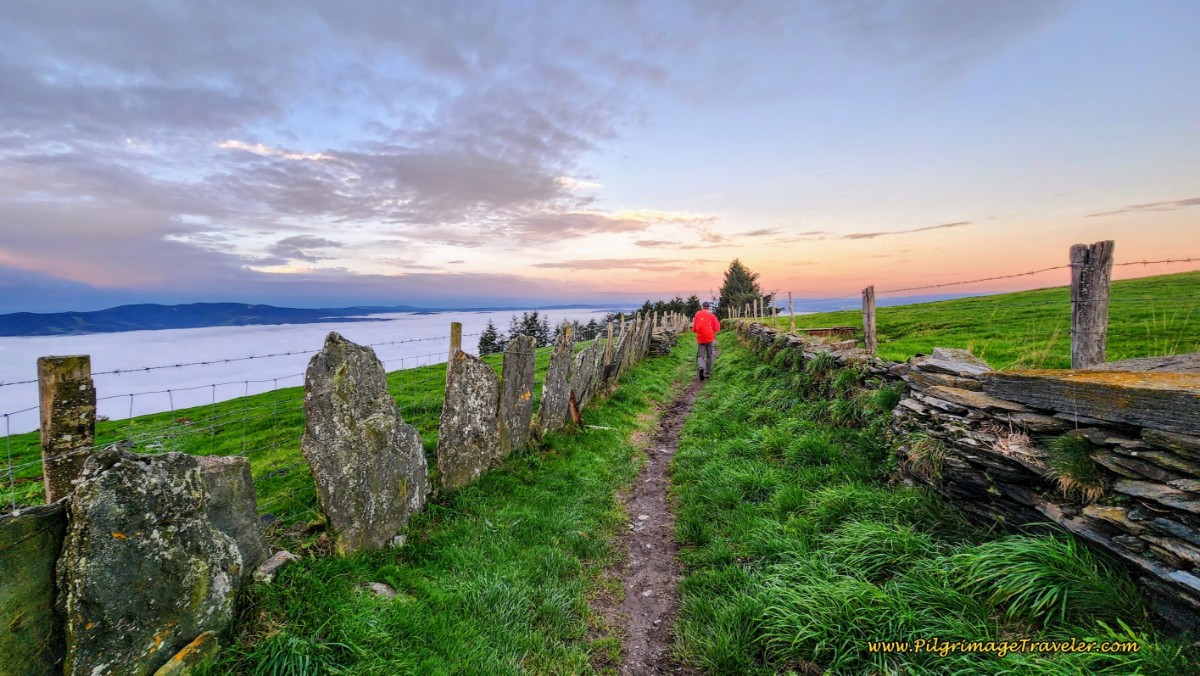
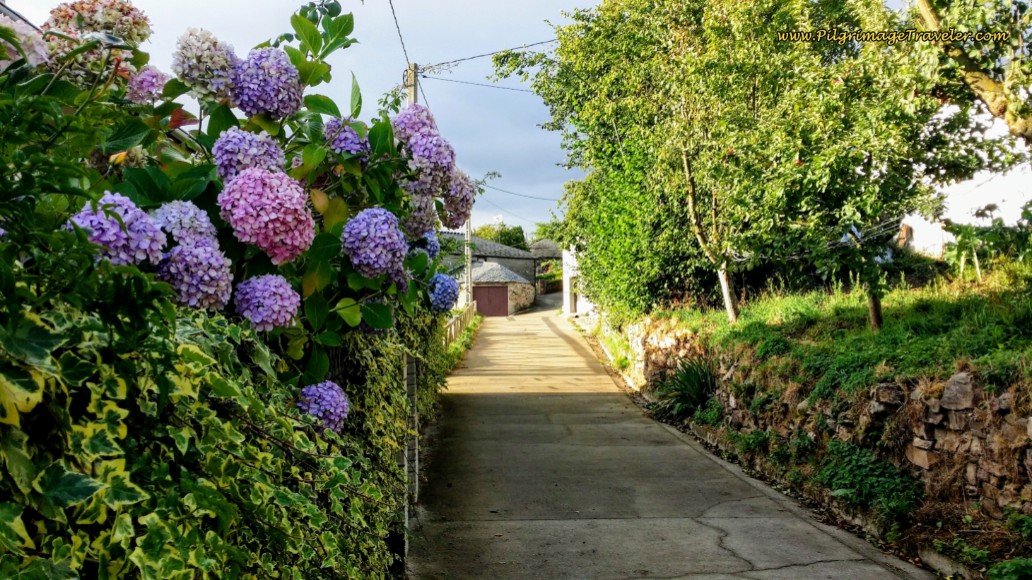
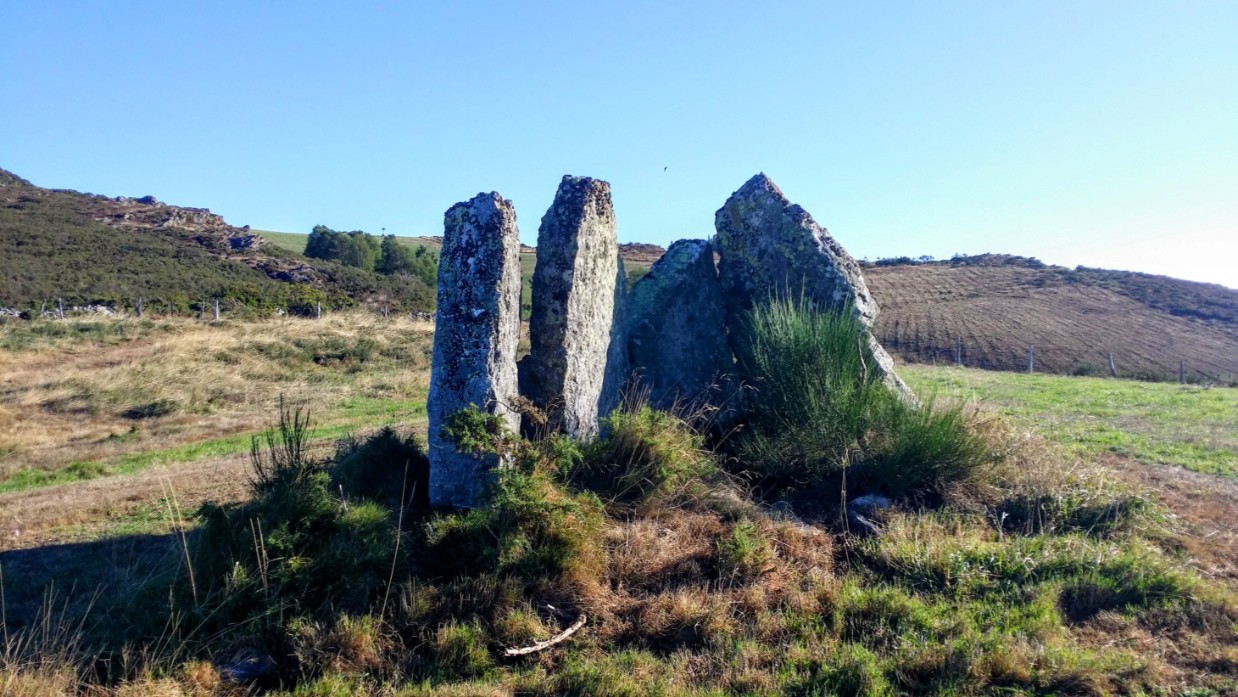
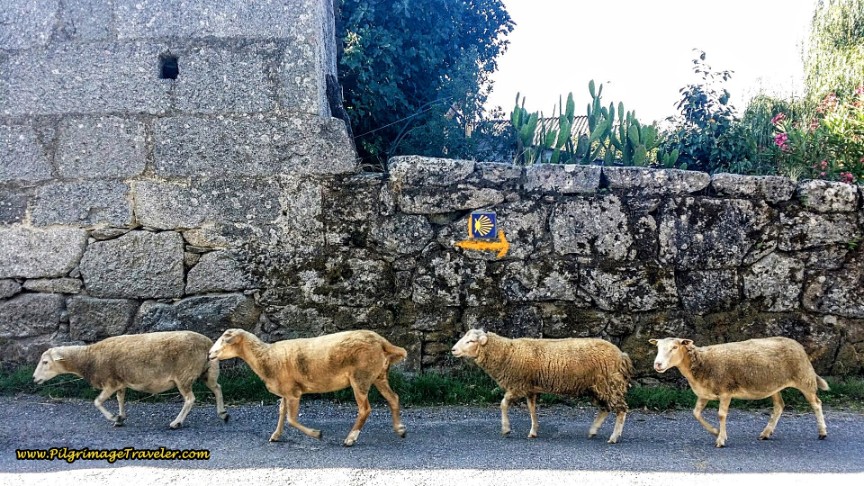
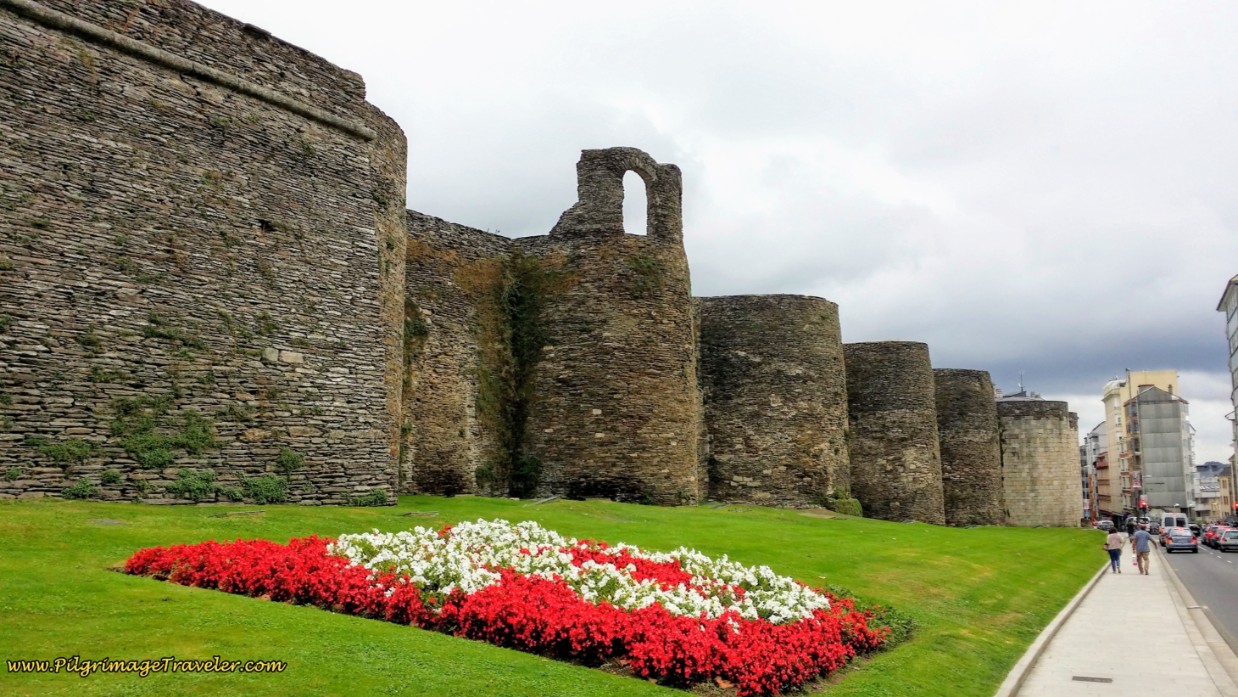
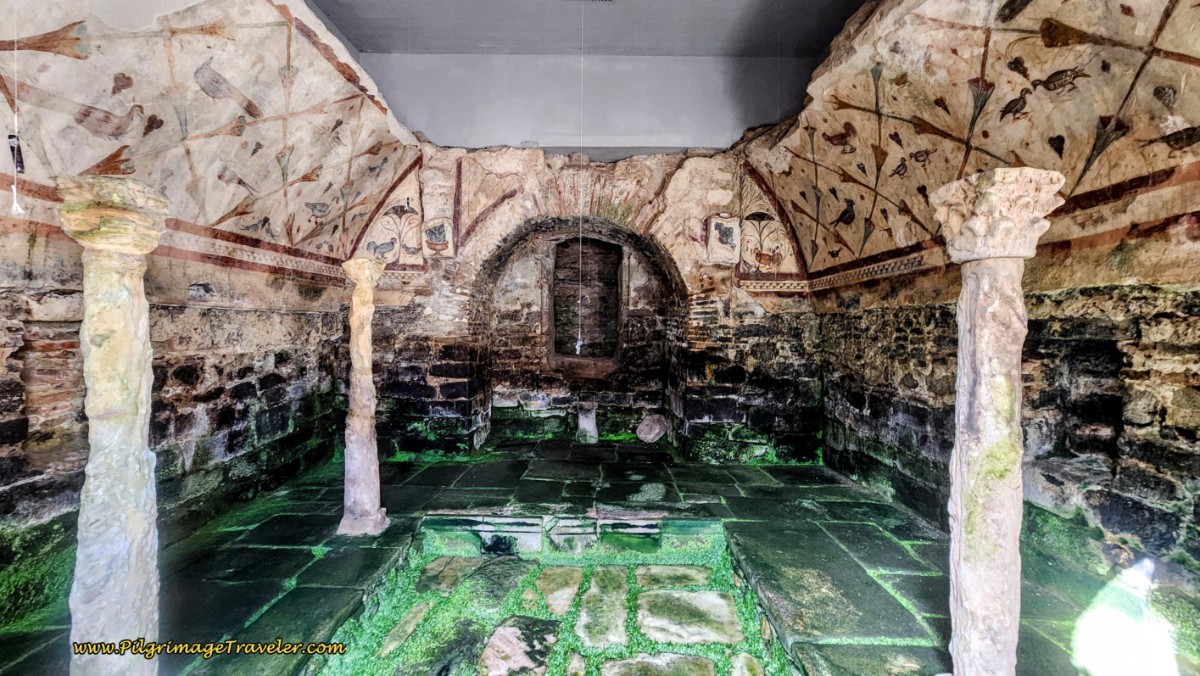
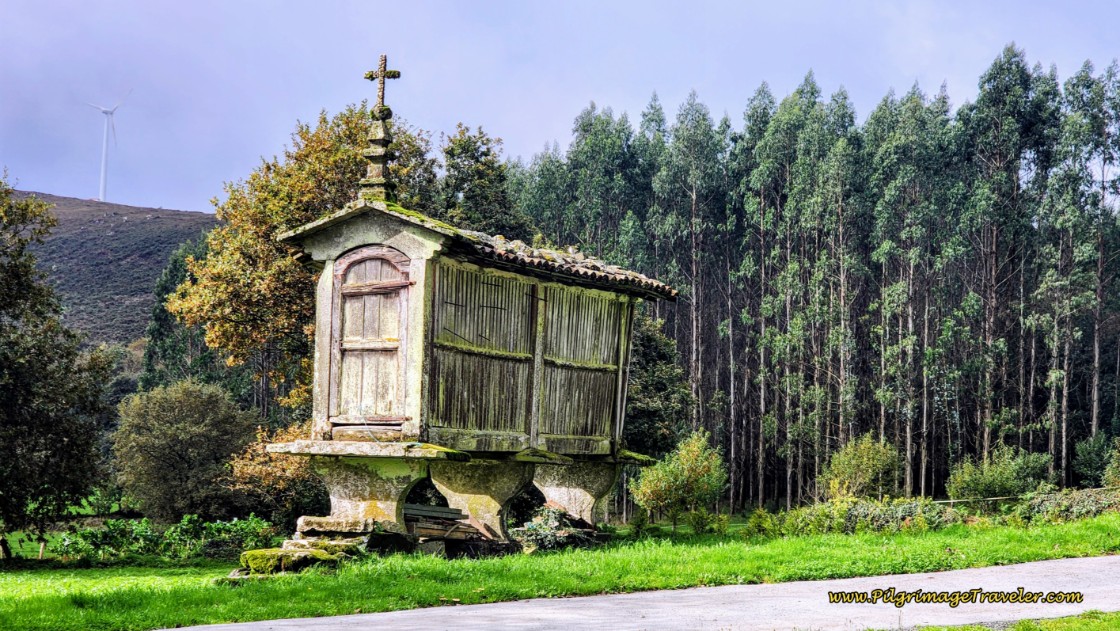
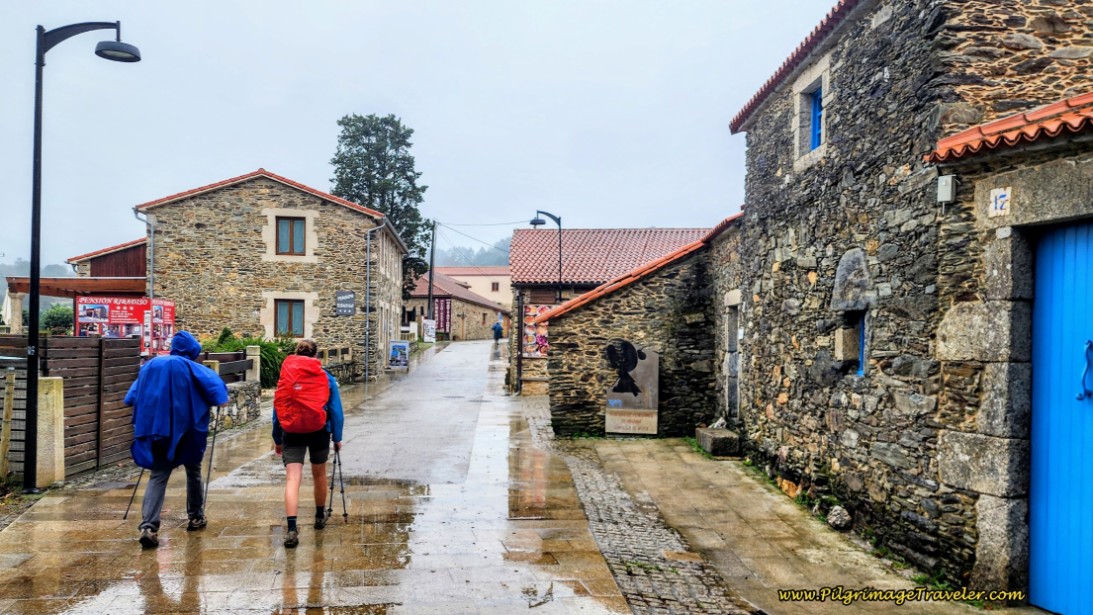
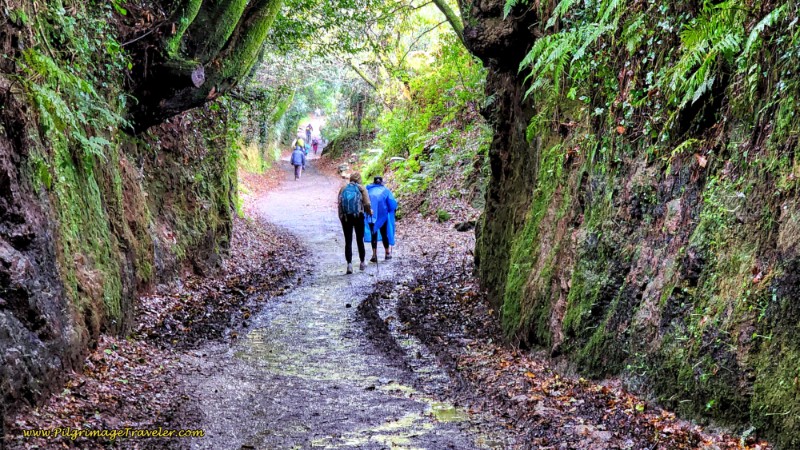
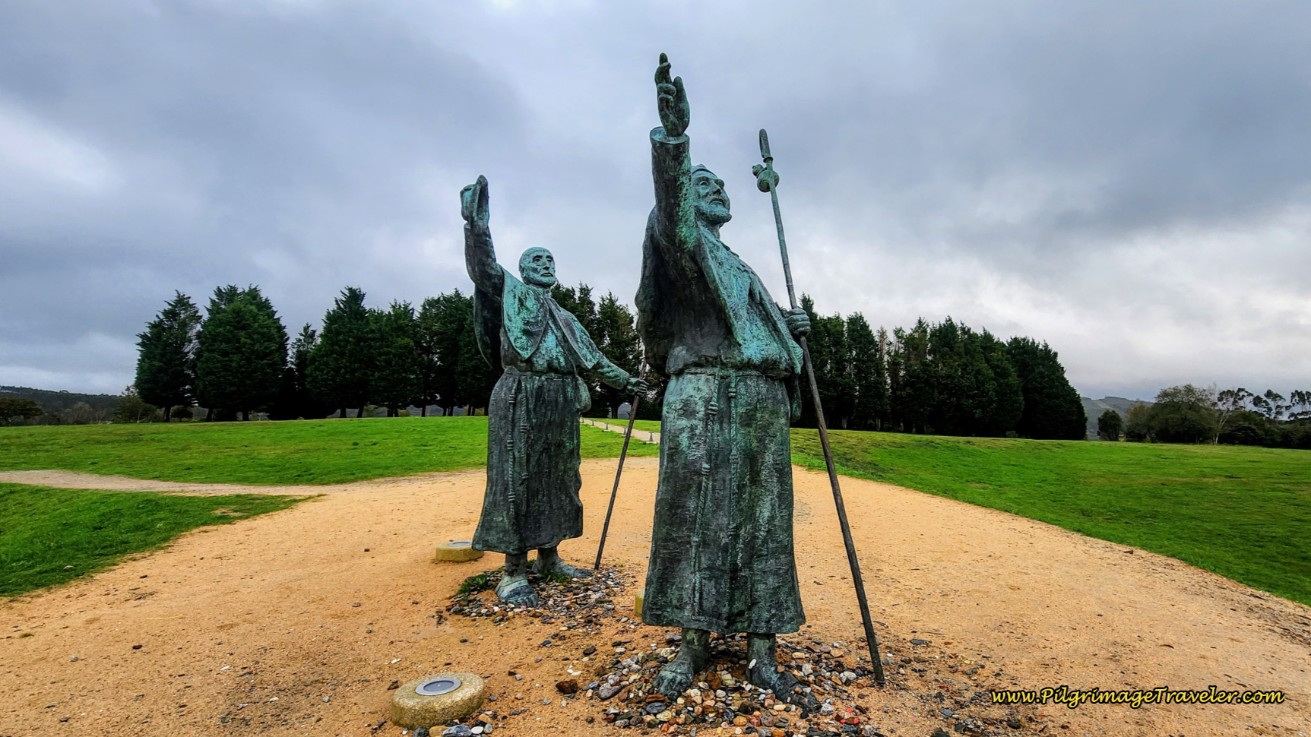
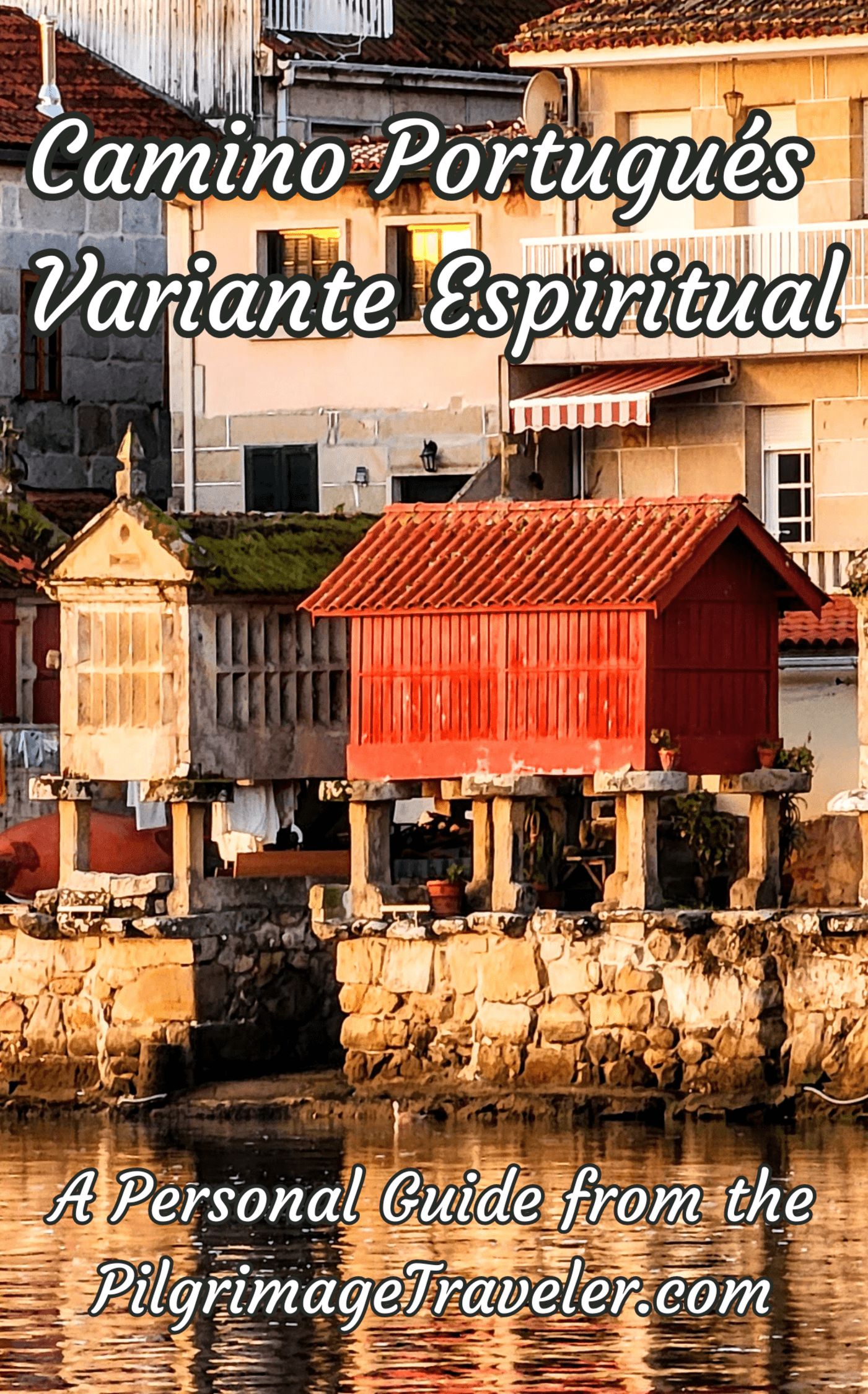
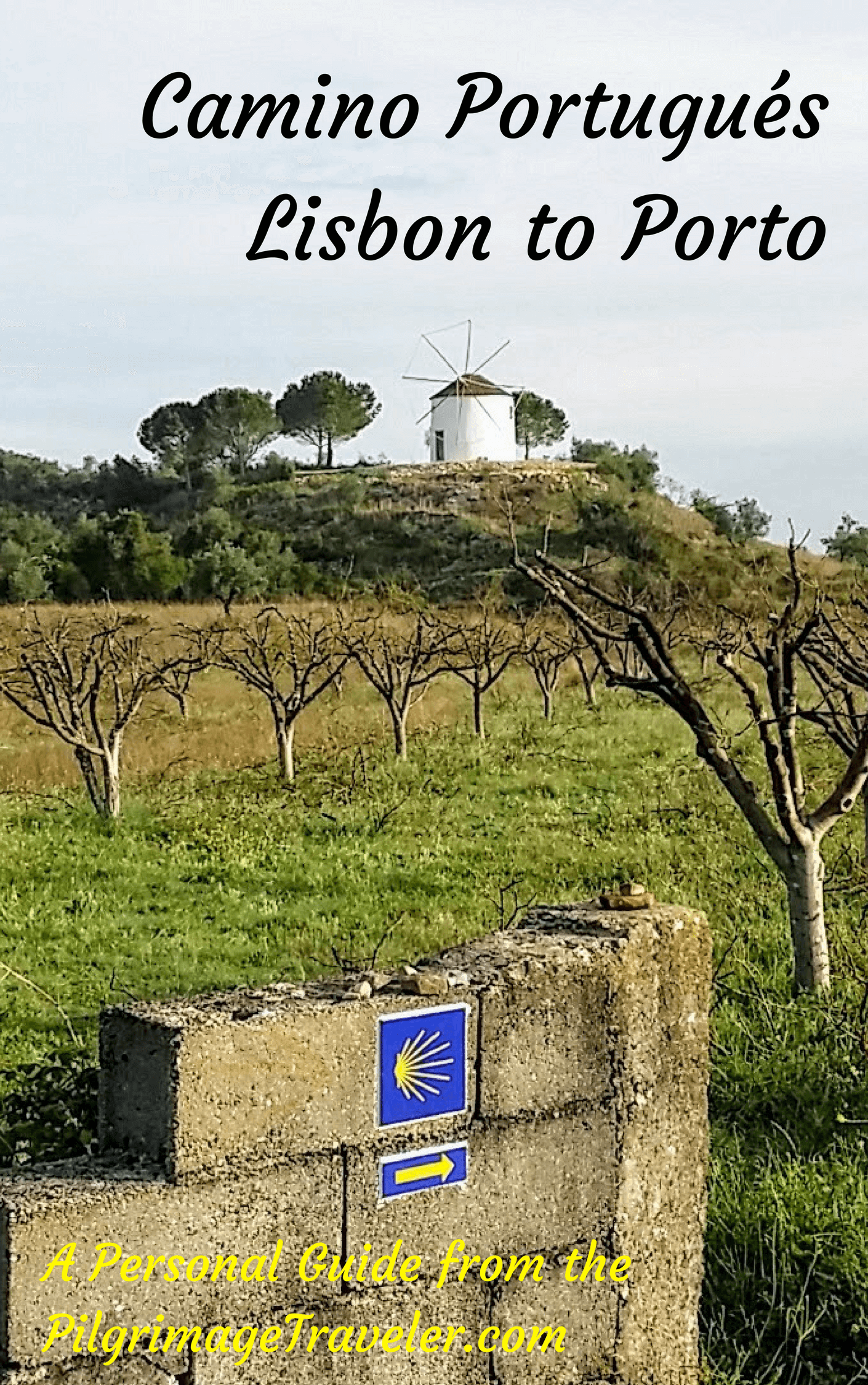
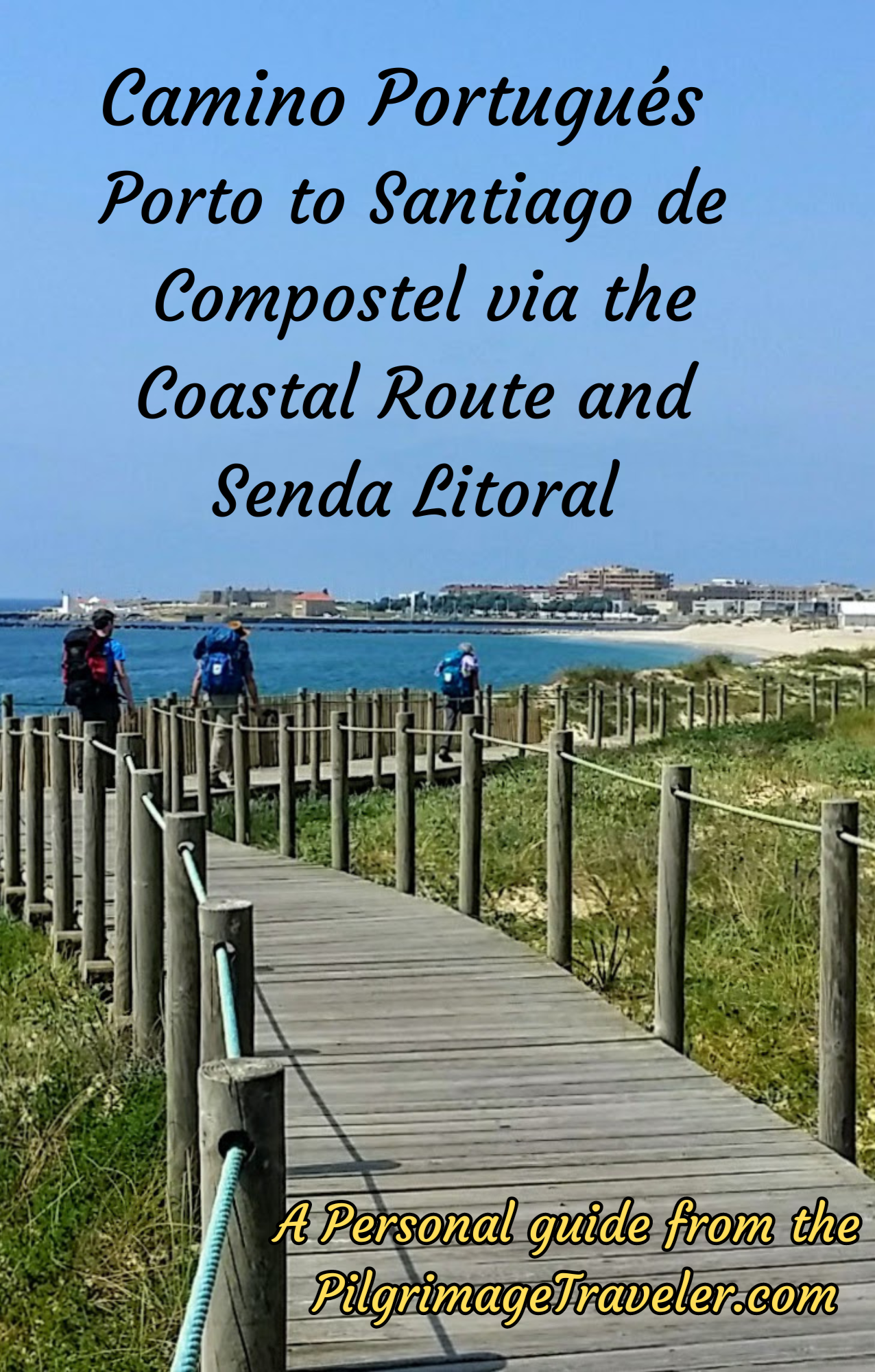
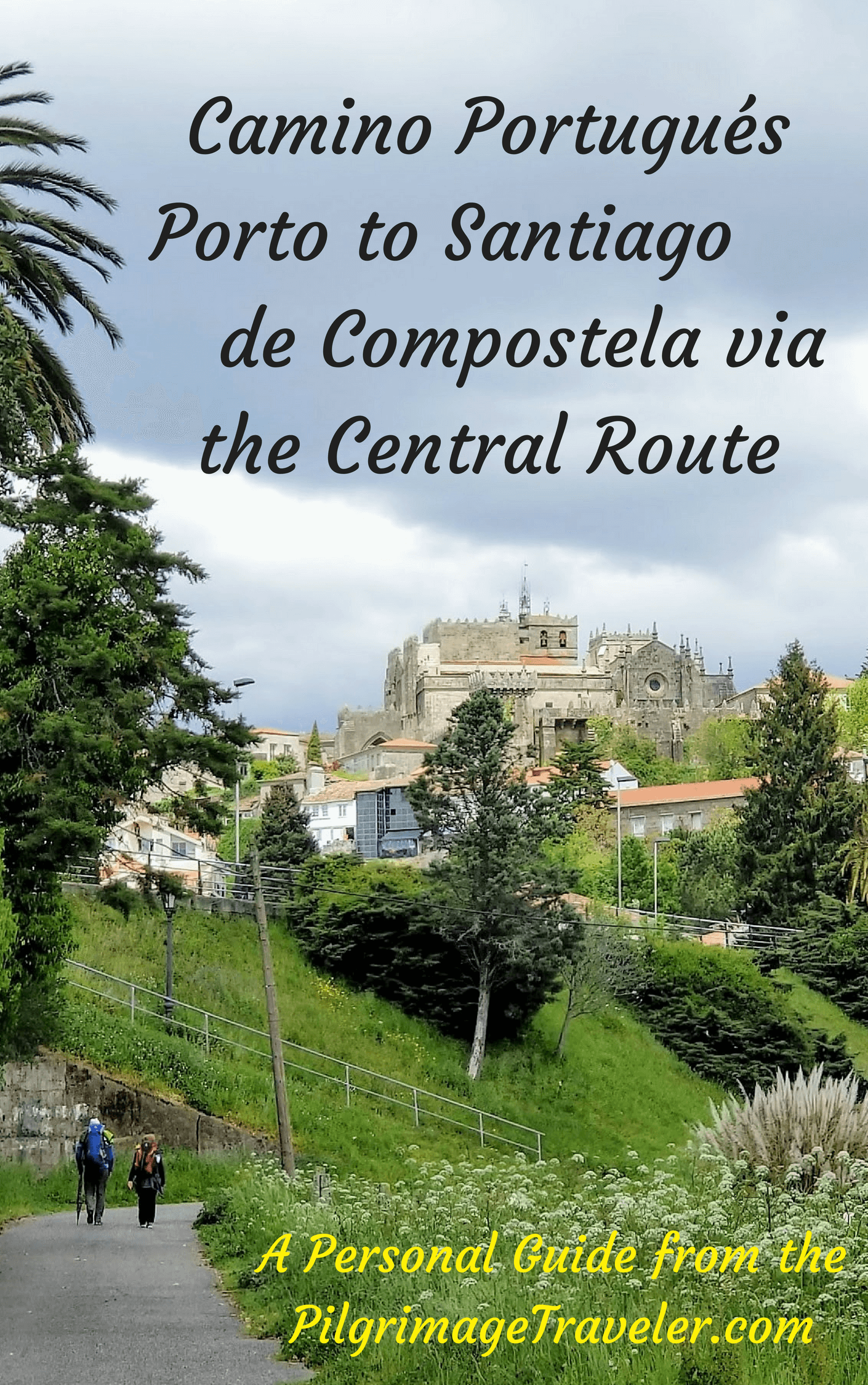
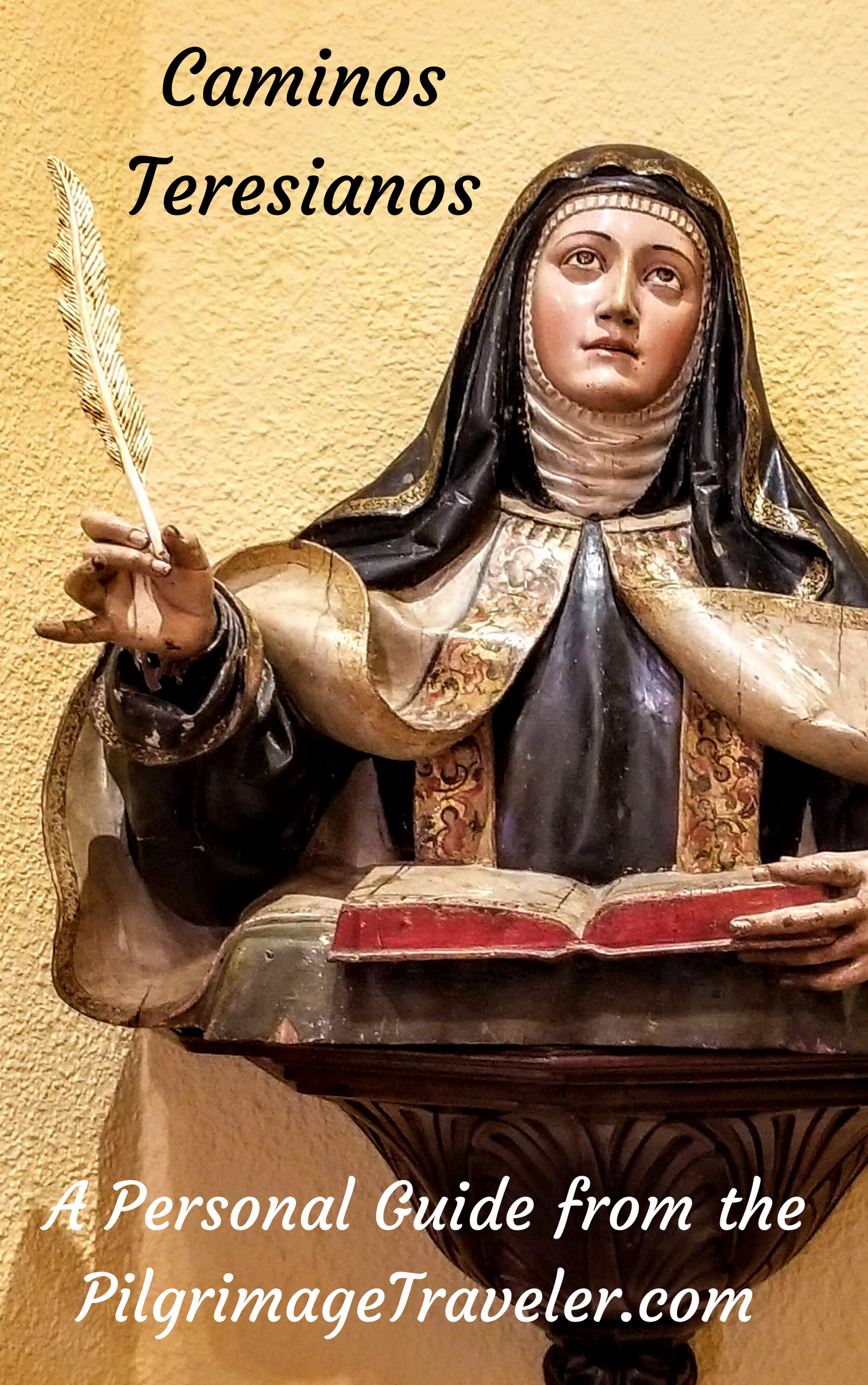
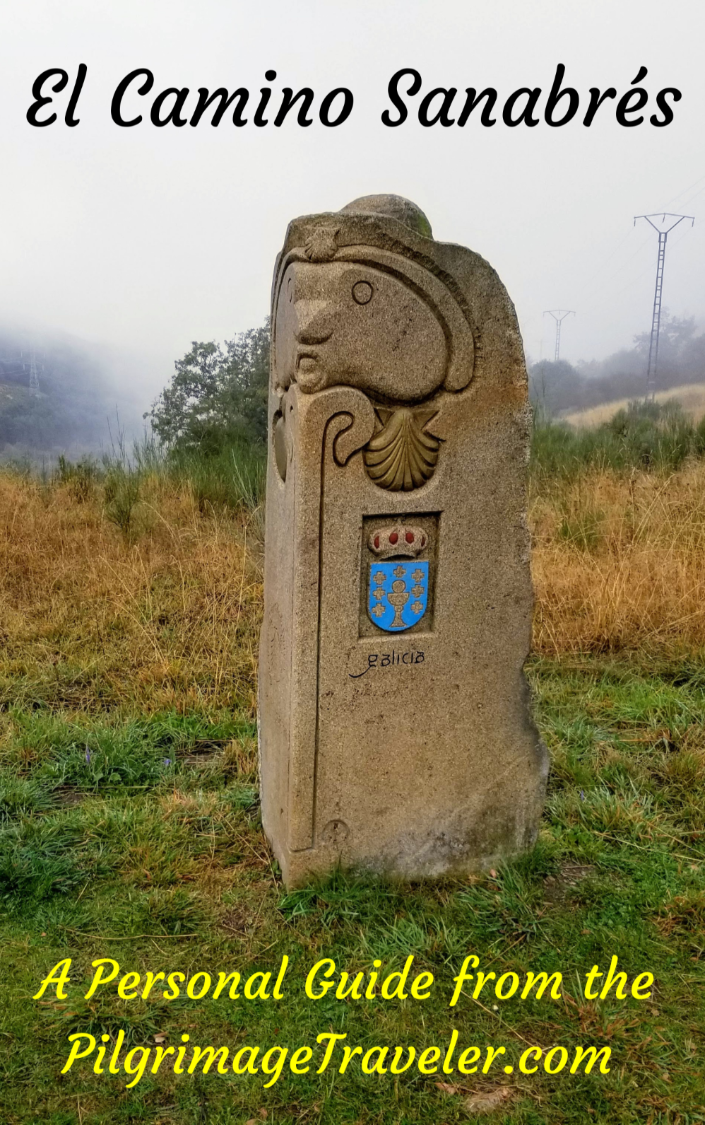
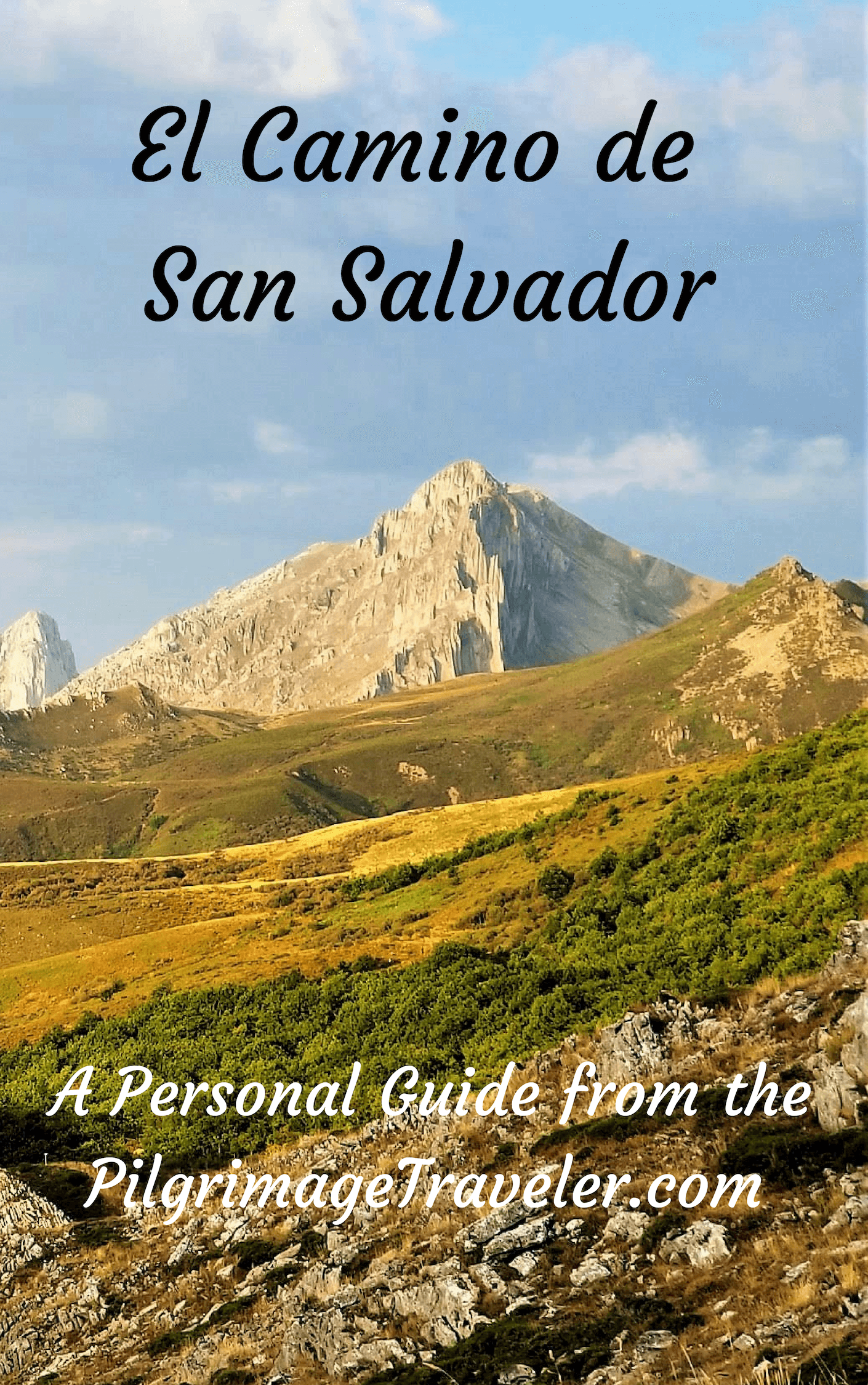
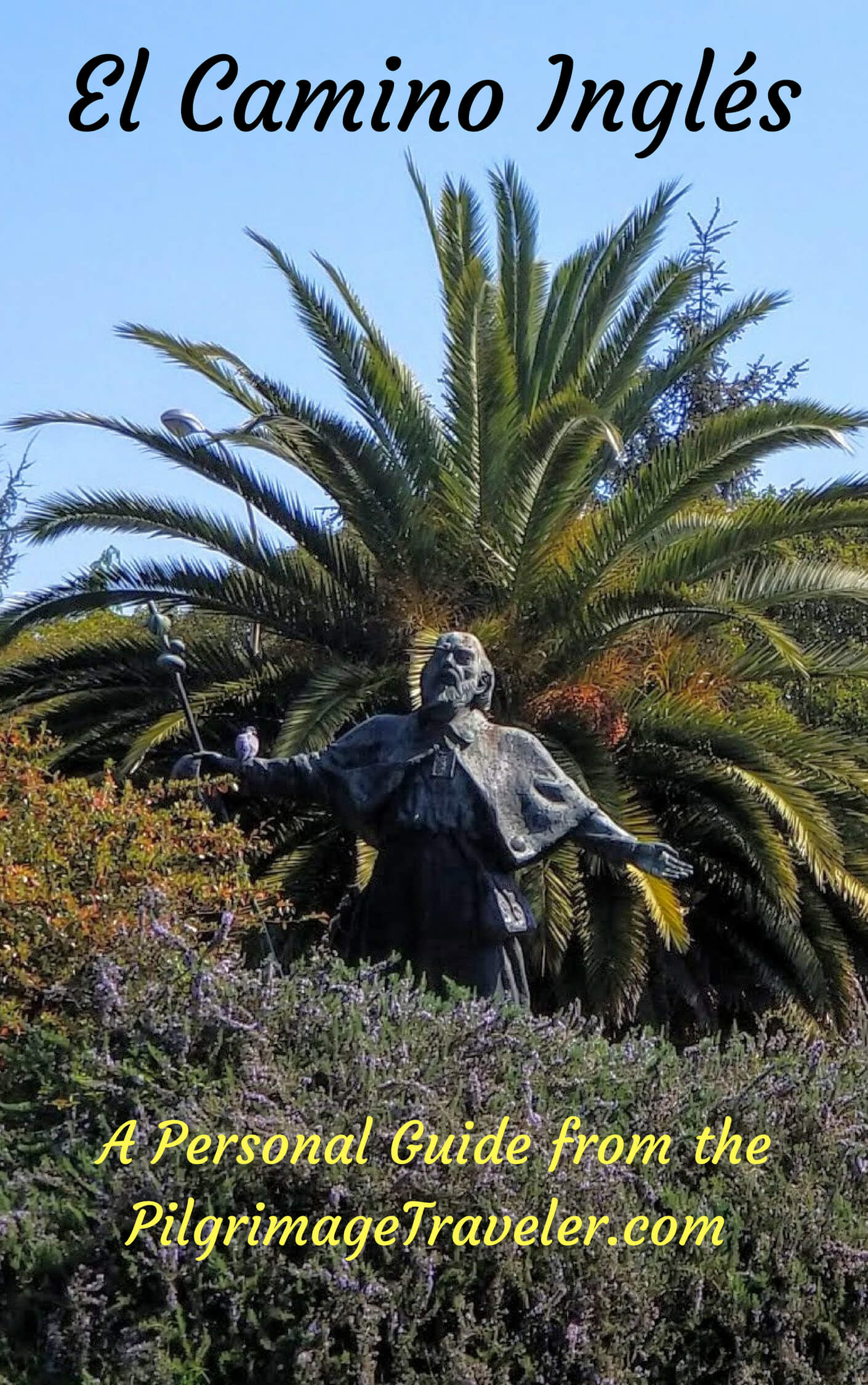
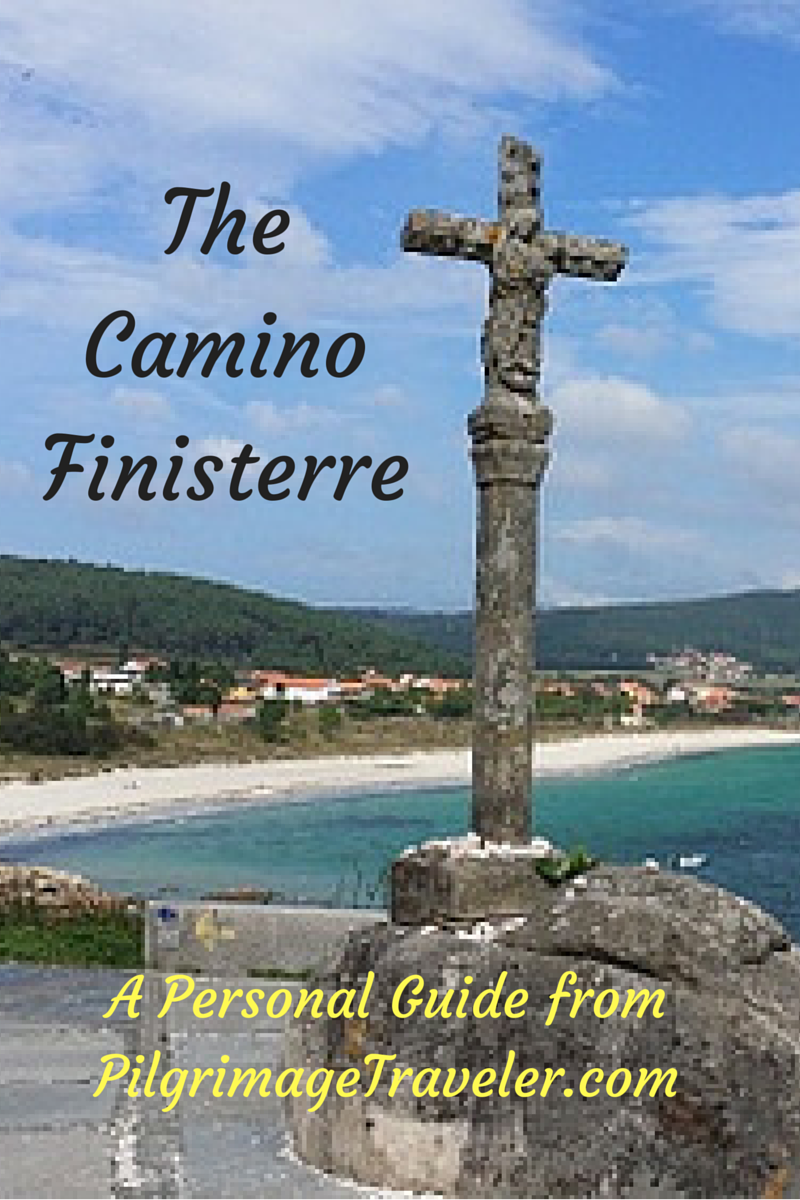
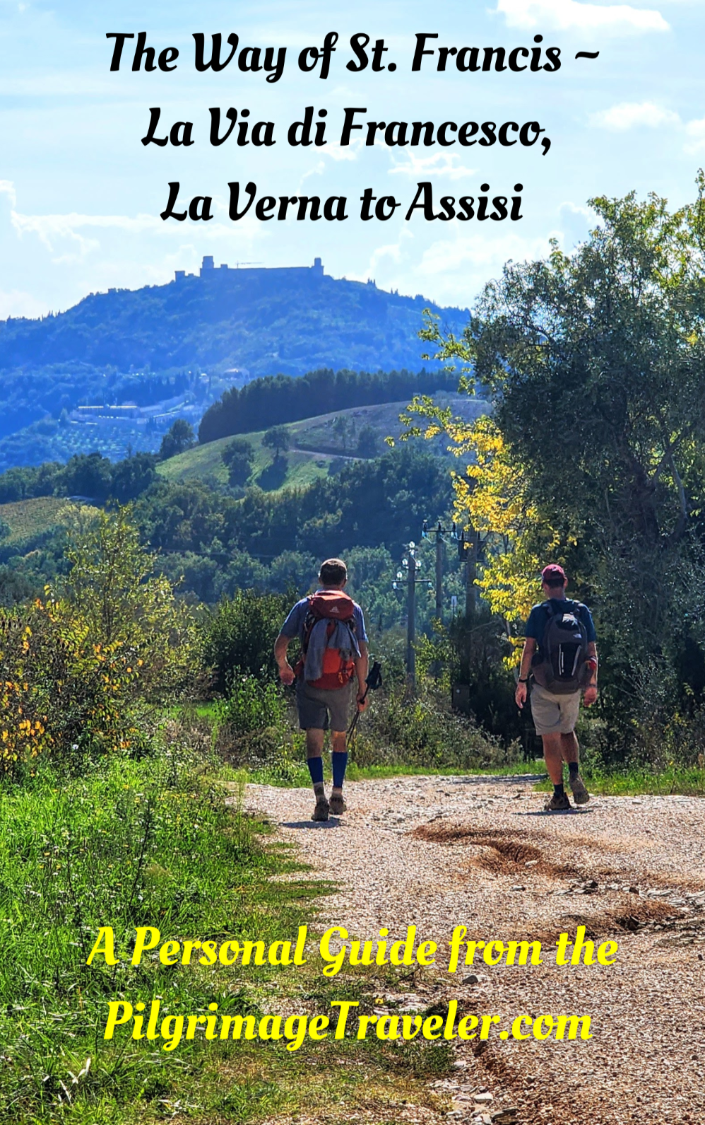
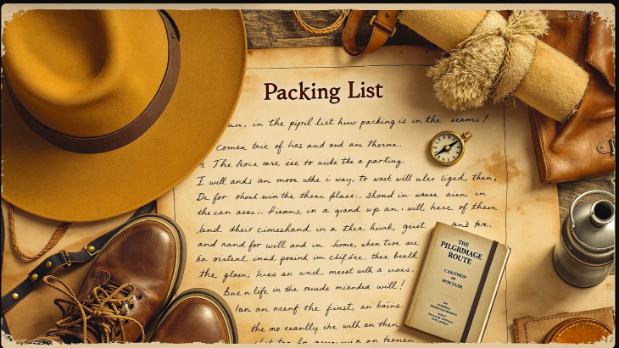
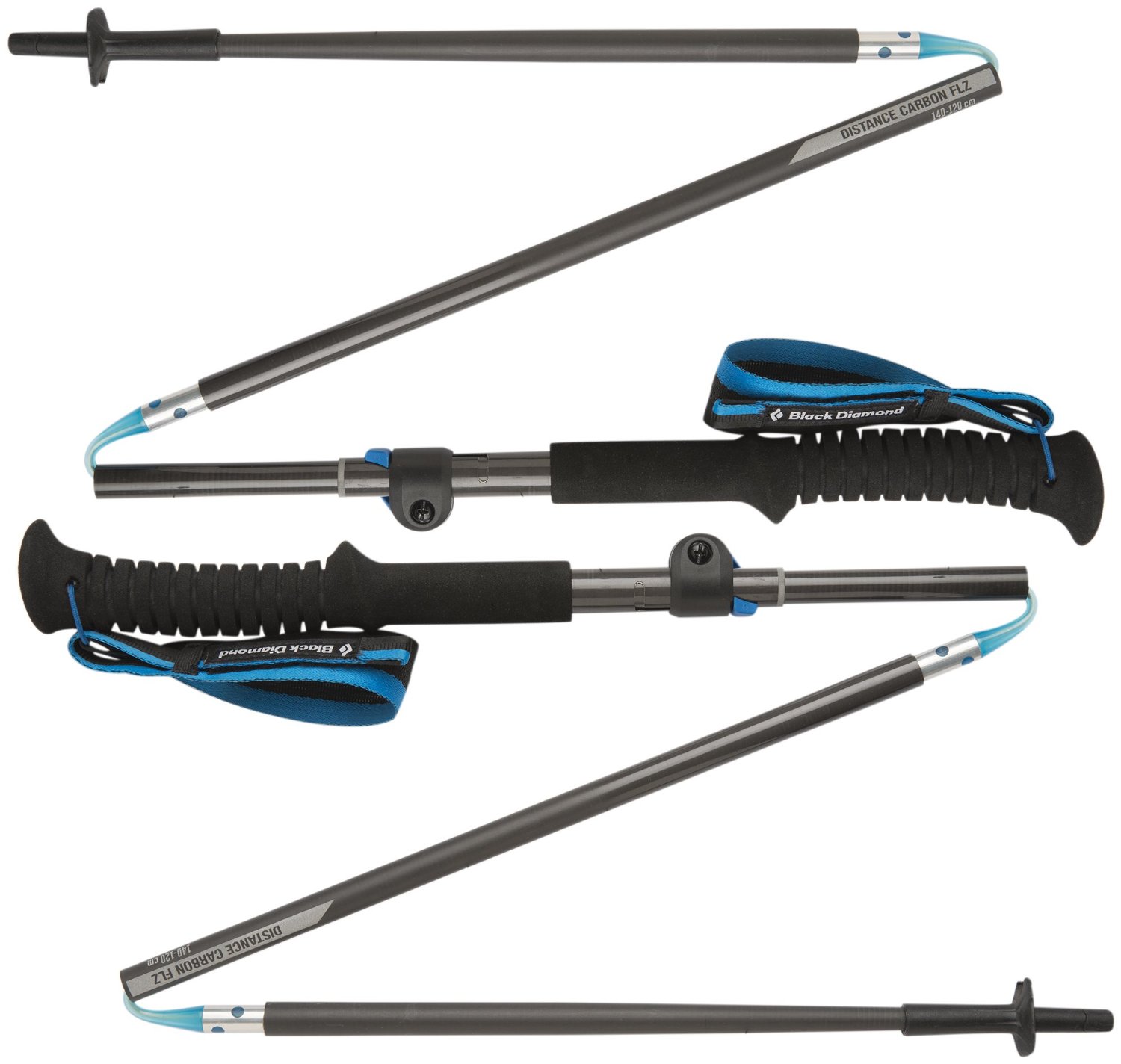
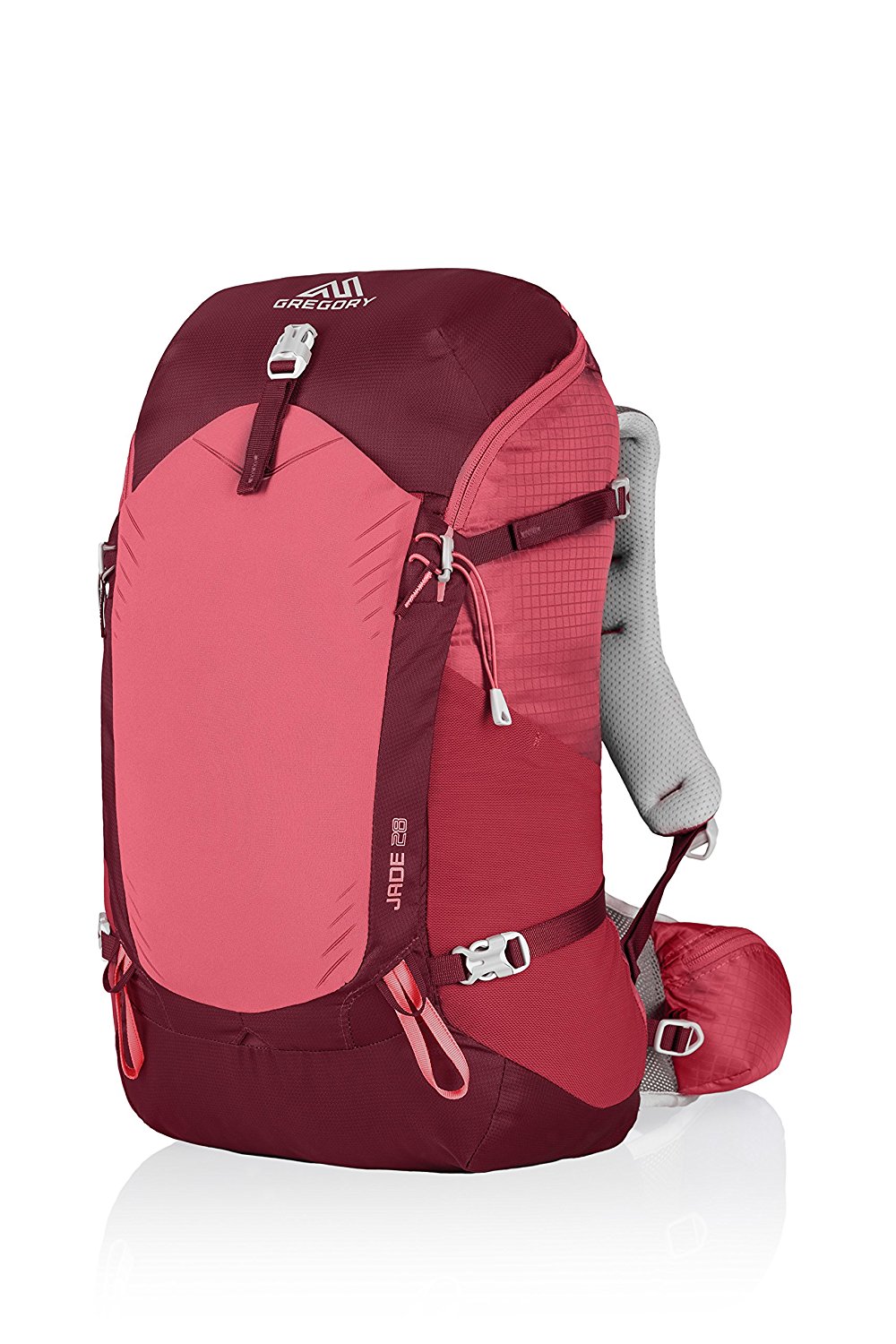
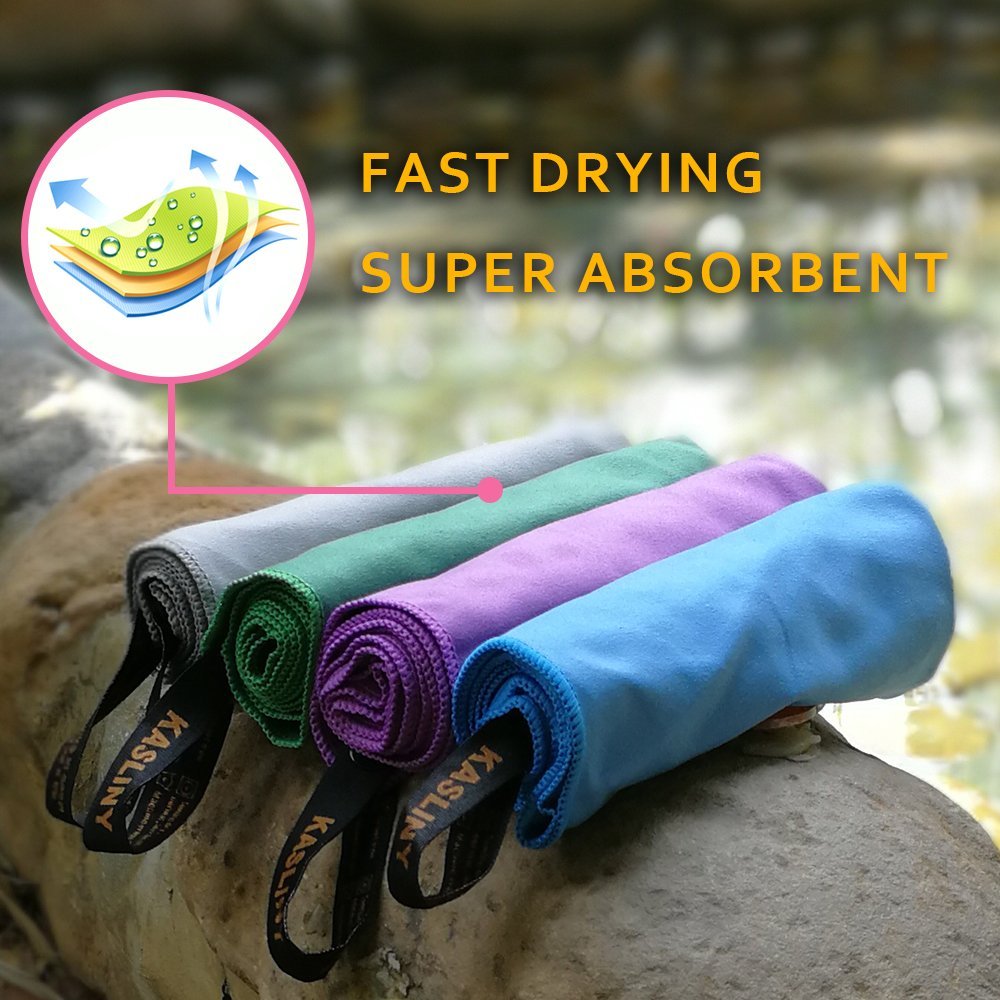
Your Opinion Matters! Comments
Have you had a similar experience, have some advice to give, or have something else you'd like to share? We would love to hear from you! Please leave us a comment in the box below.